Risultati: 46

Area STEM: Scienze biomediche e biotecnologie
Competenze: farmacologia cellulare e molecolare
Parole chiave: Alzheimer, coronavirus, Covid-19, farmaci, ictus, infarto miocardico, malattie degenerative, medicina preventiva, pandemie, sclerosi multipla, terapia, trauma cerebrale, vaccini
Regione: Lombardia
Funzione/Ruolo
Professoressa ordinaria di Farmacologia, Pro-Rettrice Vicaria, Pro-Rettrice delegata al coordinamento e alla promozione della Ricerca, Università degli studi di Milano. Presidente della Fondazione Filarete, Milano.
Percorso professionale
Dopo la laurea in Farmacia all'Università degli Studi di Milano nel 1979, prosegue gli studi attraverso una specializzazione in Tossicologia Sperimentale presso la stessa università nel 1984. Nel 1988 consegue un dottorato di ricerca in Medicina Sperimentale a Roma. Durante i suoi studi Maria Pia Abbracchio passa dei periodi di formazione all'estero: nel 1980 è Postdoctoral fellow del dipartimento di Farmacologia della University of Texas di Houston, nel 1992 è "Honorary Research Fellow" della London College University. Contemporaneamente prosegue la sua formazione e le sue ricerche prima come ricercatrice, poi come assistente alla docenza di Neuropsicofarmacologia ed infine nel 1998 come professoressa associata di Farmacologia presso l'Università di Milano. Dal 2002 è professoressa straordinaria e dal 2005 è professoressa ordinaria di Farmacologia nella stessa università. È attualmente responsabile di un gruppo di ricerca costituito da 12 giovani scienziati presso lo stesso ateneo.
Risultati scientifici
I suoi interessi scientifici si concentrano sui ruoli fisiopatologici delle purine, molecole di segnalazione universali che regolano crescita, sopravvivenza e differenziamento cellulare. Ha individuato un nuovo recettore purinergico coinvolto nel differenziamento delle cellule staminali ancora presenti nel cervello adulto e nel cuore, e sta sviluppando nuovi approcci terapeutici che possano, attraverso questo recettore, potenziare la riparazione dei danni presenti in malattie degenerative acute (ictus e trauma cerebrale, infarto miocardico) e croniche (Alzheimer, sclerosi multipla). Nel 2015 Maria Pia Abbracchio e colleghi nell'ambito di uno studio internazionale scoprono come il farmaco anti-infiammatorio per asmatici "Montelukast" possa stimolare la neurogenesi e quindi giovare nei casi di declino cognitivo. Partendo da studi precedenti che dimostravano la maggiore probabilità per pazienti con infezioni sistemiche di ammalarsi di Alzheimer (una malattia caratterizzata da infiammazione cerebrale), il gruppo di ricerca ha scoperto un recettore (GPR17) presente in cellule simil staminali del cervello che producono la mielina, sostanza che riveste i nervi. La scoperta di questo recettore si estende anche all'ippocampo (zona del cervello interessata nel processo di apprendimento e della memoria), e il gruppo di ricerca dimostra che la somministrazione del farmaco anti asmatico sperimentato su topi anziani migliora la capacità di apprendimento. La ricerca sul recettore purinergico GPR17 offre una speranza anche ai malati di sclerosi multipla. Mentre i farmaci attualmente disponibili intervengono a bloccare la progressione della malattia, affiancarli con farmaci che fanno ripartire l'azione di riparazione del danno indurrebbe il sistema nervoso a produrre nuova mielina e, sostenendo i prolungamenti nervosi con le sostanze di crescita presenti nella mielina, si potrebbe finalmente evitare quella neuro-degenerazione che è tipica delle forme progressive e genera disabilità.
Attività editoriali e pubblicazioni
È autrice di circa 180 pubblicazioni scientifiche, tra cui:
(2016) Vigan F, Schneider S, Cimino M, Bonfanti E, Gelosa P, Sironi L, Abbracchio MP, Dimou L. GPR17 expressing NG2-Glia: Oligodendrocyte progenitors serving as a reserve pool after injury. Glia, 64(2):287-99.
(2015) Marschallinger J, Schäffner I, Klein B, Gelfert R, Rivera FJ, Illes S, Grassner L, Janssen M, Rotheneichner P, Schmuckermair C, Coras R, Boccazzi M, Chishty M, Lagler FB, Renic M, Bauer HC, Singewald N, Blümcke I, Bogdahn U, Couillard-Despres S, Lie DC, Abbracchio MP, Aigner L. Structural and functional rejuvenation of the aged brain by an approved anti-asthmatic drug. Nature Communications, 6:8466.
(2015) Fumagalli M, Bonfanti E, Daniele S, Lecca D, Martini C, Trincavelli ML, Abbracchio MP. The ubiquitin ligase Mdm2 controls oligodendrocyte maturation by intertwining mTOR with G protein-coupled receptor kinase 2 in the regulation of GPR17 receptor desensitization. Glia, 63(12):2327-39.
(2014) Zaratin P, Battaglia MA & Abbracchio MP. Nonprofit foundations spur translational research. Trends in Pharmacological Sciences, 35, 552-5.
(2011) Ceruti S, Villa G, Fumagalli M, Colombo L, Magni G, Zanardelli M, Fabbretti E, Verderio C, van den Maagdenberg AM, Nistri A, Abbracchio MP. Calcitonin gene-related peptide-mediated enhancement of purinergic neuron/glia communication by the algogenic factor bradykinin in mouse trigeminal ganglia from wild-type and R192Q Cav2.1 Knock-in mice: implications for basic mechanisms of migraine pain. Journal of Neuroscience, 31:3638-49.
(2011) Fumagalli M, Daniele S, Lecca D, Lee PR, Parravicini C, Fields RD, Rosa P, Antonucci F, Verderio C, Trincavelli ML, Bramanti P, Martini C, Abbracchio MP. Phenotypic changes, signaling pathway, and functional correlates of GPR17-expressing neural precursor cells during oligodendrocyte differentiation. Journal of Biological Chemistry, 286:10593-604.
(2009) Ceruti S, Villa G, Genovese T, Mazzon E, Longhi R, Rosa P, Bramanti P, Cuzzocrea S, Abbracchio MP. The P2Y-like receptor GPR17 as a sensor of damage and a new potential target in spinal cord injury. Brain. 132:2206-18.
(2009) Di Virgilio F, Ceruti S, Bramanti P, Abbracchio MP. Purinergic signalling in inflammation of the central nervous system. Trends in Neurosciences, 32:79-87.
(2006) Abbracchio MP, Burnstock G, Boeynaems JM, Barnard EA, Boyer JL, Kennedy C, Knight GE, Fumagalli M, Gachet C, Jacobson KA, Weisman GA. International Union of Pharmacology LVIII: update on the P2Y G protein-coupled nucleotide receptors: from molecular mechanisms and pathophysiology to therapy. Pharmacological Reviews, 5:281-341.
(2006) Ciana P, Fumagalli M, Trincavelli ML, Verderio C, Rosa P, Lecca D, Ferrario S, Parravicini C, Capra V, Gelosa P, Guerrini U, Belcredito S, Cimino M, Sironi L, (2006) Tremoli E, Rovati GE, Martini C, Abbracchio MP. The orphan receptor GPR17 identified as a new dual uracil nucleotides/cysteinyl-leukotrienes receptor. EMBO Journal, 25:4615-27.
Riconoscimenti e premi
Fra i tanti riconoscimenti ricevuti, è stata nominata da Thomson Reuters "Highly cited scientist", definizione basata sul numero di citazioni ottenute nella letteratura scientifica internazionale che identifica gli scienziati autori delle pubblicazioni più influenti al mondo nel loro settore (meno dello 0,5% di tutti i ricercatori). Nel 2014 è stata insignita dell'onorificenza di Commendatore dell'Ordine al Merito della Repubblica Italiana. Nel 2016 è nominata "in nome di sua Maestà Filippo VI“ Foreign Member Of The Royal Academy Of Pharmacy Of Spain.
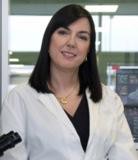
Area STEM: Scienze biomediche e biotecnologie
Competenze: biochimica, ricerca oncologica
Parole chiave: angiogenesi, chemioprevenzione, coronavirus, Covid-19, immunologia, metastasi in provetta, microambiente, ricerca di base, ricerca traslazionale, terapie biologiche, terapie geniche
Regione: Lombardia
Funzione/Ruolo
Responsabile del Laboratorio di Biologia Vascolare e Angiogenesi dell'IRCCS MultiMedica. Direttrice scientifica delle Fondazione Multimediaca Onlus. Professoressa di Patologia Generale all'Università di Milano Bicocca.
Percorso professionale
Dopo la laurea in chimica organica conseguita presso l'Università di Genova nel 1979, Adriana Albini si specializza in oncologia sia in Italia che all'estero. Lavora infatti al Max Planck Institute di Biochimica a Monaco di Baviera e per l'Istituto Superiore della Sanità Americano. Tornata in Italia dirige il laboratorio scientifico di Oncologia Molecolare dell'Istituto Nazionale per la ricerca sul Cancro, dove diventa Vice Direttrice Scientifica e Direttrice del Dipartimento di Oncologia Traslazionale. Nel 2002 consegue l'idoneità all'insegnamento universitario ed è a capo del Dipartimento "Infrastruttura Ricerca e Statistica" dell'Arcispedale Santa Maria Nuova di Reggio Emilia.
Attualmente Adriana Albini si occupa della direzione del Laboratorio di Biologia Vascolare ed Angiogenesi di IRCCS MultiMedica, a Sesto San Giovanni (MI) ed è Direttrice scientifica di Fondazione MultiMedica Onlus. E' inoltre docente a contratto di Patologia generale all'Università di Milano Bicocca.
Adriana Albini non ha mai smesso di condurre ricerca scientifica, i suoi principali campi di interesse sono: la biologia vascolare, l'invasione e metastasi, l'angiogenesi, il microambiente, la chemioprevenzione, l'immunopatogenesi legate all'AIDS e di tumori associati all'AIDS e la terapia genica con citochine (mediatori polipeptidici che permettono la comunicazione fra il sistema immunitario e le cellule di altri organi).
Risultati scientifici
Adriana Albini ha dedicato la maggior parte della sua carriera scientifica e didattica all'Oncologia Sperimentale. Attraverso la ricerca traslazionale (particolare disciplina che consente di convertire le scoperte scientifiche in terapie applicative) è riuscita a sviluppare nuove terapie nel campo dell'angiogenesi. Porta il suo nome la tecnica "metastasi in provetta" che ancora oggi consente nuove scoperte in tutto il mondo. Gli interessi di Adriana Albini non si fermano soltanto alla ricerca traslazionale, è infatti impegnata anche su temi quali la prevenzione nell'ambito delle malattie cronico-degenerative anche attraverso il suo ruolo di Presidente del Comitato Tecnico Scientifico dell'Osservatorio Salute Donna.
Attività editoriali e pubblicazioni
Adriana Albini è nel comitato editoriale delle più importanti riviste oncologiche internazionali, tra cui Journal of the National Cancer Institute, Cancer Research e Carcinogenesis. Si occupa di comunicazione scientifica ed è iscritta all'ordine dei giornalisti.
È autrice di più di trecento pubblicazioni scientifiche, tra cui:
(2016) Albini A, DeCensi A, Cavalli F, Costa A. Cancer Prevention and Interception: A New Era for Chemopreventive Approaches. Clinical Cancer Research, 22:4322-7.
(2015) Albini A, Cavuto S, Apolone G, Noonan DM. Strategies to Prevent "Bad Luck" in Cancer. Journal of the National Cancer Institute, 107.
(2014) Dallaglio K, Bruno A, Cantelmo AR, Esposito AI, Ruggiero L, Orecchioni S, Calleri A, Bertolini F, Pfeffer U, Noonan DM, Albini A. Paradoxic effects of metformin on endothelial cells and angiogenesis. Carcinogenesis, 35:1055-66.
(2014) Bruno A, Ferlazzo G, Albini A, Noonan DM. A Think Tank of TINK/TANKs: Tumor-Infiltrating/Tumor-Associated Natural Killer Cells in Tumor Progression and Angiogenesis. Journal of the National Cancer Institute, 106.
(2012) Albini A, Tosetti F, Li VW, Noonan DM, Li WW. Cancer prevention by targeting angiogenesis. Nature Reviews Clinical Oncology, 9:498-509.
(2010) Cammarota R, Bertolini V, Pennesi G, Bucci EO, Gottardi O, Garlanda C, Laghi L, Barberis MC, Sessa F, Noonan DM, Albini A. The tumor microenvironment of colorectal cancer: stromal TLR-4 expression as a potential prognostic marker. Journal of Translational Medicine, 8:112.
(2010) Albini A, Pennesi G, Donatelli F, Cammarota R, De Flora S, Noonan DM. Cardiotoxicity of anticancer drugs: the need for cardio-oncology and cardio-oncological prevention. Journal of the National Cancer Institute, 102:14-25.
(2010) Albini A, Noonan DM. The 'chemoinvasion' assay, 25 years and still going strong: the use of reconstituted basement membranes to study cell invasion and angiogenesis. Current Opinion in Cell Biology, 22:677-89.
(2007) Albini A, Sporn MB. The tumour microenvironment as a target for chemoprevention. Nature Reviews Cancer, 7:139-47.
(2007) Albini A, Benelli R. The chemoinvasion assay: a method to assess tumor and endothelial cell invasion and its modulation. Nature Protocols, 2:504-11.
Riconoscimenti e premi
Adriana Albini ha ricevuto numerosi premi e riconoscimenti:
Nel 1984, Premio internazionale "Max Buerger" conferito dalla società tedesca di gerontologia per il miglio lavoro inedito sull'invecchiamento.
Nel 1985, Premio internazionale "Doernkamp Zbinden" dell'Istituto John Hopkins di Baltimora per la messa a punto di un test in vitro per la valutazione del potenziale metastatico di cellule tumorali.
Nel 2000, Premio "Firenze Donna" per il settore ricerca scientifica.
Nel 2004, Premio "Amelia Earhart".
Nel 2007, Premio "Berlucchi" per la ricerca scientifica.
Nel 2010, Premio "Ippocrate", sezione "Il Ricercatore".
Nel 2013, Premio "ITWIIN" (Associazione Italiana Donne Inventrici e Innovatrici) per la "Migliore Donna Inventrice e Innovatrice" nella categoria Alta Formazione.
Nel 2014, Premio "Donne che ce l'hanno fatta" assegnato dall'assessore alle Pari Opportunità di Brescia.
Nel 2015, Premio "EUWIIN" (Network Europeo Donne Inventrici ed Innovatrici).
Nel 2016, Premio "Luigi Castagnetta" per la ricerca oncologica
Nel 2016, è stata inserita fra le "Top Italian Women Scientists", per l'impegno e l'alto numero di citazioni nella ricerca biomedica.
Nel 2021 è stata inserita dalla BBC nell'elenco delle "100 donne più influenti al mondo nel 2020", per aver guidato il cambiamento nell'anno della comparsa della pandemia da Covid-19.

Funzione/Ruolo
Segretario scientifico dell'Istituto di Ricerche Farmacologiche IRCCS Mario Negri e Coordinatrice delle Ricerche delle sedi di Bergamo e Ranica (BG) Bergamo.
Percorso professionale
Dopo la Laurea in Scienze Biologiche all'Università degli Studi di Milano, consegue il Dottorato di Ricerca presso l'Università di Maastricht in Olanda.Trascorre periodi di formazione all'estero, presso il Centre Regional de Transfusion Sanguigne di Strasburgo, il Guy's Hospital a Londra, il Brigham and Women's Hospital a Boston. Il suo gruppo di ricerca si sta attualmente occupando di medicina rigenerativa con l'obiettivo di studiare se le cellule staminali possano curare le malattie renali acute e croniche e di capire come il rene sia capace di rigenerarsi.
Risultati scientifici
I suoi interessi di ricerca riguardano la comprensione delle cause dello sviluppo di malattie renali e i meccanismi di progressione del danno che porta alla perdita della funzionalità del rene. Nel campo del rigetto del trapianto è stata tra i primi a utilizzare con successo la terapia genica con vettori virali per prevenire il rigetto del trapianto di organo solido senza ricorrere a farmaci antirigetto. Dal 2007 al 2012 collabora con l'Organizzazione Mondiale della Sanità per un progetto multicentrico internazionale sui fattori angiogenici come causa di gestosi, malattia della gravidanza. Nel 2007 riceve l'incarico di "Senior Fellow in Obstetric Medicine" presso l'Università di Oxford, Nuffield Department of Obstetrics & Gynaecology. E' stata membro della Visiting Committee di AERES (Agence d'Évaluation de la Recherche et de l'Enseignement Supèrieur) per la valutazione dei ricercatori all'Hopital Necker di Parigi. Ha fatto parte del Comitato Scientifico per la realizzazione dei più importanti meeting internazionali di nefrologia (Word Congress of Nephrology, WCN 2015, Capetown, Sudafrica e American Society of Nephrology ASN 2016 Meeting, Chicago, USA).
Attività editoriali e pubblicazioni
Ariela Benigni ha fatto parte di comitati editoriali di riviste scientifiche internazionali: Associate Editor di Kidney International, Journal of Nephrology, International Journal of Artificial Organs, e anche Academic Editor di Expert Opinion on Therapeutic Patents, PeerJ, PLoS One. Da gennaio 2015 è Editor in Chief della rivista Nephron. Dal 2017 al 2019 è stata membro della Commissione “Innovation and Discovery Task Force” dell’American Society of Nephrology.
È attualmente membro della Commissione esaminatrice di progetti di grande innovazione per la Dutch Kidney Foundation.
È autrice di oltre 320 pubblicazioni scientifiche su riviste internazionali, tra cui:
(2016) Gagliardini E, Novelli R, Corna D, Zoja C, Ruggiero B, Benigni A, Remuzzi G. B7-1 is not induced in podocytes of human and experimental diabetic nephropathy. Journal of American Society of Nephrology, 27:999-1005.
(2015) Morigi M, Perico L, Rota C, Longaretti L, Conti S, Rottoli D, Novelli R, Remuzzi G, Benigni A, Sirtuin 3-dependent mitochondrial dynamic improvements protect against acute kidney injury. The Journal of Clinical Investigation, 125:715-726.
(2015) Trionfini P, Benigni A, Remuzzi G, MicroRNAs in kidney physiology and disease. Nature Reviews Nephrology, 11:23-33.
(2014) Benigni A, Gagliardini E, Remuzzi G, Abatacept in B7-1-positive proteinuric kidney disease. The New England Journal of Medicine, 370:1261-1263.
(2013) Parvanova A, van der Meer IM, Iliev I, Perna A, Gaspari F, Trevisan R, Bossi A, Remuzzi G, Benigni A, Ruggenenti P; for the Daglutril in Diabetic Nephropathy Study Group. Effect on blood pressure of combined inhibition of endothelin-converting enzyme and neutral endopeptidase with daglutril in patients with type 2 diabetes who have albuminuria: a randomised, crossover, double-blind, placebo-controlled trial. Lancet Diabetes Endocrinol, 1:19-27.
(2013) Remuzzi G, Benigni A, Finkelstein FO, Grunfeld JP, Joly D, Katz I, Liu ZH, Miyata T, Perico N, Rodriguez-Iturbe B, Antiga L, Schaefer F, Schieppati A, Schrier RW, Tonelli M, Kidney failure: aims for the next 10 years and barriers to success. Lancet, 382:353-362.
(2011) Mele C, Iatropoulos P, Donadelli R, Calabria A, Maranta R, Cassis P, Buelli S, Tomasoni S, Piras R, Krendel M, Bettoni S, Morigi M, Delledonne M, Pecoraro C, Abbate I, Capobianchi MR, Hildebrandt F, Otto E, Schaefer F, Macciardi F, Ozaltin F, Emre S, Ibsirlioglu T, Benigni A, Remuzzi G, Noris M, the PodoNet Consortium. MYO1E Mutations and Childhood Familial Focal Segmental Glomerulosclerosis. The New England Journal of Medicine, 365(4):295-306.
(2011) Benigni A, Morigi M, Rizzo P, Gagliardini E, Rota C, Abbate, M Ghezzi S, Remuzzi A, Remuzzi G. Inhibiting angiotensin-converting enzyme promotes renal repair by limiting progenitor cell proliferation and restoring the glomerular architecture. American Journal Of Pathology, 179(2):628-38.
(2010) Benigni A, Morigi M, Remuzzi G. Kidney regeneration. Lancet, 375(9722):1310-7.
(2009) Benigni A, Corna D, Zoja C, Sonzogni A, Latini R, Salio M, Conti S, Rottoli D, Longaretti L, Cassis P, Morigi M, Coffman TM, Remuzzi G. Disruption of the Ang II type 1 receptor promotes longevity in mice. The Journal of Clinical Investigation, 119(3):524-30.
Riconoscimenti e premi
Nel 2012 ha ottenuto la Benemerenza della città di Bergamo per i suoi studi in campo scientifico.
Nel 2019 le sono stati assegnati il Premio Internazionale “Tomoh Masaki” e il Premio internazionale “Trotula 2019” dell’Università Nuova Scuola Medica Salernitana
Nel 2020 le è stato consegnato il “Premio A.R.M.R 2020” dalla Fondazione Aiuti per la Ricerca sulle Malattie Rare.
Nel 2021 è stata insignita dal Presidente della Repubblica Sergio Mattarella dell’onorificenza di Cavaliere Ordine al Merito della Repubblica Italiana.

Funzione/Ruolo
Professoressa ordinaria di Anestesiologia all’Università degli Studi di Parma e Direttrice UOC (Unità Operativa Complessa) presso l'Azienda Ospedaliera-Universitaria di Parma.
Percorso professionale
Laureata nel 2000 in Medicina e Chirurgia presso l’Università Statale di Milano, consegue il diploma di Specializzazione in Anestesia e Rianimazione presso l’Università Vita-Salute San Raffaele nel 2004. Nello stesso anno inizia la carriera di Dirigente Medica presso il Dipartimento di Anestesia e Terapia Intensiva Cardiochirurgica dell’Ospedale San Raffaele di Milano divenendo, nel 2017, direttrice UOC (Unità Operativa Complessa) presso l'Azienda Ospedaliera-Universitaria di Parma.
All’attività clinica affianca quella accademica e di ricerca: nel 2007 è docente nel corso teorico-pratico "La cardio-protezione" e inizia l’attività di correlatrice per le tesi di laurea e di specializzazione. Dal 2011 è professoressa a contratto all’Università Vita-Salute San Raffaele: alla Scuola di Specializzazione Anestesia e Rianimazione e alla Scuola di Specializzazione in Cardiochirurgia. Nel gennaio 2014 consegue l’abilitazione scientifica nazionale, come Professoressa di seconda fascia e, nel marzo 2017, l’abilitazione per la prima fascia. Nel dicembre dello stesso anno diviene professoressa ordinaria di Anestesiologia presso l’Università degli Studi di Parma.
Risultati scientifici
L’attività di ricerca di Elena Bignami si concentra soprattutto nell’ambito della Cardio-anestesia, indagando i fattori che possono influenzare l’outcome del paziente sottoposto a cardiochirurgia, in particolare la protezione renale, cardiaca e respiratoria. Nel corso della sua carriera, che da sempre affianca l’attività clinica a quella accademica, ha partecipato a numerosi progetti internazionali, fra cui: The effect of isoflurane on myocardial infarction and mortality in cardiac and non-cardiac surgery. A metanalysis of randomized controlled studies (2008), Use of halogenated anaesthetics in cardiac surgery (2012), Ruolo della Ouabaina Endogena come marcatore di danno renale in chirurgia cardiaca e vascolare (2015), CPBVent (Mechanical Ventilation during cardiac surgery) multicenter randomized controlled trial (2015), Expiratory flow limitation and mechanical ventilation during cardiopulmonary bypass in cardiac surgery (2016), Driving Pressure And EFL in Adult Cardiac Surgery (2017).
Attività editoriali e pubblicazioni
Elena Bignami ha contribuito alla realizzazione dei seguenti manuali di anestesia e terapia Intensiva:
Kirby, Taylor, Civetta (eds), Manuale di Terapia Intensiva, edizione italiana a cura di G. Torri, Delfino Editore, Roma, 2002; Chiesa, Melissano, Zangrillo (eds), Thoraco-Abdominal Aorta Surgical and Anesthetic Management, Springer, 2010; De Gaudio, Romagnoli (eds), Neuromuscolar Blocking Agents, Springer, 2017.
È autrice di più di 150 pubblicazioni scientifiche su riviste nazionali ed internazionali fra cui:
(2016) Bignami E, Guarnieri M, Saglietti F, Belletti A, Trumello C, Giambuzzi I, Monaco F, Alfieri O. Mechanical ventilation during cardiopulmonary bypass. Journal of cardiothoracic and vascular anesthesia, 30(6):1668-1675.
(2013) Bignami E, Casamassima N, Frati E, Lanzani C, Corno L, Alfieri O, Gottlieb S, Simonini M, Shah KB, Mizzi A, Messaggio E, Zangrillo A, Ferrandi M, Ferrari P, Bianchi G, Hamlyn JM, Manunta P. Preoperative endogenous ouabain predicts acute kidney injury in cardiac surgery patients. Critical care medicine, 41(3) 744.
(2010) Bignami E, Landoni G, Biondi-Zoccai, Boroli F, Messina M, Dedola E, Nobile L, Buratti L, Sheiban I, Zangrillo A. Epidural analgesia improves outcome in cardiac surgery: a meta-analysis of randomized controlled trials. Journal of cardiothoracic and vascular anesthesia, 24(4): 586-597.
(2009) Bignami E, Biondi-Zoccai G, Landoni G , Fochi O, Testa V, Sheiban Im Giunta F, Zangrillo A. Volatile anesthetics reduce mortality in cardiac surgery. Journal of cardiothoracic and vascular anesthesia, 23(5): 594-599.
(2007) Landoni G, Biondi Zoccani G, Zangrillo A, Bignami E, D’Avolio S, Marchetti C, Calabrò MG, Fochi O, Guarracino F, Tritapepe L, De Hert, S, Torri G, Desflurane and sevoflurane in cardiac surgery: a meta-analysis of randomized clinical trials. Journal of cardiothoracic and vascular anesthesia, 21(4): 502-511.
Riconoscimenti e premi
Nel dicembre 2017, è stata insignita del premio “Mimmo Mileto e Salvatore Filocamo” alla ricerca e all'innovazione scientifica. Nel 2015 ha vinto, come Principal Investigator, l’ESA Research Project Grant in 2016, con il progetto “VENTilation during CardioPulmonary Bypass (CPBVENT 2014) for cardiac surgery: a multicenter randomized controlled trial (N° clinical trials NCT 02090205)”.
Il progetto “The effect of isoflurane on myocardial infarction and mortality in cardiac and non-cardiac surgery. A metanalysis of randomized controlled studies" di cui è stata Principal Investigator è risultato Vincitore del Bando AIFA 2008 per la ricerca indipendente sui farmaci.
Nel 2006, ha vinto il premio "Lab Avant Garde Come Fare Una Ricerca Oggi: ANESTESIA A TERAPIA INTENSIVA: COSA DOMANI?" con il progetto: "Effetto dell'emodiluizione moderata in Circolazione Extra-Corporea sull'outcome postoperatorio in pazienti cardiochirurgici".

Funzione/Ruolo
Direttrice dell'Oncologia dell'Ospedale Bellaria, Azienda Usl IRCCS Scienze Neurologiche di Bologna
Percorso professionale
Nel luglio 1981 si laurea in Medicina e Chirurgia all'Università degli studi di Padova con una la tesi sulla "Peptichemio nel trattamento del Carcinoma Ovarico". Successivamente si specializza nello studio dei tumori, conseguendo la specializzazione in Oncologia Medica con una tesi dal titolo: "Trattamento combinato chemio-chirurgico nel microcitoma polmonare". Frequenta il Radiotherapy Department Royal Marsden, Londra, l'Oncology Department MD Anderson Cancer Center di Houston, Texas, il Memorial Sloan Kettering Cancer Center, New York, USA. Prosegue la sua carriera di ricerca e diventa Direttrice della struttura semplice di Neuro-Oncologia, Azienda Ospedale-Università di Padova. Dal 2006 è Direttrice dell'Unità Operativa Complessa di Oncologia Medica AUSL di Bologna. È Principal Investigator mondiale di numerosi studi clinici.
Risultati scientifici
Alba Brandes ha steso la linea guida per il trattamento dei tumori cerebrali. E continua a fornire il suo contributo in qualità di Consulente Esperta dell' Agenzia europea per i medicinali (EMA Expert), Membro del Comitato Scientifico Internazionale per la valutazione di progetti oncologici presso il National Institute of the Cancer (INCa), Francia, Revisora linee guida oncologiche dell' Istituto Oncologico della Svizzera Italiana (IOSI), Membro del Response Assessment in Pediatric Neuro-Oncology (RAPNO), Membro dell'Immunotherapy Response Assessment in Neuro-Oncology (RANO), Membro del Gruppo Ristretto European Society of Medical Oncolgy (ESMO) per il trattamento dei Tumori Cerebrali, Coordinatrice Nazionale e Internazionale di Progetti di Ricerca dell'European Organization for Research and Treatment of Cancer (EORTC)/National Cancer Institute of Canada (NCIC), Coordinatrice delle Linee Guida Nazionali dell'Associazione Italiana di Oncologia Medica (AIOM) per il trattamento delle Neoplasie cerebrali, Referee ed esperta Nazionale dal 2009 per la Commissione Nazionale per la Formazione Continua: collaborazione (ECM nazionale) per la valutazione culturale e scientifica degli eventi e dei progetti formativi aziendali; Coordinatrice Scientifica (Principal Investigator) del progetto finanziato Fondazione Celeghin "Role of MGMT methylation status at time of diagnosis and recurrence for patients with glioblastoma: exploratory analysis and clinical implications", Membro del gruppo regionale dei tumori rari, Corresponsabile del percorso Aziendale PDTA Mammella e Polmone-AUSL Bologna, Responsabile Clinica PDTA Tumori cerebrali AUSL Bologna, Membro della Commissione Oncologica dell'Emilia Romagna.
Attività editoriali e pubblicazioni
Autrice di numerosi articoli scientifici nazionali ed internazionali tra cui:
(2016) Baumert BG, Hegi ME, van den Bent MJ, von Deimling A, Gorlia T, Hoang-Xuan K, Brandes AA, Kantor G, Taphoorn MJ, Hassel MB, Hartmann C, Ryan G, Capper D, Kros JM, Kurscheid S, Wick W, Enting R, Reni M, Thiessen B, Dhermain F, Bromberg JE, Feuvret L, Reijneveld JC, Chinot O, Gijtenbeek JM, Rossiter JP, Dif N, Balana C, Bravo-Marques J, Clement PM, Marosi C, Tzuk-Shina T, Nordal RA, Rees J, Lacombe D, Mason WP, Stupp R. Temozolomide chemotherapy versus radiotherapy in high-risk low-grade glioma (EORTC 22033-26033): a randomised, open-label, phase 3 intergroup study. The Lancet Oncology. pii: S1470-2045(16)30313-8. doi: 10.1016/S1470-2045(16)30313-8. [Epub ahead of print]. PMID: 27686946
(2016) Reijneveld JC, Taphoorn MJ, Coens C, Bromberg JE, Mason WP, Hoang-Xuan K, Ryan G, Hassel MB, Enting RH, Brandes AA, Wick A, Chinot O, Reni M, Kantor G, Thiessen B, Klein M, Verger E, Borchers C, Hau P, Back M, Smits A, Golfinopoulos V, Gorlia T, Bottomley A, Stupp R, Baumert BG. Health-related quality of life in patients with high-risk low-grade glioma (EORTC 22033-26033): a randomised, open-label, phase 3 intergroup study. The Lancet Oncology. pii: S1470-2045(16)30305-9. doi: 10.1016/S1470-2045(16)30305-9. [Epub ahead of print] PMID: 27686943
(2016) Schiffgens S, Wilkens L, Brandes AA, Meier T, Franceschi E, Ermani M, Hartmann C, Sandalcioglu IE, Dumitru CA. Sex-specific clinicopathological significance of novel (Frizzled-7) and established (MGMT, IDH1) biomarkers in glioblastoma. Oncotarget. doi: 10.18632/oncotarget.10465. [Epub ahead of print] PMID: 27409829
(2016) Wick W, Gorlia T, Bady P, Platten M, van den Bent MJ, Taphoorn MJ, Steuve J, Brandes AA, Hamou MF, Wick A, Kosch M, Weller M, Stupp R, Roth P, Golfinopoulos V, Frenel JS, Campone M, Ricard D, Marosi C, Villa S, Weyerbrock A, Hopkins K, Homicsko K, Lhermitte B, Pesce G, Hegi ME. Phase II Study of Radiotherapy and Temsirolimus versus Radiochemotherapy with Temozolomide in Patients with Newly Diagnosed Glioblastoma without MGMT Promoter Hypermethylation (EORTC 26082). Clinical Cancer Research. [Epub ahead of print] PMID: 27143690
(2016) Brandes AA, Finocchiaro G, Zagonel V, Reni M, Caserta C, Fabi A, Clavarezza M, Maiello E, Eoli M, Lombardi G, Monteforte M, Proietti E, Agati R, Eusebi V, Franceschi E. AVAREG: a phase II, randomized, noncomparative study of fotemustine or bevacizumab for patients with recurrent glioblastoma. Neuro Oncology, 18(9):1304-12. doi: 10.1093/neuonc/now035. PMID: 26951379
(2016) Brandes AA, Carpentier AF, Kesari S, Sepulveda-Sanchez JM, Wheeler HR, Chinot O, Cher L, Steinbach JP, Capper D, Specenier P, Rodon J, Cleverly A, Smith C, Gueorguieva I, Miles C, Guba SC, Desaiah D, Lahn MM, Wick W. A Phase II randomized study of galunisertib monotherapy or galunisertib plus lomustine compared with lomustine monotherapy in patients with recurrent glioblastoma. Neuro Oncology, 18(8):1146-56. doi: 10.1093/neuonc/now009. PMID: 26902851
(2015) Okada H, Weller M, Huang R, Finocchiaro G, Gilbert MR, Wick W, Ellingson BM, Hashimoto N, Pollack IF, Brandes AA, Franceschi E, Herold-Mende C, Nayak L, Panigrahy A, Pope WB, Prins R, Sampson JH, Wen PY, Reardon DA. Immunotherapy response assessment in neuro-oncology: a report of the RANO working group. The Lancet Oncology, 16(15): e534-42.
(2015) Pignata S, Lorusso D, Scambia G, Sambataro D, Tamberi S, Cinieri S, Mosconi AM, Orditura M, Brandes AA, Arcangeli V, Panici PB, Pisano C, Cecere SC, Di Napoli M, Raspagliesi F, Maltese G, Salutari V, Ricci C, Daniele G, Piccirillo MC, Di Maio M, Gallo C, Perrone F; MITO 11 investigators. Pazopanib plus weekly paclitaxel versus weekly paclitaxel alone for platinum-resistant or platinum-refractory advanced ovarian cancer (MITO 11): a randomised, open-label, phase 2 trial. The Lancet Oncolology,16(5):561-8. doi: 10.1016/S1470-2045(15)70115-4. Epub 2015 Apr 14. PMID: 25882986
(2015) Brandes AA, Bartolotti M, Marucci G, Ghimenton C, Agati R, Fioravanti A, Mascarin M, Volpin L, Ammannati F, Masotto B, Gardiman MP, De Biase D, Tallini G, Crisi G, Bartolini S, Franceschi E.New perspectives in the treatment of adult medulloblastoma in the era of molecular oncology. Critical Review in Oncology/Hematology, 94(3):348-59. doi: 10.1016/j.critrevonc.2014.12.016. Epub 2014 Dec 31. Review. PMID: 25600839
(2014) Brandes AA et al. Pattern of care and effectiveness of treatment for glioblastoma patients in the real world: Results from a prospective population-based registry. Could survival differ in a high-volume center?. Neuro-Oncology Practice, 1(4):166-171.
Riconoscimenti e premi
Nel 2001 viene nominata Cavaliere dell'Ordine al Merito della Repubblica Italiana per la sua attività di ricerca in ambito oncologico. Nel 2012 la Columbia University e la Cornell University insigniscono Alba Brandes del premio "Gruson", per la prima volta conferito a un ricercatore italiano per i suoi contributi nel campo della neuroncologia.
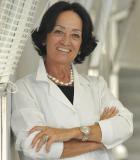
Funzione/Ruolo
Professoressa ordinaria di Endocrinologia all'Università degli Studi di Firenze
Percorso professionale
Laureata in Medicina e Chirurgia nel 1977 presso l'Università degli Studi di Firenze, si specializza nel 1980 in endocrinologia presso lo stesso ateneo, per poi conseguire nel 1988 il Dottorato di Ricerca in Biologia Molecolare all'Università degli Studi di Roma. Nel 2003 diventa ordinaria di Endocrinologia e Malattie del Metabolismo. Alla carriera accademica affianca quella clinica: dal 1992 è responsabile del Centro di Riferimento Tumori Endocrini Ereditari dell'Azienda Ospedaliero-Universitaria Careggi, dove dal 2007 è anche Direttrice dell'Unità Operativa di Malattie del Metabolismo Minerale ed Osseo. Dal 2016 coordina due European Reference Networks su malattie endocrine rare e su malattie rare dell'osso presso la suddetta azienda.
Risultati scientifici
Da anni impegnata nel campo della prevenzione e della cura delle malattie dello scheletro, non solo come medica e ricercatrice di spessore internazionale, con oltre 650 pubblicazioni su peer-reviewed Journals, ma anche come promotrice, attraverso il suo ruolo di Presidente di F.I.R.M.O (Fondazione Raffella Becagli) che si occupa di sostenere la prevenzione e la cura delle malattie dello scheletro, di un'attiva campagna di sensibilizzazione, tesa a diffondere, anche al di fuori della cerchia degli scienziati e degli ammalati, la conoscenza di queste patologie troppo poco note eppure capillarmente diffuse. Si adopera nel convogliare l'attenzione dell'opinione pubblica sui problemi delle malattie rare delle ossa, sulle malattie endocrine rare e sull'osteoporosi e nel sostenere campagne di comunicazione e prevenzione.
Attività editoriali e pubblicazioni
E' autrice di numerose pubblicazioni scientifiche, tra cui:
(1986) Brandi ML, Fitzpatrick LA, Coon HG, Aurbach GD. Bovine parathyroid cells: cultures maintained for more than l40 population doublings. Proceeding of the National Academy Society of the United States of America, 83:1709-1713.
(1986) Brandi ML, Aurbach GD, Fitzpatrick LA, Quarto R, Spiegel AM, Bliziotes MM, Norton JA, Doppman JL, Marx SJ. Parathyroid mitogenic activity in plasma from patients with multiple endocrine neoplasia type I. The New England Journal of Medicine, 314:1287-1293.
(1987) Sakaguchi K, Santora A, Zimering M, Curcio F, Aurbach GD, Brandi ML. Functional epithelial cell line cloned from rat parathyroid glands. Proceeding of the National Academy Society of the United States of America, 84:3269-3273.
(1992) Gattei V, Bernabei PA, Pinto A, Bezzini R, Ringressi A, Formigli L, Tanini A, Attadia V, Brandi ML. Phorbol ester induced osteoclast-like differentiation of a novel human leukemic cell line (FLG 29.1). The Journal of Cell Biology, 116:437-447.
(2001) Brandi ML, Gagel RF, Angeli A, Bilezikian JP, Beck-Peccoz P, Bordi C, Conte-Devolx B, Falchetti A, Gheri RG, Libroia A, Lips CJM, Lombardi G, Mannelli M, Pacini F, Ponder BA, Raue F, Skogseid B, Tamburrano G, Thakker RV, Thompson NW, Tommasetti P, Tonelli F, Wells SA Jr, Marx SJ. Guidelines for Diagnosis and Therapy of MEN Type1 and Type 2. The journal of Clinical Endocrinology & Metabolism, 86:5658-5671.
(2004) Khosla S, Riggs BL, Atkinson EJ, Oberg AL, Mavilia C, Del Monte F, Melton LJ 3rd, Brandi ML. Relationship of estrogen receptor genotypes to bone mineral density and to rates of bone loss in men. The Journal of Clinical Endocrinology & Metabolism, 89:1808-1816.
(2004) Falchetti A, Di Stefano M, Marini F, Del Monte F, Mavilia C, Strigoli D, De Feo ML, Isaia G, Masi L, Amedei A, Cioppi F, Ghinoi V, Maddali Bongi S, Di Fede G, Sferrazza C, Rini GB, Melchiorre D, Matucci-Cerinin M, Brandi ML. Two novel mutation at exon 8 of the Sequestosome 1 (SQSTM1) gene in an Italian series of patients affected by Paget's disease of bone (PDB). The Journal of Bone and Mineral Research, 19:1013-1017.
(2008) Luzi E, Marini F, Sala SC, Tognarini I, Galli G, Brandi ML. Osteogenic Differentiation of Human Adipose Tissue-Derived Stem Cells Is Modulated by the miR-26a Targeting of the SMAD1 Transcription Factor. The Journal of Bone and Mineral Research, 23(2):287-95.
(2012) Luzi E, Marini F, Tognarini I, Galli G, Falchetti A, Brandi ML, The Regulatory Network Menin-MicroRNA 26a As a Possible Target for RNA-Based Therapy of Bone Diseases.MulecularTherapyNucleic Acids, 22(2):103-8.
(2016) Brandi ML, Bilezikian JP, Shoback D, Bouillon R, Clarke BL, Thakker RV, Khan AA, Potts JT Jr. Management of Hypoparathyroidism: Summary Statement and Guidelines.The Journal of Clinical Endocrinology & Metabolism, Jun101(6):2273-83.

Area STEM: Scienze biomediche e biotecnologie
Competenze: applicazioni cliniche dell’intelligenza artificiale, clinica fisiopatologica in epatologia e gastroenterologia, management sanitario, ricerca traslazionale e clinico-patologica
Parole chiave: biologia molecolare, cirrosi epatica, epatite, epatocarcinoma, epatopatie, fegato, malattie delle vie biliari, statosi, virus dell'epatite B, virus dell'epatite C, virus dell'epatite D
Regione: Toscana
Funzione/Ruolo
Professoressa straordinaria di Medicina Interna presso il Dipartimento di Medicina Clinica e Sperimentale dell’Università di Pisa.
Percorso professionale
Dopo la laureata in Medicina e Chirurgia e la specializzazione in Malattie dell’Apparato Digerente conseguite rispettivamente nel 1984 e 1988 presso l’Università di Torino inizia il percorso professionale come assistente a tempo pieno dal 1988 e dal 1993 aiuto a tempo pieno presso la Divisione di Gastroenterologia, Ospedale S.Giovanni Battista di Torino. Nel 1989 consegue il diploma di perfezionamento in Diagnostica con Ultrasuoni in Medicina Interna presso l’Università degli Studi di Bologna. Nel 1998 si trasferisce a Pisa come Dirigente Medica di Primo Livello presso l’Unità Operativa Complessa di Gastroenterologia ed Epatologia, Spedali Riuniti di Santa Chiara e nel 2001 ne assume l’incarico di Direttrice facente funzioni. Dal 1999 dirige il Centro di Riferimento della Regione Toscana per le Epatopatie Croniche e i Tumori del Fegato. Dal 2003 è Direttrice dell’Unità Operativa Complessa di Epatologia e del Laboratorio di Fisiopatologia Epatica dell’ Azienda Ospedaliero Universitaria Pisana. Dal 2016 è Professoressa Straordinaria di Medicina Interna presso il Dipartimento di Medicina Clinica e Sperimentale dell’Università di Pisa e dal 2020 Direttrice del Dipartimento Assistenziale Integrato delle Specialità Mediche dell’Azienda Ospedaliero Universitaria Pisana.
Risultati scientifici
Maurizia Rossana Brunetto ha iniziato l’attività di ricerca biomedica nel 1981 come Allieva interna presso l’Istituto di Patologia Generale dell’Università di Torino e nel 1982 con uno Stage presso il Laboratorio del Department of Biochemistry della Brunel University Uxbridge, GB occupandosi del danno epatico da perossidazione lipidica. Successivamente si è dedicata allo studio della patogenesi e terapia dell'epatite B e nel 1989, Visiting Scientist presso il laboratorio di biologia molecolare del Max Plank Institut fuer Biochemie di Monaco di Baviera, Germania ha isolato e caratterizzato il mutante del virus dell’epatite B, difettivo per la secrezione del HBeAg, che causa la forma HBeAg negativa, anti-HBe positiva dell’epatite cronica B definita clinicamente presso la Divisione di Gastroenterologia dell’Ospedale Molinette di Torino. Nel 1993 e 1994 ha proseguito gli studi sulle implicazioni patogenetiche dell’eterogeneità virale dei virus epatitici (HBV e HCV) presso il II Dipartimento di Virologia del National Institute of Health di Tokyo, Giappone. Ha contribuito alla definizione dell’impatto del trattamento con Interferone dell’epatite cronica B e C in relazione al rischio di sviluppare l’ epatocarcinoma, del ruolo di marcatori virali quali HBsAg, HBcrAg nella gestione clinica dei portatori di infezione da HBV e delle linee guida nazionali e internazionali per il trattamento dell’epatite cronica B. Ha partecipato a disegno sperimentale e\o conduzione degli studi registrativi dei principali farmaci per il trattamento dell'epatite cronica B, D e C.
Attività editoriali e pubblicazioni
Maurizia Rossana Brunetto ha al suo attivo oltre 250 pubblicazioni. Di seguito una selezione.
(2021) Brunetto MR, Carey I, Maasoumy B, Marcos-Fosch C, Boonstra A, Caviglia GP, Loglio A, Cavallone D, Scholtes C, Ricco G, Smedile A, Riveiro-Barciela M, van Bömmel F, van der Eijk A, Zoulim F, Berg T, Cornberg M, Lampertico P, Agarwal K, Buti M. Incremental value of HBcrAg to classify 1582 HBeAg negative individuals in chronic infection without liver disease or hepatitis Aliment Pharmacol Ther.2021, Jan 19 doi:10.111/apt.16258
(2013) Brunetto MR, Marcellin P, Cherubini B, Yurdaydin C, Farci P, Hadziyannis SJ, Rothe V, Regep L, Bonino F. Response to peginterferon alfa-2a (40KD) in HBeAg-negative CHB: on-treatment kinetics of HBsAg serum levels vary by HBV genotype. J Hepatol. 2013 Dec;59(6):1153-9. doi: 10.1016/j.jhep.2013.07.017. Epub 2013 Jul 18. PubMed PMID: 23872601.
(2010) Brunetto MR, Oliveri F, Colombatto P, Moriconi F, Ciccorossi P, Coco B, Romagnoli V, Cherubini B, Moscato G, Maina AM, Cavallone D, Bonino F. Hepatitis B surface antigen serum levels help to distinguish active from inactive hepatitis B virus genotype D carriers. Gastroenterology. 2010 Aug;139(2):483-90. doi:10.1053/j.gastro.2010.04.052. Epub 2010 May 5. PubMed PMID: 20451520.
(2009) Brunetto MR, Moriconi F, Bonino F, Lau GK, Farci P, Yurdaydin C, Piratvisuth T, Luo K, Wang Y, Hadziyannis S, Wolf E, McCloud P, Batrla R, Marcellin P. Hepatitis B virus surface antigen levels: a guide to sustained response to peginterferon alfa-2a in HBeAg-negative chronic hepatitis B. Hepatology. 2009 Apr;49(4):1141-50. doi: 10.1002/hep.22760. PubMed PMID: 19338056.
(2007) Brunetto MR. Tailoring antiviral therapy in chronic hepatitis B patients with lamivudine resistance. J Hepatol. 2007 May;46(5):756-8. Epub 2007 Mar 9. PubMed PMID: 17383043.
(1998) Brunetto MR, Oliveri F, Koehler K, Zahm F, Bonino F and the International Interferon-alpha Study Group Effect of interferon-alpha on progression of cirrhosis to hepatocellular carcinoma: retrospective cohort study. Lancet 1998;351:1535-9.
(1993) Brunetto MR, Giarin M, Saracco G, Oliveri F, Calvo P, Capra G, Randone A, Abate ML, Manzini P, Capalbo M, et al. Hepatitis B virus unable to secrete e antigen and response to interferon in chronic hepatitis B.Gastroenterology. 1993 Sep;105(3):845-50. PubMed PMID: 7689519.
(1991) Brunetto MR, Oliveri F, Demartini A, Calvo P, Manzini P, Cerenzia MT, Bonino F. Treatment with interferon of chronic hepatitis B associated with antibody to hepatitis B e antigen. J Hepatol. 1991;13 Suppl 1:S8-11. Review. PubMed PMID:1960379.
(1989) Brunetto MR, Stemler M, Schodel F, Will H, Ottobrelli A, Rizzetto M, Verme G, Bonino F. Identification of HBV variants which cannot produce precore derived HBeAg and may be responsible for severe hepatitis. Ital. J. Gastroenterol.1989;Jun 21(3):151-154. WOSA1989AK15100003; ISSN: 0392-0623.
(1989) Brunetto MR, Oliveri F, Rocca G, Criscuolo D, Chiaberge E, Capalbo M, David E, Verme G, Bonino F. Natural course and response to interferon of chronic hepatitis B accompanied by antibody to hepatitis B e antigen.Hepatology. 1989 Aug;10(2):198-202. PubMed PMID: 2663695.
Riconoscimenti e premi
Maurizia Rossana Brunetto ha conseguito nel 1989 il «Young Investigator Award» della European Association for the Study of the Liver in occasione della XXIV Riunione Annuale dell’Associazione a Monaco di Baviera (Germania) per la scoperta del mutante del HBV, difettivo per la secrezione dell’HBeAg . Nel 2002 è stata insignita del «Young Investigator Award» dell’ Asian Pacific Association for the Study the Liver in Occasione della XVII Riunione Annuale dell’Associazione a Kyoto (Giappone) per la scoperta dell’epatite cronica B, HBeAg negativa e anti-HBe positiva e del virus che né è la causa.

Area STEM: Scienze biomediche e biotecnologie
Competenze: sicurezza alimentare
Parole chiave: animali domestici, animali selvatici, coronavirus, Covid-19, Covid-19: animali, encefalopatie animali, istopatologia, mammiferi marini, medicina veterinaria, mucca pazza, vaccini negli animali, zooprofilassi
Regione: Piemonte
Funzione/Ruolo
Direttrice della Struttura Complessa Neuroscienze e Centro Nazionale per la BSE dell’Istituto Zooprofilattico del Piemonte, Liguria e Valle d’ Aosta
Percorso professionale
Dopo essersi laureata in Medicina veterinaria all'Università degli studi di Torino, si specializza in Ispezione degli alimenti di origine animale presso la stessa università. In seguito consegue un dottorato di ricerca in Patologia veterinaria comparata presso l'Università degli Studi di Milano. Nel 1990 entra a far parte dell'Istituto zooprofilattico sperimentale di Piemonte, Liguria e Valle d'Aosta come veterinaria del Dipartimento di Diagnostica Generale. Nove anni dopo, diventa responsabile del Laboratorio di Istopatologia dello stesso istituto zooprofilattico. Dal 2001 è responsabile del Centro di Referenza Nazionale per le Encefalopatie Animali (in base al decreto 3/8/1991) e nel 2005 anche dell'area Neuropatologica e Genetica. Dal 2009 ottiene la carica di direttrice sanitaria dell'intero Istituto zooprofilattico sperimentale di Piemonte, Liguria e Valle d'Aosta. Nel 2012 ottiene la carica di Direttrice Generale f.f. dell'Istituto zooprofilattico sperimentale di Piemonte, Liguria e Valle d'Aosta e dall'inizio del 2016 è direttrice generale dell'Istituto.
Risultati scientifici
Maria Caramelli è una delle massime esperte mondiali di encefalopatia spongiforme bovina (BSE), nota come morbo della "mucca pazza". L'ipotesi eziologica secondo cui l'agente scatenante è una proteina alterata e malevola, il prione, che provoca lesioni ed è infettiva è stata confermata da diversi esperimenti in tutto il mondo: il prione innesca la produzione di altre proteine patologiche determinando la tipica «spongiosi» (cioè i buchi nel cervello), da cui il nome di "encefalopatie spongiformi". Attualmente con la sua équipe Maria Caramelli lavora sulla rilevazione di ceppi diversi, cioè su forme della malattia mai identificate prima: a Torino ne è stata scoperta in particolare una, detta BASE (da Bovine amyloid spongiform encephalopathy), tipica dei bovini anziani, originata da un prione probabilmente più aggressivo e virulento di quello della BSE. Si è recentemente impegnata su altri versanti della sicurezza alimentare, tra i quali ad esempio, lo "strano caso" delle mozzarelle blu, lo scandalo europeo delle lasagne a base di cavallo da corsa, i cinghiali contaminati con il Cesio137 e il problema l'epatite A nei frutti di bosco surgelati.
Attività editoriali e pubblicazioni
È autrice del libro Per non scoprirlo mangiando.... La sicurezza alimentare nel nostro paese(Instar Libri, 2013)
È autrice inoltre di più di cento pubblicazioni su riviste nazionali ed internazionali, fra cui:
(2015) Berrone E, Corona C, Mazza M, Vallino Costassa E, Lo Faro M, Properzi F, Guglielmetti C, Maurella C, Caramelli M, Deregibus MC, Camussi G, Casalone C. Detection of cellular prion protein in exosome derived from ovine plasma. Journal of General Virology, 96(12):3698-3702.
(2015) Orrú CD, Favole A, Corona C, Mazza M, Manca M, Groveman BR, Hughson AG, Acutis PL, Caramelli M, Zanusso G, Casalone C, Caughey B. Detection and discrimination of classical and atypical L-type bovine spongiform encephalopathy by real-time quaking-induced conversion. Journal of Clinical Microbiology, 53(4):1115-20
(2014) Guglielmetti C, Mazza M, Pagano M, Carrella S, Sciuto S, Nodari S, Pezzolato M, Richelmi GB, Baioni E, Caramelli M, Acutis PL, Bozzetta E. Identification by a proteomic approach of a plasma protein as a possible biomarker of illicit dexamethasone treatment in veal calves. Food additives & contaminants. Part A, Chemistry, analysis, control, exposure & risk assessment, 31(5): 833-8.
(2014) Chieppa MN, Perota A, Corona C, Grindatto A, Lagutina I, Vallino Costassa E, Lazzari G, Colleoni S, Duchi R, Lucchini F, Caramelli M, Bendotti C, Galli C, Casalone C. Modeling amyotrophic lateral sclerosis in hSOD1 transgenic swine. Neurodegenerative Diseases, 13(4):246-54.
(2013) Sciuto S, Martucci F, Desiato R, Mazza M, Guglielmetti C, Dell'Atti L, Ubaldi A, Ru G, Acutis PL, Caramelli M. Evaluation of the DR-CALUX® bioassay as screening method for the detection of contamination by dioxins in milk in Piedmont. Large Animal Review, 19(3):107-114.
(2013) Richelmi GB, Pezzolato M, Gili S, Gallina S, Decastelli L, Tarasco R, Abete MC, Ingravalle F, Serracca L, Pavino D, Vivaldi B, Riina MV, Acutis PL, Prearo M, Caramelli M, Bozzetta E. Pilot project to set up a control programme on fishery products. Italian Journal of Food Safety, 2(2):25.
(2013) Bianchi DM, Barbaro A, Gallina S, Vitale N, Chiavacci L, Caramelli M, Decastelli L. Monitoring of foodborne pathogenic bacteria in vending machine raw milk in Piedmont, Italy. Food Control, 33(2):435-439.
(2013) Meloni D, Pitardi D, Maurella C, Di Vietro D, Nocilla L, Piscopo A, Pavoletti E, Negro M, Caramelli M, Bozzetta E. Reducing the contamination of beef carcasses by specified risk materials during slaughter. Italian Journal of Food Safety, 2(1):3.
(2013) Vrentas CE, Greenlee JJ, Baron T, Caramelli M, Czub S, Nicholson EM. Stability properties of PrP(Sc) from cattle with experimental transmissible spongiform encephalopathies: use of a rapid whole homogenate, protease-free assay. BMC Veterinary Research, 9:167.
(2013) Pezzolato M, Richelmi GB, Maurella C, Pitardi D, Varello K, Caramelli M, Bozzetta E. Histopathology as a simple and reliable method to detect 17β-oestradiol illegal treatment in male calves. Food additives & contaminants. Part A, Chemistry, analysis, control, exposure & risk assessment, 30(6): 1096-9.
Riconoscimenti e premi
Nel 2005 vince il Premio AIDDA (Associazione Imprenditrici e Donne Dirigenti D'Azienda), nel 2011 viene premiata dalla Camera di Commercio di Torino con il Premio Bogianen, due anni dopo riceve il Premio Verde Ambiente (VAS Onlus) e nello stesso anno anche il Premio Tecnovisionaria (Associazione Donne e Tecnologie). Nel 2013 il Sole 24 ore l'ha inserita fra le 10 scienziate che fanno onore all'Italia. Nel 2016 riceve il premio Sapio per la Ricerca e l'Innovazione per il suo impegno di scienziata.

Funzione/Ruolo
Dirigente medica di I Livello, Neurologa presso il reparto di Neurologia e Stroke Unit dell’Ospedale S. Maria della Misericordia di Perugia
Percorso professionale
Specializzazione in Neurologia conseguita nel 1999, presso l’Università di Perugia.
Nel 1997 ha ottenuto una borsa di studio ERASMUS presso il Dipartimento di Neurologia dell’Università di Kiel in Germania, per approfondire le competenze in merito alla terapia acuta nell’ictus. Nel 2000 ha ottenuto una fellowship presso la Intensive Care Unit del Dipartimento di Neurologia dell’Università di Heidelberg, per lo sviluppo di terapie innovative per l’ictus. Nel 2003 ha conseguito il Dottorato di Ricerca in Malattie Cerebrovascolari, presso l’Università di Perugia. Ha partecipato inoltre al gruppo di lavoro ESO (European Stroke Organization) per la stesura delle prime linee guida europee per il trattamento dell’ictus in fase acuta.
Risultati scientifici
Dal 2003 ha iniziato ad occuparsi attivamente di ricerca sulle donne e malattie cerebrovascolari, pubblicando vari articoli scientifici sulle differenze di genere in questa patologia. L’obiettivo di questa ricerca è stato di sensibilizzare la comunità scientifica e professionale dimostrando come le donne abbiano minor accesso alle cure dedicate e siano più frequentemente escluse dagli studi clinici.
Nel 2014 ha fondato il gruppo WISE (Women Intiative for Stroke in Europe), producendo diverse pubblicazioni e progetti scientifici, incluso uno studio internazionale e multicentrico sull’ictus in gravidanza, che ad oggi rappresenta una delle cause più importanti di mortalità materna ed infantile. Questo gruppo sta lavorando attualmente alla stesura delle linee guida per l’ictus nella donna.
Nel 2014 è stata eletta presidente dell’ESO (prima donna a coprire questo ruolo), con la missione programmatica di aumentare la rappresentanza femminile nelle posizioni chiave delle società scientifiche collegate, come relatrici e responsabili delle commissioni scientifiche. Sempre nel 2014 ha ottenuto Abilitazione Scientifica Nazionale da Professore Associato, e nel 2017 quella da professore ordinario. Il progetto scientifico più importante al quale sta partecipando attualmente è il Progetto Horizon 2020 PRESTIGE AF con il ruolo di coordinatrice internazionale del gruppo di lavoro sulle diseguaglianze di genere (Prestige AF” Project ID: 7545 17/01/01/2017-31/12/2021 https://www.prestige-af.org/). Obiettivo finale di questa ricerca è di favorire l’inclusione delle donne negli studi clinici, e di individuare gli ostacoli legati alle diminuite condizioni socio-economici della donna (il cosidetto gap pensionale tra uomo e donna) ed alla “autoesclusione” delle pazienti dalle cure.
Attività editoriali e pubblicazioni
Valeria Caso è associate editor di Neurological Sciences e membro dei comitati editoriali di numerose riviste scientifiche come International Stroke Journal e European Stroke Journal. Ha pubblicato libri e capitoli in tre lingue: tedesco, italiano ed inglese. Attualmente vanta più di 300 pubblicazioni scientifiche tra le quali:
(2021) Caso V. Editorial: Coronavirus disease 2019 and stroke: how to avoid a new lockdown for stroke patients. Curr Opin Neurol. 2021 Feb 1;34(1):1-2. doi: 10.1097/WCO.0000000000000892. PMID: 33278147.
(2020) Caso V, Federico A. No lockdown for neurological diseases during COVID19 pandemic infection. Neurol Sci. 2020 May;41(5):999-1001. doi: 10.1007/s10072-020-04389-3. PMID: 32270358; PMCID: PMC7138901.
(2020) Aguiar de Sousa D, van der Worp HB, Caso V, Cordonnier C, Strbian D, Ntaios G, Schellinger PD, Sandset EC; European Stroke Organisation. Maintaining stroke care in Europe during the COVID-19 pandemic: Results from an international survey of stroke professionals and practice recommendations from the European Stroke Organisation. Eur Stroke J. 2020 Sep;5(3):230-236. doi: 10.1177/2396987320933746. Epub 2020 Jun 10. PMID: 33072876; PMCID: PMC75387
(2020) Zedde M, Pezzella FR, Paciaroni M, Corea F, Reale N, Toni D, Caso V. Stroke care in Italy: An overview of strategies to manage acute stroke in COVID-19 time. Eur Stroke J. 2020 Sep;5(3):222-229. doi: 10.1177/2396987320942622. Epub 2020 Jul 26. PMID: 33072875; PMCID: PMC7538763
(2020) Beghi E, Feigin V, Caso V, Santalucia P, Logroscino G. COVID-19 Infection and Neurological Complications: Present Findings and Future Predictions. Neuroepidemiology. 2020;54(5):364-369. doi: 10.1159/000508991. Epub 2020 Jul 1. PMID: 32610334; PMCID: PMC7445369.
(2020) Leira EC, Russman AN, Biller J, Brown DL, Bushnell CD, Caso V, Chamorro A, Creutzfeldt CJ, Cruz-Flores S, Elkind MSV, Fayad P, Froehler MT, Goldstein LB, Gonzales NR, Kaskie B, Khatri P, Livesay S, Liebeskind DS, Majersik JJ, Moheet AM, Romano JG, Sanossian N, Sansing LH, Silver B, Simpkins AN, Smith W, Tirschwell DL, Wang DZ, Yavagal DR, Worrall BB. Preserving stroke care during the COVID-19 pandemic: Potential issues and solutions. Neurology. 2020 Jul 21;95(3):124-133. doi: 10.1212/WNL.0000000000009713. Epub 2020 May 8. PMID: 32385186; PMCID: PMC7455350.
(2019) Sandset E, de Sousa Aguiar D, Christensen H, Cordonnier C, Fischer U, Katan M Kremer C Pavlovic A Sprigg N, van der Worp HB, Zedde M, Caso V. Women in the European Stroke Organisation: One, two, many. . . – A top Down and Bottom Up approach ESJ, 4, 3, 2019: 247-253.
(2019) Acciarresi M, Altavilla R, Mosconi MG, Caso V. Management of intracranial haemorrhage, unruptured aneurysms and arteriovenous malformations during and after pregnancy. Curr Opin Neurol. 2019 32(1):36-42.
(2018) Baschieri F, Acciarresi M, Caso V. Gender-Based Approaches for the Prevention and Control of Noncommunicable Diseases. Stroke , 49 (12), 2810-2811
(2017) Cordonnier C, Sprigg N, Sandset EC, Pavlovic A, Sunnerhagen KS, Caso V, Christensen H, Stroke in women – from evidence to inequalities, Women Initiative for Stroke in Europe (WISE) group. Nat Rev Neurol.;13(9):521-532.
(2017) Tsivgoulis G, Katsanos AH, Caso V, Under-representation of women in stroke randomized controlled trials: inadvertent selection bias leading to suboptimal conclusions, Ther Adv Neurol Disord. 10:241-24.
(2017) Caso V, Falorni A, Bushnell CD, Acciarresi M, Remohí J, Sprigg N, Gerli S. Pregnancy, Hormonal Treatments for Infertility, Contraception, and Menopause in Women After Ischemic Stroke: A Consensus Document. Stroke;48:501-506.
(2017) Caso V, Paciaroni M. Sex Is Not a Risk Factor in Outcome When a Stroke Unit Treats the Patient. Stroke;48:250-251.
(2016) Arnao V, Acciarresi M, Cittadini E, Caso V. Stroke incidence, prevalence and mortality in women worldwide. Int J Stroke. 2016;11:287-301.
(2014) Acciarresi M, De Luca P, Caso V, Agnelli G, D'Amore C, Alberti A, Venti M, Paciaroni M. Acute stroke symptoms: do differences exist between sexes? J Stroke Cerebrovasc Dis.;23:2928-33.
(2014) Pezzella FR, Santalucia P, Vadalà R, Giugni E, Zedde ML, Sessa M, Anticoli S, Caso V; Women Stroke Association. Women Stroke Association Statement on Stroke. Int J Stroke;9:20-27.
(2013) De Rango P, Brown MM, Leys D, Howard VJ, Moore WS, Paciaroni M, Ringleb P, Rockman C, Caso V. Management of carotid stenosis in women: consensus document. Neurology;80:2258-68.
(2013) Santalucia P, Pezzella FR, Sessa M, Monaco S, Torgano G, Anticoli S, Zanoli E, Maimone Baronello M, Paciaroni M, Caso V; Women Stroke Association (WSA). Sex differences in clinical presentation, severity and outcome of stroke: results from a hospital-based registry. Eur J Intern Med;24:167-71.
(2010) Caso V, Paciaroni M, Agnelli G, Corea F, Ageno W, Alberti A, Lanari A, Micheli S, Bertolani L, Venti M, Palmerini F, Billeci AM, Comi G, Previdi P, Silvestrelli G. Gender differences in patients with acute ischemic stroke. Womens Health (Lond). 2010;6:51-7.
Riconoscimenti e premi
2015 - Socia onoraria della “Société française neuro-vasculaire”
2017 - Premio della Critica del R.O.S.A., Club Canova Roma
2017 - Premio Toshkent Tibbiyot Akademiyasi
2018 - Premio Umbria in Rosa 2018
2019 - ESO-Angels Award for EXCELLENT STROKE CARE and EXCEPTIONAL STROKE PRACTITIONERS
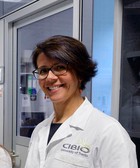
Area STEM: Scienze biomediche e biotecnologie
Competenze: biologia, biologia cellulare, biologia molecolare, biotecnologie, virologia
Parole chiave: analisi di immagini, apprendimento, attenzione, cancro alla prostata, CRISPR-Cas, editing del genoma, Editing del genoma, progettazione di nucleasi, terapia genica, terapie geniche, vettori virali, virus, virus dell'immunodeficienza umana del tipo 1 (HIV-1)
Regione: Trentino-Alto Adige
Funzione/Ruolo
Professoressa ordinaria di Biologia Molecolare all'Università di Trento, Group Leader Laboratory of Molecular Virology
Percorso professionale
Dopo la laurea in Scienze Biologiche all’Università di Genova nel 1990 si trasferisce negli Stati Uniti, Bethesda MD, al National Institute of Health (NIH) dove studia la biologia molecolare dei retrovirus. Nel 1998 si trasferisce a New York dove lavora come postdoc alla Cornell University e poi come Instructor all’Institute of Gene Therapy, Mount Sinai School of Medicine. Al suo rientro in Italia lavora all’Istituto Superiore di Sanità e in seguito all’International Centre of Genetic Engineering and Biotechnology, ICGEB, di Trieste. In seguito, diventa ricercatrice alla Scuola Normale di Pisa dove guida il Laboratorio di Biologia Molecolare. Attualmente è Professoressa Ordinaria di Biologia Molecolare all’Università di Trento dove insegna Virologia Molecolare e Terapia Genica. All’interno del Dipartimento CIBIO, dell’Università di Trento, conduce attività di ricerca per lo sviluppo biotecnologico di strumenti molecolari per l’editing genomico da applicare in terapia genica per la cura di malattie genetiche, con particolare interesse per la cura di fibrosi cistica. È co-inventrice di tre brevetti e co-fondatrice e scientific advisor di una start-up accademica, Alia Therapeutics, con finalità di sviluppo di strategie di editing genomico per la terapia genica.
Risultati scientifici
La sua carriera scientifica inizia nel laboratorio di Robert Gallo all’NIH, di Bethesda negli Sati Uniti dove studia i meccanismi di trasformazione cellulare causati da HTLV-1, un retrovirus umano che causa un tipo leucemia, la Adult T-cell Leukemia. I suoi studi hanno dato un contributo importante alla comprensione nel campo dell’oncogenesi permettendo di chiarire meccanismi alla base dei tumori causati dai virus. I tre principali articoli relativi all’attività di ricerca di questo periodo sono: i) Science, 1995. 269(5220): p. 79-81. 31.8, ii) Blood, 1996. 88(5): p. 1551-60.10.1 and iii) Oncogene, 1999. 18(15): p. 2441-50.
I suoi studi continuano nel campo della retrovirologia per indagare i meccanismi molecolari alla base dell’infezione da HIV-1, il virus che causa l’AIDS. La sua ricerca si focalizza sugli eventi centrali del ciclo replicativo di HIV-1 che avvengono nei nuclei delle cellule infette. Nei suoi studi utilizza metodi sperimentali innovativi integrando tecniche di biologia molecolare con strumenti avanzati di microscopia a fluorescenza per esaminare la dinamica nucleare del virus e gli eventi che portano a fondere il genoma virale con quello cellulare. I tre principali articoli relativi all’attività di ricerca di questo periodo sono: i) Cell Host Microbe. 2011 Jun 16;9(6):484-95, ii) Proc Natl Acad Sci U S A. 2013 Apr 2;110(14):5636-41 and Methods Mol Biol. 2014;1087:47-54.
Recentemente la sua ricerca è volta allo sviluppo biotecnologico di strumenti molecolari per l’editing genomico per il loro utilizzo in terapia genica per la cura diu malattie genetiche. Con il suo gruppo ha dato importanti contributi nel campo della terapia genica sviluppando nuovi sistemi di trasferimento genico sia di tipo virale che non-virale per molecole dell’ editing genomico e con l’identificazione di una tra le più precise varianti di Cas9 (evoCas). Ha svolto studi per la messa a punto di strategie per correggere mutazioni alla base di malattie genetiche con particolare attenzione verso una delle più frequenti malattie genetiche, la Fibrosi Cistica. I tre principali articoli relativi all’attività di ricerca di questo periodo sono: Nat Commun. 2019 Aug 7;10(1):3556, Mol Ther Nucleic Acids. 2018; 12:453-462, Nat Biotechnol. 2018; 36(3):265-271).
Attività editoriali e pubblicazioni
(2020) Leslie W, Frati G, Felix T, Hardouin G, Casini A, Wollenschlaeger C, Meneghini V, Masson C, De Cian A, Chalumeau A, Mavilio F, Amendola M, Andre-Schmutz I, Cereseto A, El Nemer W, Concordet JP, Giovannangeli C, Cavazzana M, Miccio. Editing a γ-Globin Repressor Binding Site Restores Fetal Hemoglobin Synthesis and Corrects the Sickle Cell Disease Phenotype. Science Advances 2020 6 (7): eaay9392.
(2019) Maule G, Casini A, Montagna C, Ramalho AS, De Boeck K, Debyser Z, Carlon MS, Petris G, Cereseto A. Allele specific repair of splicing mutations in cystic fibrosis through AsCas12a genome editing. Nat Commun. 2019 Aug 7;10(1):3556. doi: 10.1038/s41467-019-11454-9.
(2018) Montagna C, Petris G, Casini A, Maule G, Franceschini GM, Zanella I, Conti L, Arnoldi F, Burrone OR, Zentilin L, Zacchigna S, Giacca M, Cereseto A. VSV-G Enveloped Vesicles for Traceless Delivery of CRIAPR-Cas9. Mol Ther Nucleic Acids. 2018; 12:453-462.
(2018) Casini A, Olivieri M, Petris G, Montagna C, Reginato R, Maule G, Lorenzin F, Prandi D, Romanel A, Demichelis F, Inga A, Cereseto A. In vivo screening of highly specific SpCas9 variants. Nat Biotechnol. 2018; 36(3):265-271
(2017) Romanel A, Garritano S, Stringa B, Blattner M, Dalfovo D, Chakravarty D, Soong D, Cotter KA, Petris G, Dhingra P, Gasperini P, Cereseto A, Elemento O, Sboner A, Khurana E, Inga A, Rubin MA, Demichelis F. Inherited determinants of early recurrent somatic mutations in prostate cancer. Nat Commun 2017;8:48.
(2017) Petris G, Casini A, Montagna C, Lorenzin F, Prandi D, Romanel A, Zasso J, Conti L, Demichelis F, Cereseto A. Hit and go CAS9 delivered through a lentiviral based self-limiting circuit. Nat Commun 2017;8:15334.
(2016) Quercioli V, Di Primio C, Casini A, Mulder LCF, Vranckx LS, Borrenberghs D, Gijsbers R, Debyser Z, Cereseto A. Comparative Analysis of HIV-1 and Murine Leukemia Virus Three-Dimensional Nuclear Distributions. J Virol 2016;90:5205–5209.
(2015) Casini A, Olivieri M, Vecchi L, Burrone OR, Cereseto A. Reduction of HIV-1 infectivity through endoplasmic reticulum-associated degradation-mediated Env depletion. J Virol 2015;89:2966–2971.
(2014) Cereseto A, Giacca M. Imaging HIV-1 nuclear pre-integration complexes. Methods Mol Biol Clifton NJ 2014;1087:47–54.
(2013) Di Primio C, Quercioli V, Allouch A, Gijsbers R, Christ F, Debyser Z, Arosio D, Cereseto A. Single-cell imaging of HIV-1 provirus (SCIP). Proc Natl Acad Sci U S A 2013;110:5636–5641.
(2011) Allouch A, Di Primio C, Alpi E, Lusic M, Arosio D, Giacca M, Cereseto A. The TRIM family protein KAP1 inhibits HIV-1 integration. Cell Host Microbe 2011;9:484–495.
(2010) Manganaro L, Lusic M, Gutierrez MI, Cereseto A, Del Sal G, Giacca M. Concerted action of cellular JNK and Pin1 restricts HIV-1 genome integration to activated CD4+ T lymphocytes. Nat Med 2010;16:329–333.
Riconoscimenti e premi
Anna Cereseto ha ricevuto supporto finanziario per la sua ricerca dalla Comunità Europea sia nel contesto del Framework Programme 7 che 8 (Horizon 2020), dal Ministero della Salute (Bandi AIDS) e dalla Fondazione Italiana per la Fibrosi Cistica. È reviewer per agenzie di finanziamento di ricerca internazionali (Flanders Research Fundation, Austrian Science Fund, MRC-University of Cambridge and Czech Science Fundation) e funge da peer-reviewer per giornali internazionali incluso Nature Biotechnology, Nature Communications, Nature Methods e Cell Reports Medicine. È stata selzionata per un premio (fellowship) AIRC e dal Fogarty International Center Research (NIH).

Funzione/Ruolo
Direttrice Ricerca & Sviluppo e membro del Consiglio Direttivo del Gruppo Dr. Schär
Percorso professionale
Dopo la laurea in Scienze e Tecnologie alimentari conseguita nel 1994 presso l'Università di Udine, Virna Cerne si trasferisce in Germania dove è Project leader di ricerca e sviluppo della società Zuegg Fruchtig a Berlino. Nel 1996 rientra in Italia ed è Responsabile del Controllo Qualità e del dipartimento di ricerca e sviluppo di Dr. Schär, azienda leader in Europa per l'alimentazione priva di glutine. Dal 2003 è direttrice e responsabile ricerca e sviluppo dell'intero gruppo Dr. Schär, di cui diventa nel 2015 direttrice esecutiva.
Risultati scientifici
Porta il nome di Virna Cerne e Ombretta Polenghi l'innovativo brevetto che permette di estrarre proteine simili al glutine dal granoturco da poter addizionare agli alimenti per celiaci. Il processo prevede di isolare due proteine simili al glutine derivanti dal mescolamento di acqua, alcol e granoturco in una sospensione riscaldata. Attraverso questo procedimento è poi possibile integrare le proteine isolate nelle preparazioni per celiaci, replicando il gusto e la consistenza dei prodotti realizzati con la tradizionale farina di grano. Il brevetto è una vera rivoluzione per tutti coloro che soffrono di celiachia, malattia autoimmune a causa della quale il glutine danneggia le pareti dell'intestino compromettendo l'assorbimento delle sostanze nutrienti. Questa condizione crea nel celiaco carenze di vitamine, anemia e fatica cronica: l'unica terapia è una dieta rigorosamente priva di glutine. Grazie alla scoperta di Cerne e Polenghi la dieta potrà essere più facile da seguire e soprattutto più gustosa.
Riconoscimenti e premi
Nel 2016 Virna Cerne e il gruppo di ricerca Dr. Schär sono fra i tre finalisti dell'European Inventor Award, nella categoria Industry, gli unici nel settore alimentare. Si tratta di uno dei premi europei più importanti sui temi dell'innovazione.

Funzione/Ruolo
Professoressa ordinaria di Farmacologia presso l'Università di Bari
Percorso professionale
Dopo aver conseguito la laurea in Medicina e Chirurgia all'Università di Bari nel 1979, si specializza in Neurologia nella stessa università. Ottiene in seguito una borsa di studio dall'Istituto Mario Negri di Milano e, nel 1984, si trasferisce come ricercatrice al Duke University Medical Center, Durham negli Stati Uniti, nel gruppo del Dr. R.J. Lefkowitz, premio Nobel per la Chimica nel 2012. La sua carriera accademica continua come Research Assistant Professor nella stessa Duke University e, dal 1992, come professoressa ordinaria di Farmacologia all'Università di Losanna in Svizzera. Nel 2007 torna in Italia definitivamente e ottiene la cattedra di Farmacologia all'Università di Bari.
Risultati scientifici
Susanna Cotecchia è da sempre impegnata nella ricerca di base quale strumento indispensabile per la comprensione dei meccanismi delle malattie e dell'azione dei farmaci. Il suo lavoro si focalizza sullo studio dei recettori di membrana e della mutagenesi sito-diretta, particolare tecnica utilizzata in biologia molecolare per per studiare la relazione struttura-funzione delle proteine. Questa linea di ricerca ha lo scopo di affrontare le questioni fondamentali della farmacologia molecolare, fornendo dei metodi di screening rapidi e informazioni utili per comprendere il meccanismo di azione dei medicinali. Il traguardo è quello di costruire nuove molecole con proprietà farmacologiche selettive e mirate, il cosiddetto drug design, che eviti effetti collaterali nel trattamento di numerose malattie.
Attività editoriali e pubblicazioni
È autrice di più di 100 articoli scientifici di portata nazionale ed internazionale, tra cui:
(2006) Stanasila L, Abuin L, Diviani D, Cotecchia S. Direct interaction of ezrin with the alpha1b-adrenergic receptor regulates recycling of the internalized receptors. Journal of Biological Chemistry, 281:4354-63.
(2005) Hosoda C, Koshimizu TA, Tanoue A, Nasa Y, Oikawa R, Tomabechi T, Fukuda S, Shinoura H, Oshikawa S, Takeo S, Kitamura T, Cotecchia S, Tsujimoto G. Two alpha1-adrenergic receptor subtypes regulating the vasopressor response have differential roles in blood pressure regulation. Molecular Pharmacology, 67:912-22.
(2005) Novi F, Stanasila L, Giorgi F, Corsini GU, Cotecchia S, Maggio R. Paired activation of two components within muscarinic M3 receptor dimers is required for recruitment of beta-arrestin-1 to the plasma membrane.The Journal of Biological Chemistry, 280:19768-76.
(2005) Costa T and Cotecchia S. Historical Perspective: The discovery of inverse efficacy and the constitutive activity of GPCRs. Trends in Pharmacological Sciences.
(2005) Hosoda C, Tanoue A, Shibano M, Tanaka Y, Hiroyama M, Koshimizu TA, Cotecchia S, Kitamura T, Tsujimoto G, Koike K. Correlation between vasoconstrictor roles and mRNA expression of alpha(1) adrenoceptor subtypes in blood vessels of genetically engineered mice. British Journal of Pharmacology 146:456-66.
(2005) Sarang Z, Molnar P, Nemeth T, Gomba S, Kardon T, Melino G, Cotecchia S, Fesus L, Szondy Z. Tissue transglutaminase (TG2) acting as G protein protects hepatocytes against Fas-mediated cell death in mice. Hepatology 42:578-87.
(2004) Diviani D, Abuin L, Cotecchia S and Pansier L. Anchoring of both PKA and 14-3-3 inhibits the Rho-GEF activity of the AKAP-Lbc signaling complex, EMBO Journal 23:2811-20.
(2004) Cotecchia S, Stanasila L, Diviani D, Bjorklof K, Rossier O and Fanelli F. Structural determinants involved in the activation and regulation of G protein-coupled receptors: lessons from the alpha1-adrenegic receptor subtypes. Biology of the Cell, 96:327-33.
(2005) Zhang H, Cotecchia S, Thomas SA, Tanoue A, Tsujimoto G and Faber JE. Gene deletion of dopamine beta-hydroxylase and alpha1-adrenoceptors demonstrates involvement of catecholamines in vascular remodeling. American Physiological Society Journals, Heart and Circulatory Physiology, 287:H2106-H2114.
(2004) Townsend SA, Jung AS, Gillian Hoe YS, Lefkowitz RY, Khan SA, Lemmon CA, Harrison RW, Lee K, Barouch LA, Cotecchia S, Shoukas AA, Nyhan D, Hare JM and Berkowitz DE. Critical role for the alpha-1B adrenergic receptor at the sympathetic neuroeffector junction. Hypertension, 44:776-82.
Riconoscimenti e premi
Susanna Cotecchia riceve nel 1995 il premio della Federazione Europea delle società biochimiche (FEBS). Nel 2001 viene premiata con il "Receptor Research Prize" della Perkin-Elmer Life Sciences.

Funzione/Ruolo
Responsabile del Dipartimento di Oncologia Sperimentale e Medicina Molecolare dell'Istituto tumori di Milano
Percorso professionale
Dopo la laurea in Scienze Biologiche presso l'Università degli Studi di Milano nel 1976, prosegue la sua formazione presso il laboratorio di oncologia dell'Health Science Center di Tucson, negli Stati Uniti. Consegue poi una specializzazione in Statistica Medica e Biomedica presso l'Università degli Studi di Milano nel 1997. Nel 1985 diventa professoressa della Scuola Italiana di Senologia e nel 2001 professoressa per il Master in Senologia Diagnostica e Terapeutica dell'Università di Siena, ruoli che ricopre tuttora. E' Inoltre responsabile del Dipartimento di Oncologia Sperimentale e Medicina Molecolare dell'Istituto dei tumori di Milano.
Risultati scientifici
Gli interessi principali di Maria Grazia Daidone sono lo studio e la caratterizzazione di cellule tumorali a elevato potenziale. Ciò avviene anche attraverso studi traslazionali in tumori umani solidi per l'identificazione di marcatori/profili biomolecolari che conducono a una diagnosi, prognosi e risposta a trattamenti specifici, e attraverso lo studio dei meccanismi di resistenza ad agenti antitumorali (farmaci e/o ormoni). La ricerca preclinica sui biomarcatori e sulle interazioni tra cellule tumorali e sistema immunitario è un importante supporto al trattamento e cura dei tumori: nello specifico Maria Grazia Daidone è impegnata nella ricerca sulle cellule tumorali del cancro al seno, all'ovaio e alla cervice uterina. Daidone coordina anche programmi di controllo di qualità per la formulazione e proposizione di linee guida per l'utilizzo clinico di biomarcatori e per la raccolta e conservazione di materiale biologico (BioBanche).
Attività editoriali e pubblicazioni
E' autrice di diversi capitoli di libri ed anche di più di 200 pubblicazioni scientifiche su riviste nazionali ed internazionali tra cui:
(2016) Callari M, Guffanti A, Soldà G, Merlino G, Fina E, Brini E, Moles A, Cappelletti V, Daidone MG. In-depth characterization of breast cancer tumor-promoting cell transcriptome by RNA sequencing and microarrays. Oncotarget, 7(1):976-94.
(2016) Callari M, Cappelletti V, D'Aiuto F, Musella V, Lembo A, Petel F, Karn T, Iwamoto T, Provero P, Daidone MG, Gianni L, Bianchini G. Subtype-Specific Metagene-Based Prediction of Outcome after Neoadjuvant and Adjuvant Treatment in Breast Cancer. Clinical Cancer Research, 22(2):337-45.
(2015) Cappelletti V, Appierto V, Tiberio P, Fina E, Callari M, Daidone MG. Circulating Biomarkers for Prediction of Treatment Response. Journal of the National Cancer Institute, (51):60-3.
(2015) D'Aiuto F, Callari M, Dugo M, Merlino G, Musella V, Miodini P, Paolini B, Cappelletti V, Daidone MG. miR-30e is an independent subtype-specific prognostic marker in breast cancer. British Journal of Cancer, 113(2):290-8.
(2015) Musella V, Pietrantonio F, Di Buduo E, Iacovelli R, Martinetti A, Sottotetti E, Bossi I, Maggi C, Di Bartolomeo M, de Braud F, Daidone MG, Cappelletti V. Circulating tumor cells as a longitudinal biomarker in patients with advanced chemorefractory, RAS-BRAF wild-type colorectal cancer receiving cetuximab or panitumumab. International Journal of Cancer, 137(6):1467-74.
(2015) Fina E, Callari M, Reduzzi C, D'Aiuto F, Mariani G, Generali D, Pierotti MA, Daidone MG, Cappelletti V. Gene expression profiling of circulating tumor cells in breast cancer. Clinical Chemistry, 61(1):278-89.
(2014) Callari M, Musella V, Di Buduo E, Sensi M, Miodini P, Dugo M, Orlandi R, Agresti R, Paolini B, Carcangiu ML, Cappelletti V, Daidone MG. Subtype-dependent prognostic relevance of an interferon-induced pathway metagene in node-negative breast cancer. Molecular Oncology, 8(7):1278-89.
(2011) Cordenonsi M, Zanconato F, Azzolin L, Forcato M, Rosato A, Frasson C, Inui M, Montagner M, Parenti AR, Poletti A, Daidone MG, Dupont S, Basso G, Bicciato S, Piccolo S. The Hippo transducer TAZ confers cancer stem cell-related traits on breast cancer cells. Cell, 147(4):759-72.
(2011) Callari M, Cappelletti V, De Cecco L, Musella V, Miodini P, Veneroni S, Gariboldi M, Pierotti MA, Daidone MG. Gene expression analysis reveals a different transcriptomic landscape in female and male breast cancer. Breast Cancer Research and Treatment, 127(3):601-10.
(2010) Martello G, Rosato A, Ferrari F, Manfrin A, Cordenonsi M, Dupont S, Enzo E, Guzzardo V, Rondina M, Spruce T, Parenti AR, Daidone MG, Bicciato S, Piccolo S. A MicroRNA targeting dicer for metastasis control. Cell, 141(7):1195-207.
Riconoscimenti e premi
Nel maggio del 2014 Maria Grazia Daidone riceve il Premio R.O.S.A. (Risultati Ottenuti Senza Aiuti) dal Canova Club di Roma.
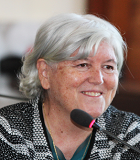
Funzione/Ruolo
Professoressa ordinaria di Farmacologia e già Rettrice dell’Università degli Studi di Cagliari
Percorso professionale
Dopo la laurea in Medicina e Chirurgia presso l’Università di Cagliari, Maria Del Zompo si è specializzata in Neurologia e ha intrapreso la carriera universitaria nella stessa Università come precaria (assistente incaricato) nel 1979. Durante le varie fasi della sua carriera ha passato più di due anni alla “Biological Psychiatry Branch” del National Institute of Mental Health(NIMH), a Bethesda (USA), dove ha collaborato con John Tallman sotto la direzione di Robert M. Post.
Attualmente è Professoressa Ordinaria di Farmacologia nel Corso di Laurea di Medicina e Chirurgia dell’Università di Cagliari, dove dal 2005 al 2007 è stata Pro-Rettrice e dall'aprile del 2015 fino al mese di aprile 2021 è stata Rettrice .
Risultati scientifici
La Professoressa Maria Del Zompo è componente di numerose società scientifiche, tra cui la International Society of Psychiatric Genetics, la International Society of Biological Psychiatry e la Società Italiana di Farmacologia. Ha vinto il premio “Burroughs Wellcome Stipend Award”, Burroughs Wellcome Fund, Research Triangle Park, NC (USA) presso la Biological Psychiatry Branch, NIMH, Bethesda, MD (USA).
La sua attività clinica si è svolta presso l’Unità Complessa di Farmacologia Clinica dell’Ospedale San Giovanni di Dio, Azienda Ospedaliero-Universitaria di Cagliari, una struttura assistenziale ambulatoriale, dotata di day hospital, e dedicata ad alcune patologie nell’ambito delle neuroscienze cliniche, come la malattia bipolare e l’emicrania, e ad attività più specifiche di farmacologia clinica, come il riconoscimento e la gestione delle reazioni avverse da farmaci.
I suoi campi di interesse clinici e di ricerca includono la Psicofarmacologia clinica, la Genetica psichiatrica (epidemiologia e genetica molecolare del disturbo bipolare e del comportamento suicidario), la Genetica di malattie complesse come Emicrania, Cefalea a grappolo, Malattia di Alzheimer, la Farmacogenetica (basi genetiche della risposta ai farmaci e alle reazioni avverse da farmaco).
Attualmente svolge collaborazioni internazionali con il Professor Martin Alda del Department of Psychiatry, Dalhousie University, Halifax, Canada; con il Professor Gustavo Turecki, del Research and Academic Affairs, Department of Psychiatry, McGill University, Montreal, Canada; con il Dottor Ming Ta Michael Lee, del Laboratory for International Alliance on Genomic Research Core for Genomic Medicine, RIKEN Center for Integrative Medical Sciences, Yokohama, Japan e con il Dottor. David Gurwitz, del National Institute for Psychobiology, Tel Aviv University, Israel.
Inoltre, Maria Del Zompo è tra le fondatrici dell’International Consortium on Lithium Genetics (ConLiGen) e dell’International Group for the Study of Lithium Treated Patients (IGSLI), il cui meeting annuale si è tenuto a Cagliari nel 2010.
Nel 2006 ha organizzato, per la prima volta in Italia, il XIV Congresso Mondiale della International Society of Psychiatric Genetics, di cui è componente onoraria, che si è tenuto a Cagliari dal 28 ottobre al 1° novembre 2006.
Attività editoriali e pubblicazioni
La sua produzione scientifica consiste in numerose pubblicazioni su libri e riviste internazionali, pubblicazioni su libri e riviste nazionali e presentazioni a convegni e meeting nazionali e internazionali. La Professoressa Maria Del Zompo ha un totale di 152 pubblicazioni su libri e riviste internazionali, 57 pubblicazioni su libri e riviste nazionali e 248 presentazioni a convegni e meeting nazionali e internazionali (H index: 30 secondo Web of Science).
Nel 2015 la pubblicazione di un articolo intitolato “Renal function during long-term lithium treatment: a cross-sectional and longitudinal study” sulla rivista ad alto impact factor “BMC Medicine” è stata accompagnata da un’intervista pubblicata nel sito BioMe e intitolata “Lithium treatment and renal function: do we really need to be concerned?“.
Maria Del Zompo svolge anche attività di referaggio di articoli scientifici per numerose riviste internazionali di prestigio, ed effettua attività di revisora (?) di progetti scientifici per istituzioni italiane e straniere.
Riconoscimenti e premi
Negli ultimi anni Maria Del Zompo è stata coinvolta in attività sociali e culturali, locali e regionali, alle quali ha partecipato sempre con entusiasmo. Ha vinto il Premio “Eleonora D’Arborea”, istituito dall’International Inner Wheel Club di Cagliari, nel 2000, che premia una donna sarda che con la sua attività sociale, culturale e artistica abbia concorso al progresso sociale e culturale della Sardegna.
Ha vinto il Premio AIDDA (Associazione Imprenditrici e Donne Dirigenti di Azienda) Delegazione Sardegna III Edizione come “Donna dell’Anno 2007” per aver incisivamente contribuito, con l’altissimo livello della sua attività clinica e di ricerca, a dare lustro alla Sardegna e alle donne nel mondo.
Il suo interesse verso la diffusione della cultura, attraverso incontri scientificamente corretti ma divulgativi, è sempre stato costante nel tempo. Nel 2014 ha partecipato alla FAI Marathon dove ha sviluppato la sua conversazione in piazza Martiri, raccontando il legame tra quello che era il cuore commerciale della città e l’Università. Nell’ultimo anno è stata relatrice nella Tavola Rotonda “Scienza e Società: Ricerca e Etica”. Il rapporto tra etica e scienza è sempre stato un argomento caro a Maria Del Zompo: in una intervista di Alessandro Ligas dal titolo “Ricerca, Innovazione ed Etica: un confronto tra progresso scientifico medico e diritti della persona” espone il suo pensiero su un argomento così importante ma anche così delicato per la società.
Con il suo insediamento, nell’aprile 2015, come prima donna rettrice dell’ateneo cagliaritano dopo 60 rettori, ha dato maggiore impulso alle attività culturali dell’ateneo e al coinvolgimento della città.

Funzione/Ruolo
Professoressa ordinaria di Patologia Generale, Università degli Studi di Padova
Percorso professionale
Si laurea in Biologia nel 1976 presso l'Università di Padova, dove continua la sua attività di ricerca, prima come borsista e poi, dal 1981, come Ricercatrice. Presso la stessa Università si specializza in Microbiologia nel 1986. Nel 1992 diventa Professoressa Associata e dal 2004 è Ordinaria di Patologia Generale presso il Dipartimento di Scienze Chirurgiche, Oncologiche e Gastroenterologiche dell’Università di Padova.
Dal Marzo 2005 è Responsabile dell'Unità semplice di Virologia Oncologica, afferente alla Azienda Ospedaliera di Padova e dal 2006 all' Istituto Oncologico Veneto (IOV)-IRCCS.
Dal 2017 è Vice Presidente del Corso di Laurea in Medicina e Chirurgia, Università di Padova.
Risultati scientifici
Dal 1973 al 1983, prima come studente interna, poi come borsista e ricercatrice, si occupa di modelli di oncogenesi sperimentale indotta da retrovirus murini. Dal 1984 il suo campo di ricerca si amplia allo studio dei retrovirus umani nella patogenesi delle neoplasie e delle immunodeficienze umane. Nell’ambito di questi programmi di ricerca, grazie a borse di studio ottenute dall’Associazione Italiana per la Ricerca sul Cancro e dal National Institute of Health-USA , si reca per successivi periodi di tre-quattro mesi, nel 1980, 1984, 1985 e 1988, presso il National Cancer Institute, NIH, Bethesda, USA.
Nel 1989-1990 è componente del gruppo di studio promosso dalla Organizzazione Mondiale della Sanità per la diagnosi e lo studio delle infezioni pediatriche da HIV. Dal 1991 partecipa al network internazionale Pediatric European Network for treatment of AIDS (PENTA) per il trattamento e monitoraggio delle infezioni da HIV in età pediatrica.
Ha coordinato e coordina progetti di Ricerca Nazionali (AIRC, MIUR), ed è stata/è partner di alcuni progetti internazionali, tra cui PENTA-Labnet e EPIICAL.
Gli studi condotti da Anita De Rossi apportano un significativo contributo per la diagnosi precoce delle infezioni perinatali da HIV e per la comprensione dei meccanismi virologici alla base dell'AIDS pediatrico. In particolare, i suoi studi in questo campo dimostrano che la maggior parte delle infezioni avviene in epoca perinatale e che esiste una trasmissione selettiva di varianti virali da madre a figlio. Documenta per prima la resistenza cellulare alla infezione da HIV. Per tale lavoro, successivamente avvalorato e spiegato con la scoperta ad opera di altri gruppi di ricerca dei corecettori virali, la dott.ssa Lucia Ometto, afferente al suo gruppo di ricerca, riceve il premio Cecilia Cioffrese nel 1997.
Più recentemente le sue ricerche si sono estese alle patologie neoplastiche associate al virus di Epstein Barr (EBV) nei pazienti immunocompromessi per infezione da HIV o per terapia iatrogena post-trapianto e allo studio della interazione tra virus oncogeni e potenziale replicativo cellulare, dettato principalmente dal complesso telomero/telomerasi. In questo campo è tra le prime a dimostrare la stretta interazione che si stabilisce a livello molecolare tra EBV e TERT, la componente catalitica della telomerasi, per impedire il ciclo litico virale e promuovere la trasformazione neoplastica.
Infine, i suoi studi su TERT circolante presente nel plasma sono tra i primi a dimostrare nel campo della “biopsia liquida” che TERT può essere un marcatore utile per il monitoraggio della patologia neoplastica e della risposta alla terapia.
Attività editoriali e pubblicazioni
E’ autrice di più di 250 pubblicazioni scientifiche, tra cui:
[2021] Cotugno N, Ruggiero A, Bonfante F, Petrara MR, Zicari S, Pascucci GR, Zangari P, De Ioris MA, Santilli V, Manno EC, Amodio D, Bortolami A, Pagliari M, Concato C, Linardos G, Campana A, Donà D, Giaquinto C; CACTUS Study Team, Brodin P, Rossi P, De Rossi A, Palma P. C. Virological and immunological features of SARS-CoV-2-infected children who develop neutralizing antibodies. Cell Rep. 2021 Mar 16;34(11):108852. doi: 10.1016/j.celrep.2021.108852.
[2018] Rampazzo E, Del Bianco P, Bertorelle R, Boso C, Perin A, Spiro G, Bergamo F, Belluco C, Buonadonna A, Palazzari E, Lonardi S, De Paoli S, Pucciarelli S, De Rossi A. The predictive and prognostic potential of plasma Telomerase Reverse Transcriptase (TERT) RNA in Rectal Cancer. British Journal of Cancer, 118[6]:878-86.
[2015] Klein N, Palma P, Luzuriaga K, Pahwa S, Nastouli E, Gibb DM, Rojo P, Borkowsky W, Bernardi S, Zangari P, Calvez V, Compagnucci A, Wahren B, Foster C, Munoz-Fernández MÁ, De Rossi A, Ananworanich J, Pillay D, Giaquinto C, Rossi P. Early antiretroviral therapy in children perinatally infected with HIV: a unique opportunity to implement immunotherapeutic approaches to prolong viral remission. Lancet Infectious Diseases, 15[9]: 1108-14.
[2013] Giunco S, Dolcetti R, Keppel S, Celeghin A, Indraccolo S, Dal Col J, Mastorci K, De Rossi A. hTERT inhibition triggers Epstein-Barr virus lytic cycle and apoptosis in immortalized and transformed B cells: a basis for new therapies. Clinical Cancer Research, 19[8]: 2036-47.
[2012] Dolcetti R, De Rossi A. Telomere/telomerase interplay in virus-driven and virus-independent lymphomagenesis:pathogenetic and clinical implications. Medicinal Research Reviews, 32[2]:233-53.
[2008] Terrin L, Rampazzo E, Pucciarelli S, Agostini M, Bertorelle R, Esposito G, Del Bianco P, Nitti D, De Rossi A. Relationship betwen tumor and plasma levels of hTERT mRNA in patients with colorectal cancer: implications for monitoring of neoplastic disease. Clinical Cancer Research, 14[22]:7444-51.
[2001] Ballon G, Ometto L, Righetti E, Cattelan AM, Masiero S, Zanchetta M, Chieco-Bianchi L, De Rossi A. Human immunodeficiency virus type 1 modulates telomerase activity in peripheral blood lymphocytes. The Journal of Infectious Diseases, 183[3]: 417-24.
[1996] De Rossi A, Masiero S, Giaquinto C, Ruga E, Comar M, Giacca M, Chieco-Bianchi L. Dynamics of viral replication in infants with vertically acquired human immunodeficiency virus type 1 infection.The Journal of Clinical Investigations, 97[2]: 323-30.
[1995] Ometto L, Zanotto C, Maccabruni A, Caselli D, Truscia D, Giaquinto C, Ruga E, Chieco-Bianchi L, De Rossi A. Viral phenotype and host cell susceptibility to HIV-1 infection as risk factors for mother-to-child HIV-1 transmission. AIDS 9[5]: 427-34.
[1992] De Rossi A, Ometto L, Mammano F, Zanotto C, Giaquinto C, Chieco-Bianchi L. Vertical transmission of HIV-1: lack of detectable virus in peripheral blood cells of infected children at birth.AIDS 6[10]:1117-20.
[1988] De Rossi A, Amadori A, Chieco-Bianchi L, Giaquinto C, Zacchello F, Buchbinder A, Wong-Staal F, Gallo RC. Polymerase chain reaction and in vitro antibody production for the early diagnosis of pediatric HIV infection. Lancet, 2[8605]: 278
[1986] De Rossi A, Franchini G, Aldovini A, Del Mistro A, Chieco-Bianchi L, Gallo RC, Wong-Staal F. Differential response to the cytopathic effects of human T-cell lymphotropic virus type III (HTLV-III) superinfection in T4+ (helper) and T8+ (suppressor) T-cell clones transformed by HTLV-I. Proceedings of the National Academy of Sciences of the United States of America, 83[12]:4297-301.
[1983] De Rossi A, D'Andrea E, Biasi G, Collavo D, Chieco-Bianchi L. Protection from spontaneous lymphoma development in SJL/J(v+) mice neonatally injected with dualtropic SJL-151 virus.Proceedings of the National Academy of Sciences of the United States of America, 80[9]:2775-9.

Funzione/Ruolo
Professoressa ordinaria di Biostatistica alla Harvard T.H. Chan School of Public Health
Percorso professionale
Dopo la laurea in Statistica presso l'Università La Sapienza di Roma, prosegue la sua formazione con un dottorato di ricerca all'Università di Padova nel 1997. Trasferitasi all'estero diventa Visiting Assistant Professor presso la John Hopkins Bloomberg School of Public Health dell'omonima università a Baltimora. Prosegue la sua carriera accademica nella John Hopkins fino a diventare Professor del dipartimento di biostatistica nel 2007. Successivamente si trasferisce alla Harvard T.H. Chan School of Public Health, dell'omonima università fino a ricoprire il ruolo non solo di Professor di biostatistica ma anche Senior Associate Dean for Research. L'interesse principale di Francesca Dominici è concentrato sullo sviluppo di metodi statistici per l'analisi di grandi e complessi campioni di dati (Big Data), provenienti da fonti eterogenee, in modo tale da poterli combinare ottenendo importanti informazioni che possono essere applicate a diverse discipline quali i cambiamenti climatici, le scienze ambientali, la ricerca comparata sul cancro e le politiche di salute pubblica.
Risultati scientifici
Francesca Dominici è impegnata nello sviluppo di nuovi metodi statistici per l'analisi di grandi quantità di dati (big data) rilevati e immagazzinati in imponenti banche dati (data warehouse) come quelli di Medicare e SEER-Medicare. La sua sfida è sviluppare nuovi metodi di inferenza casuale bayesiana (approccio all'inferenza statistica in cui le probabilità che un dato evento accada vengono considerate come livelli di fiducia e non più come frequenze), per superare le difficoltà di analisi insite nell'utilizzo di grandi banche dati. Questo nuovo approccio consente a Francesca Dominici, in collaborazione con la Harvard Medical School, di comparare l'efficacia nella ricerca medica nel trattamento del glioblastoma (tumore che si sviluppa fra le cellule gliali componenti del sistema nervoso assieme ai neuroni) e di altri tumori. Inoltre i suoi studi hanno direttamente influenzato la politica americana sulla qualità dell'aria e sull'inquinamento, portando alla creazione di nuovi standard di qualità dell'aria e dell'ambiente.
Attività editoriali e pubblicazioni
La professoresa Dominici è autrice di numerose pubblicazioni, fra cui:
(2000) Dominici F, Samet JM, Zeger SL. Combining Evidence on Air pollution and Daily Mortality from the Twenty Largest US Cities: A Hierarchical Modelling Strategy with discussion. Journal of the Royal Statistical Society: Series A, 163(3):263-302.
(2000) Samet JM, Dominici F, Curriero F, Coursac I, Zeger SL, Fine Particulate Air Pollution and Mortality in 20 U.S. Cities: 1987-1994. New England Journal of Medicine, 343(24):1742-9.
(2004) Dominici F, McDermott A, Hastie T. Improved Semi-parametric Time Series Models of Air Pollution and Mortality. Journal of the American Statistical Association, 468:938-948.
(2006) Dominici F, Peng D, Bell M, Pham M, McDermott A, Zeger SL, Samet JM. Fine Particulates Air Pollution and Hospital Admission for Cardiovascular and Respiratory Diseases. Journal of the American Statistical Association, 295:1127-1135.
(2006) Peng R, Dominici F, Zeger SL. Reproducible Epidemiological Research. American Journal of Epidemiology, 163:783-789.
(2009) Dominici F, Fried L, Zeger SL. So Few Women Leaders: Look for the Root Causes. Academe, July-August 2009. (2012) Wang C, Parmigiani G, Dominici F. Bayesian effect estimation accounting for adjustment uncertainty. Biometrics, (68)3:681-689.
(2014) Zigler CM, Dominici F. Uncertainty in propensity score estimation: Bayesian methods for variable selection and model averaged causal effects. Journal of the American Statistical Association, 109(505):95-107.
(2014) Dominici F, Greenstone M, Sunstein CR. Science and Regulation. Particulate matter matters. Science, 344(6181):257-9.
(2014) Bobb F, Obermeyer Z, Wang Y, Dominici F. Cause-specific risk of hospital admission related to extreme heat in older adults. Journal of the American Medical Association, 312(24):2659-2667. (Recognized in January 2016 as one out of 28 NIEHS Papers of the Year).
Riconoscimenti e premi
Francesca Dominici ha sempre dimostrato impegno per la promozione della diversità all'interno dell'ambito accademico. Ha co-presieduto la Commissione per la condizione femminile presso la John Hopkins University.
Nel 2009 ha ricevuto il premio DiversityRecognitionAward dal rettore della John Hopkins University. Nel 2015 è stata insignita del premio FlorenceNightingaleDavid per i suoi contributi come modello per le donne e per l'eccellenza dimostrata nella ricerca statistica, nella leadership di gruppi multidisciplinari e nell'istruzione. Attualmente presiede il Comitato di Ateneo per l'avanzamento delle donne nell'università presso la Harvard T.H. Chan School of Public Health.

Funzione/Ruolo
Faculty presso l’MD Anderson Cancer Center di Houston, Texas
Percorso professionale
Dopo la laurea triennale in Biotecnologie Mediche e Farmaceutiche e quella magistrale in Biotecnologie Cellulari e Molecolari all’Università Vita - Salute San Raffaele di Milano, nel 2006, prosegue i suoi studi nello stesso ateneo, prima con un dottorato internazionale di ricerca in Biologia Cellulare e Molecolare in collaborazione con la British Open University, poi con un post-dottorato in Oncologia Molecolare. Dal 2008 inizia a tenere corsi di Biochimica e Storia della Ricerca sul Cancro all’Università Vita - Salute San Raffaele. Nel 2011 si trasferisce come ricercatrice all’Università del Texas MD Anderson Cancer Center a Houston, proseguendo li la sua carriera.
Dondossola dal 2009 fa parte dell’American Association for Cancer Research.
Risultati scientifici
L’attività di ricerca di Eleonora Dondossola si focalizza sullo studio del microambiente tumorale, vale a dire la componente non maligna dei tumori indispensabile alla vita delle cellule cancerose. In particolare, i suoi studi iniziali riguardano l’influenza dei vasi sanguigni sulla risposta terapeutica tumorale e sullo sviluppo delle metastasi. Ha dimostrato che una proteina normalmente circolante, la cromogranina A, diminuisce la permeabilità dei vasi, inibendo la penetrazione di agenti terapeutici, inclusi chemioterapici e farmaci molecolari di ultima generazione. Allo stesso tempo, ha anche dimostrato che questo meccanismo riduce la capacita’ delle cellule cancerose di dare origine a metastasi degli organi periferici e del tumore stesso, un processo denominato tumor-self seeding (la proprieta’ delle cellule tumorali circolanti di inflitrare il tumore d’origine), identificato meno di dieci anni fa. Dondossola ha inoltre testato l’ipotesi provocatoria che le cellule tumorali circolanti possano essere geneticamente manipolate e utilizzate come farmaco anti-tumorale sfruttando la loro capacita’ di tornare spontaneamente nel tumore (attraverso il tumor self-seeding). L’applicazione di queste cellule tumorali modificate ha di fatto ridotto in maniera significativa sia il tumore primario che quello metastatico. Inoltre, Dondossola ha scoperto una nuova popolazione di cellule del sistema immunitario (mieloidi) che esprime la proteina CD13 ed è in grado di favorire la formazione di nuovi vasi tumorali, supportando la progressione del tumore.
Dondossola ha recentemente sviluppato interesse verso l’ingegneria tissutale e la microscopia multifotonica intravitale, un approccio in espansione per la sua rilevanza, che consente di monitorare l’evoluzione dei processi biologici in modo dinamico nel tempo. Queste due strategie sono state combinate ed applicate per approfondire i meccanismi che guidano le metastasi ossee del tumore della prostata. Infine, Dondossola ha esteso queste applicazioni allo studio di un altro processo desmoplastico non tumorale, definito “risposta ai corpi estranei” (foreign body response, FBR).
Attività editoriali e pubblicazioni
Eleonora Dondossola è autrice e coautrice di numerose importanti pubblicazioni tra cui:
[2018] Dondossola E, Alexander S, Holzapfel BM, Filippini S, Starbuck MW, Hoffman RM, Navone N, De-Juan-Pardo EM, Logothetis CJ, Hutmacher DW, Friedl P. Intravital microscopy of osteolytic progression and therapy response of cancer lesions in bone. Sci Transl Med. 2018 Aug 1;10(452).
[2016] Dondossola E, Holzapfel BM, Alexander S, Filippini S, Hutmacher DW, Friedl P. Dissecting the foreign body response to biomaterials by non-linear intravital microscopy. Nat Biomed Eng. 2016 Dec 19; 1, 0007.
[2016] Dondossola E, Dobroff AJ, Marchiò S, Cardó-Vila M, Hosoya H, Libutti SK, Corti A, Sidman RL, Arap W, Pasqualini R. Self-targeting of TNF-releasing cancer cells in preclinical models of primary and metastatic tumors. Proc Natl Acad Sci U S A. 2016 Feb 23;113(8):2223-8.
[2013] Dondossola E, Rangel R, Guzman-Rojas L, Barbu EM, Hosoya H, St John LS, Molldrem JJ, Corti A, Sidman RL, Arap W, Pasqualini R.CD13-positive bone marrow-derived myeloid cells promote angiogenesis, tumor growth, and metastasis.Proc Natl Acad Sci USA. 2013 Dec 17;110(51):20717-22.
[2012] Guzman-Rojas L, Rangel R, Salameh A, Edwards JK, Dondossola E, Kim YG, Saghatelian A, Giordano RJ, Kolonin MG, Staquicini FI, Koivunen E, Sidman RL, Arap W, Pasqualini R. Cooperative effects of aminopeptidase N (CD13) expressed by nonmalignant and cancer cells within the tumor microenvironment. Proc Natl Acad SciUSA, 2012 Jan 31;109(5):1637-42.
[2012] Dondossola E, Crippa L, Colombo B, Elisabetta Ferrero and Corti A. Chromogranin A regulates tumor self-seeding and dissemination. Cancer Research, 2012 Jan 15;72(2):449-59.
[2011] Veschini L, Crippa L, Dondossola E, Doglioni C, Corti A and Ferrero E. The vasostatin-1 fragment of chromogranin A preserves a quiescentphenotype in hypoxia-driven endothelial cells and regulates tumorneo-vascularization. Faseb Journal, 2011 Nov; 25(11):3906-14.
[2011] Dondossola E, Gasparri A, Colombo B, Sacchi A, Curnis F and Corti A. Chromogranin A restricts drug penetration and limits the ability of NGR-TNF to enhance chemotherapeutic efficacy. Cancer Research, 2011 Sep 1; 71(17):5881-90.
[2010] Dondossola E, Gasparri A, Bachi A, Longhi R, Metz-Boutigue, MH, Tota B, Helle KB, Curnis F and Corti A. Role of vasostatin-1 C-terminal region in fibroblast cell adhesion. Cell and Molecular Life Sciences, 2010 Jun;67(12):2107-18.
[2006] Curnis F, Longhi R, Crippa L, Cattaneo A, Dondossola E, Bachi A and Corti A. Spontaneous formation of L-isoAspartate and gain-of-function in fibronectin.Journal of Biological Chemistry, 2006 Nov 24; 281(47):36466-76.
Riconoscimenti e premi
Nel 2014 riceve The AMGEN Award in Basic Science Research dall’Università del Texas MD Anderson Cancer Center, Houston. Nello stesso anno riceve il Cancer Prevention and Research Institute of Texas Individual Investigator Award. Nel 2015 è premiata con il Gerald B. Grindey Memorial Scholar-in-Training Award all’AACR Annual Meeting, Philadelphia, USA. Nel 2016 vince il Mark Walter, Brent Nicklas, Adrianne and Jerry Cohen–PCF Young Investigator Award della Prostate Cancer Foundation. Nel 2017 riceve il Rolanette and Berdon Lawrence Bone Research Award, The Rolanette and Berdon Lawrence Bone Disease Program of Texas, USA.
Nel 2021 riceve il prestigioso premio "40 Under 40 in Cancer", il premio che riconosce i giovani professionisti di oncologia più promettenti degli Stati Uniti e celebra i loro contributi per migliorare la vita delle persone colpite dal cancro.

Funzione/Ruolo
Direttrice del Centro Nazionale AIDS dell'Istituto Superiore di Sanità
Percorso professionale
Dopo la laurea in Medicina e Chirurgia presso l'Università La Sapienza di Roma nel 1984, prosegue la sua formazione prima con una specializzazione in Allergologia e Immunologia Clinica nel 1987 e poi con un dottorato di ricerca in Immunologia Clinica, che consegue nel 1991 presso l'Università di Bari. Dal 1986 al 1995 lavora nel Laboratorio di Robert Gallo al National Institutes of Health (NIH) di Bethesda, Stati Uniti. Nel 1995 torna in Italia per dirigere il reparto AIDS del Laboratorio di Virologia dell'Istituto Superiore di Sanità a Roma, dove dal 2005 passa a dirigere il Centro Nazionale Aids, coordinando progetti nazionali, europei e con i Paesi in via di Sviluppo.
È membro di numerosi comitati scientifici e società tra cui WHO-UNAIDS Vaccine Advisory Committee, e l'Organizzazione Europea di Biologia Molecolare (EMBO). Delegata dell'UNESCO e Vice-Presidente del Comitato Scienze Naturali. È stata Vice-Presidente del Comitato Nazionale AIDS del Ministero della Salute italiano per otto anni fino al 2014, ed è attualmente membro del Comitato Scientifico dell'European Research Council (ERC).
Risultati scientifici
Barbara Ensoli ha sempre impostato il suo lavoro di ricerca sullo studio dei meccanismi con cui si instaura l'infezione dal virus HIV e la sua progressione in malattia per sviluppare, sulla base delle acquisizioni raggiunte in questi studi, presidi per prevenire o curare la malattia. Fra i vari ambiti in cui Barbara Ensoli ha applicato quest'approccio, il più noto ed anche il più impegnativo è stato lo sviluppo un vaccino contro l'HIV/AIDS, capace di prevenire l'infezione e/o di diminuire il rischio di progressione verso la malattia. A questo riguardo, gli studi che Barbara Ensoli e i suoi collaboratori conducono per l'individuazione di un vaccino sono basati su nuovi concetti come quello dell'utilizzo della proteina Tat del virus HIV, responsabile del processo di replicazione e disseminazione dell'infezione e del perdurare dell'infezione anche in soggetti sotto terapia. Inoltre, le ricerche di Barbara Ensoli hanno portato alla scoperta che la proteina Tat favorisce la crescita incontrollata dei vasi sanguigni e promuove la progressione del Sarcoma di Kaposi, un tumore assai frequente nei soggetti infettati con HIV. Queste evidenze scientifiche hanno costituito il razionale per la scelta di Tat quale molecola dell'HIV da neutralizzare con un vaccino.
Dopo la sperimentazione animale, che ha fornito risultati di efficacia, Barbara Ensoli e il suo gruppo hanno continuato con gli studi clinici di fase I, conclusi nel 2006, condotti su soggetti con o senza HIV, dimostrando la sicurezza del vaccino per uso umano. Gli studi sono proseguiti con la fase II della sperimentazione clinica, condotta prima in Italia e poi in Sudafrica, in soggetti con HIV in trattamento con farmaci antiretrovirali (terapia ART). Il vaccino Tat si è dimostrato sicuro ed in grado di promuovere l'aumento dei linfociti CD4+, le cellule target del virus, promuovendo il ritorno del sistema immune al suo normale funzionamento e di ridurre l'attivazione cronica del sistema immune e i "serbatoi virali", dimostrando così di aumentare notevolmente l'efficacia della terapia. La sperimentazione in Sudafrica è stata condotta in cooperazione con il Ministro della Salute e le Istituzioni Sudafricane ed è parte di un progetto più vasto finanziato dal nostro Ministero degli Affari Esteri per la lotta contro l'AIDS, i cui risultati sono stati valutati molto positivamente dall'Organizzazione per lo Sviluppo Industriale delle Nazioni Unite (UNIDO) esortandone la continuazione. Barbara Ensoli ed il suo gruppo sono attualmente impegnati nella ricerca di fondi insieme alle Istituzioni Sudafricane per la sperimentazione finale, quella di fase III, per la dimostrazione conclusiva dell'effetto terapeutico del vaccino e la sua registrazione e distribuzione alla popolazione.
Attività editoriali e pubblicazioni
Barbara Ensoli fa parte di diverse commissioni editoriali e svolge il ruolo di reviewer per numerosissime riviste scientifiche internazionali.
È anche autrice di più di 300 articoli su riviste scientifiche nazionali ed internazionali fra cui:
(2016) Ensoli B, Nchabeleng M, Ensoli F, Tripiciano A, Bellino S, Picconi O, Sgadari C, Longo O, Tavoschi L, Joffe D, Cafaro A, Francavilla V, Moretti S, Pavone Cossut MR, Collacchi B, Arancio A, Paniccia G, Casabianca A, Magnani M, Buttò S, Levendal E, Ndimande JV, Asia B, Pillay Y, Garaci E, Monini P. HIV-Tat immunization induces cross-clade neutralizing antibodies and CD4+ T-cell increases in antiretroviral-treated South African volunteers: a randomized phase II clinical trial. Retrovirology, 13(1):34.
(2015) Ensoli F, Cafaro A, Casabianca A, Tripiciano A, Bellino S, Longo O, Francavilla V, Picconi O, Sgadari C, Moretti S, Pavone Cossut MR, Arancio A, Orlandi C, Sernicola L, Maggiorella MT, Paniccia G, Mussini C, Lazzarin A, Sighinolfi L, Palamara G, Gori A, Angarano G, Di Pietro M, Galli M, Mercurio VS, Castelli F, Di Perri G, Monini P, Magnani M, Garaci E, Ensoli B. HIV-1 Tat immunization restores immune homeostasis and attacks the HAART-resistant blood HIV DNA: results of a randomized phase II exploratory clinical trial. Retrovirology, 12:33.
(2012) Monini P, Cafaro A, Srivastava IK, Moretti S, Sharma VA, Andreini C, Chiozzini C, Ferrantelli F, Cossut MR, Tripiciano A, Nappi F, Longo O, Bellino S, Picconi O Fanales-Belasio E, Borsetti A, Toschi E, Schiavoni I, Bacigalupo I, Kan E, Sernicola L, Maggiorella MT, Montin K, Porcu M, Leone P, Leone P, Collacchi B, Palladino C, Ridolfi B, Falchi M, Macchia I, Ulmer JB, Buttò S, Sgadari C, Magnani M, Federico MP, Titti F, Banci L, Dallocchio F, Rappuoli R, Ensoli F, Barnett SW, Garaci E, Ensoli B. HIV-1 Tat promotes integrin-mediated HIV transmission to dendritic cells by binding Env spikes and competes neutralization by anti-HIV antibodies. PLoS One, 7:e48781.
(2003) Sgadari C, Monini P, Barillari G, and Ensoli B, Use of HIV protease inhibitors to block Kaposi's sarcoma and tumour growth. The Lancet Oncology, 4:537-547.
(2002) Sgadari C, Barillari G, Toschi E, Carlei D, Bacigalupo I, Baccarini S, Palladino C, Leone P, Bugarini R, Malavasi L, Cafaro A, Falchi M, Valdembri D, Rezza G, Bussolino F, Monini P & Ensoli B. HIV protease inhibitors are potent anti-angiogenic molecules and promote regression of Kaposi's sarcoma. Nature Medicine, 8:225-232.
(1999) Cafaro A, Caputo A, Fracasso C, Maggiorella MT, Goletti D, Baroncelli S, Pace M, Sernicola L, Koanga-Mogtomo ML, Betti M, Borsetti A, Belli R, Åkerblom L, Corrias F, Buttò S, Heeney J, Verani P, Titti F & Ensoli B. Control of SHIV89.6P-infection of cynomolgus monkeys by HIV-1 Tat protein vaccine. Nature Medicine, 5:643-650.
(1994) Ensoli B, Gendelman R, Markham P, Fiorelli V, Colombini S, Raffeld M, Cafaro A, Chang HK, Brady JN & Gallo RC. Synergy between basic fibroblast growth factor and HIV-1 Tat protein in induction of Kaposi's sarcoma. Nature, 371:674-680.
(1990) Ensoli B, Barillari G, Salahuddin SZ, Gallo RC & Wong-Staal F. Tat protein of HIV-1 stimulates growth of cells derived from Kaposi's sarcoma lesions of AIDS patients. Nature, 344:84-86.
(1989) Ensoli B, Nakamura S, Salahuddin SZ, Biberfeld P, Larsson L, Beaver B, Wong-Staal F & Gallo RC. AIDS-Kaposi's sarcoma-derived cells express cytokines with autocrine and paracrine growth effects. Science, 243:223-226.
(1989) Ensoli B, Lusso P, Schachter F, Josephs SF, Rappaport J, Negro F, Gallo RC & Wong-Staal F. Human herpes virus-6 increases HIV-1 expression in co-infected T cells via nuclear factors binding to the HIV-1 enhancer. EMBO J., 8:3019-3027.
Riconoscimenti e premi
Barbara Ensoli ha ricevuto numerosi premi e riconoscimenti nazionali ed internazionali per meriti professionali e scientifici, tra i quali la Nomina a Cavaliere dell'Ordine "al merito della Repubblica Italiana" conferita dal Presidente della Repubblica Italiana A. Ciampi, il Premio Internazionale San Valentino D'oro, il Premio Marisa Bellisario, il Premio Domenico Marotta, (Accademia Nazionale delle Scienza detta dei XL), il premio Santa Caterina, ol premio Premio Minerva, il premio Paul Harris Fellow (Fondazione Rotary), Eminent Scientist of the year 2005 (International Research Promotion Council - World Scientist Forum International Award Science and Medicine), Melvin Jones (Lion's Club), The Abraham White Distinguished Science Award (The George Washington University School of Medicine and Health Sciences - USA e Università di Roma "Tor Vergata"), Top Italian Women Scientist 2016 (ONDA - Osservatorio Nazionale sulla Salute della donna), AcademiaNet-Expert Database for Outstanding Female Scientists and Scholars (EMBO).

Funzione/Ruolo
Responsabile della Vaccinologia strutturale presso GSK Ricerca e Sviluppo, Siena, Italia
Percorso professionale
Dopo la laurea in Biofisica all’Università degli Studi di Tor Vergata nel 1993, prosegue gli studi attraverso una specializzazione in Biologia Strutturale di proteine vegetali presso il C.R.I.B.I. (Centro di Ricerca Interdipartimentale per le Scienze Innovative), all’Università degli studi di Padova. In seguito inizia le sue attività di ricerca per il dottorato presso i laboratori dell’EMBL. Nel 1998 consegue un dottorato di ricerca inBiologia Strutturale pressola Ruprecht-Karls-Universitat di Heidelberg in Germania. Durante i suoi studi trascorre diversi periodi di formazione all’estero: nel 1996 è fellow nel Dipartimento di Virologia della Medical University of Vienna, nel 1998 è PostDoctoral Fellow alla Howard Hughes Medical Institute, Children’s Hospital, Howard Medical School in Boston, MA, USA. Nel 1999 è PostDoctoral fellow nel Dipartimento di Virologia Strutturale presso il C.N.R.S. di Gif-sur-Yvette, Francia. Contemporaneamente (dal 2000 al 2003) collabora con il Dipartimento di Genetica Molecolare presso la Ecole Normale Superiore di Parigi, Francia. La sua formazione prosegue quindi dal 2004 in Italia presso il centro di Ricerche della GSK (precedentemente Novartis, in Siena, Italia) e le sue ricerche prima come ricercatrice, poi come Senior Research Investigator ed infine nel 2009 come Head of Structural Vaccinology.
Risultati scientifici
I suoi interessi scientifici si concentrano attualmente sulla correlazione tra le strutture di proteine di superficie batteriche e virali e la loro funzionalità. In particolare ha sviluppato la cosiddetta “Structural Vaccinology” un nuovo approccio che permette, partendo dalla conoscenza della struttura tridimensionale di tali proteine di superficie, di determinare gli epitopi più efficaci di una proteina e di ingegnerizzarli allo scopo di renderli più immunogenici e usarli in ultima analisi come vaccini. Tale approccio è stato di supporto nello sviluppo del Bexsero™, vaccino recentemente approvato dell’FDA per proteggere contro la infezione da Meningococco B ed è attualmente in uso nello sviluppo di ulteriori vaccini contro patogeni umani di origine virale e batterica. Da diversi anni fa parte di diversi gruppi di coordinamento di network europei dedicati alla struttura delle proteine (iNext).
Attività editoriali e pubblicazioni
È autrice di pubblicazioni scientifiche e capitoli di testi scientifici, tra i quali:
[2016] Vilas JL, Navas J, Gómez-Blanco J, de la Rosa-Trevín JM, Melero R, Peschiera I, Ferlenghi I, Cuenca J, Marabini R, Carazo JM, Vargas J, Sorzano CO. Fast and automatic identification of particle tilt pairs based on Delaunay triangulation. Journal of Structural Biology, 196(3):525-53.
[2016] Fiaschi L, Di Palo B, Scarselli M, Pozzi C, Tomaszewski K, Galletti B, Nardi-Dei V, Arcidiacono L, Mishra RP, Mori E, Pallaoro M, Falugi F, Torre A, Fontana MR, Soriani M, Bubeck Wardenburg J, Grandi G, Rappuoli R, Ferlenghi I, Bagnoli F. Auto-Assembling Detoxified Staphylococcus aureus Alpha-Hemolysin Mimicking the Wild-Type Cytolytic Toxin.Clinical and Vaccine Immunology, 6;23(6):442-50.
[2016] Biagini M, Spinsanti M, De Angelis G, Tomei S, Ferlenghi I, Scarselli M, Rigat F, Messuti N, Biolchi A, Muzzi A, Anderloni G, Brunelli B, Cartocci E, Buricchi F, Tani C, Stella M, Moschioni M, Del Tordello E, Colaprico A, Savino S, Giuliani MM, Delany I, Pizza M, Costantino P, Norais N, Rappuoli R, Masignani V.Expression of factor H binding protein in meningococcal strains can vary at least 15-fold and is genetically determined.Proceedings of the National Academy of Sciences USA, 8;113(10):2714-9.
[2015] Prevato M, Ferlenghi I, Bonci A, Uematsu Y, Anselmi G, Giusti F, Bertholet S, Legay F, Telford JL, Settembre EC, Maione D, Cozzi R. Expression and Characterization of Recombinant, Tetrameric and Enzymatically Active Influenza Neuraminidase for the Setup of an Enzyme-Linked Lectin-Based Assay.PLoS One, 17;10(8).
[2015] Prevato M, Cozzi R, Pezzicoli A, Taddei AR, Ferlenghi I, Nandi A, Montomoli E, Settembre EC, Bertholet S, Bonci A, Legay F. An Innovative Pseudotypes-Based Enzyme-Linked Lectin Assay for the Measurement of Functional Anti-Neuraminidase Antibodies.PLoS One, 12;10(8).
[2015] Ultrastructural Visualization of Vaccine Adjuvant Uptake In Vitro and In Vivo.Giusti F, Seubert A, Cantisani R, Tortoli M, D'Oro U, Ferlenghi I, Dallai R, Piccioli D. Microsc Microanal. 2015 Aug;21(4):791-5.
[2015] Toniolo C, Balducci E, Romano MR, Proietti D, Ferlenghi I, Grandi G, Berti F, Ros IM, Janulczyk R.Streptococcus agalactiae capsule polymer length and attachment is determined by the proteins CpsABCD.Journal of Biological Chemistry, 10;290(15):9521-32.
[2014] Malito E, Biancucci M, Faleri A, Ferlenghi I, Scarselli M, Maruggi G, Lo Surdo P, Veggi D, Liguori A, Santini L, Bertoldi I, Petracca R, Marchi S, Romagnoli G, Cartocci E, Vercellino I, Savino S, Spraggon G, Norais N, Pizza M, Rappuoli R, Masignani V, Bottomley MJ.Structure of the meningococcal vaccine antigen NadA and epitope mapping of a bactericidal antibody.Proceedings of th National Academy of Sciences, 2;111(48):17128-33.
[2014] Rossi O, Pesce I, Giannelli C, Aprea S, Caboni M, Citiulo F, Valentini S, Ferlenghi I, MacLennan CA, D'Oro U, Saul A, Gerke C. Modulation of endotoxicity of Shigella generalized modules for membrane antigens (GMMA) by genetic lipid A modifications: relative activation of TLR4 and TLR2 pathways in different mutants.Journal of Biolical Chemestry, 5;289(36):24922-35.
[2012] Berlanda Scorza F, Colucci AM, Maggiore L, Sanzone S, Rossi O, Ferlenghi I, Pesce I, Caboni M, Norais N, Di Cioccio V, Saul A, Gerke C. High yield production process for Shigella outer membrane particles. PLoS One, 7(6).

Funzione/Ruolo
Responsabile del Laboratorio di Immunopatologia Sperimentale presso Humanitas Research Hospital e Professoressa associata di Patologia Clinica alla Humanitas University di Milano
Percorso professionale
Dopo la laurea in Medicina Veterinaria conseguita presso l'Università degli Studi di Milano nel 1990, si è specializzata in immunopatologia lavorando presso laboratori italiani ed esteri, come il Laboratorio di Immunologia dell'Istituto di Ricerche Farmacologiche "Mario Negri" dal 1990 al 2005, e il dipartimento di Biologia Molecolare del Centro di Studi Nucleari di Grenoble per il biennio 1994-1995. E' attualmente responsabile del Laboratorio di Immunopatologia Sperimentale presso l'Istituto Clinico Humanitas. I suoi interessi riguardano le cellule del sistema immunitario e la caratterizzazione della loro attività biologica, l'immunità innata verso agenti patogeni e la regolazione dei processi infiammatori.
Risultati scientifici
Il gruppo di ricerca di cui Cecilia Garlanda è responsabile si è focalizzato sullo studio della molecola PTX3, molecola dell'immunità innata coinvolta nella resistenza a infezioni fungine, batteriche e virali, e nella regolazione dell'infiammazione. Recentemente il gruppo ha messo in evidenza che PTX3 crea un ambiente ostile alla crescita del tumore, regolando l'infiammazione che si genera nel microambiente tumorale. Cecilia Garlanda si impegna inoltre in studi pre-clinici e in studi finalizzati alla possibilità di trasferire le informazioni ottenute all'attività clinica.
Attività editoriali e pubblicazioni
Autrice di numerose pubblicazioni scientifiche, tra cui:
(2015) Doni A, Musso T, Morone D, Bastone A, Zambelli V, Sironi M, Castagnoli C, Cambieri I, Stravalaci M, Pasqualini F, Laface I, Valentino S, Tartari S, Ponzetta A, Maina V, Barbieri SS, Tremoli E, Catapano AL, Norata GD, Bottazzi B, Garlanda C, Mantovani A. An acidic microenvironment sets the humoral pattern recognition molecule PTX3 in a tissue repair mode. J Exp Med, 1;212(6):905-25.
(2015) Bonavita E, Gentile S, Rubino M, Maina V, Papait R, Kunderfranco P, Greco C, Feruglio F, Molgora M, Laface I, Tartari S, Doni A, Pasqualini F, Barbati E, Basso G, Galdiero MR, Nebuloni M, Roncalli M, Colombo P, Laghi L, Lambris JD, Jaillon S, Garlanda C, Mantovani A. PTX3 is an extrinsic oncosuppressor regulating complement-dependent inflammation in cancer. Cell, 12;160(4):700-14.
(2014) Jaillon S, Moalli F, Ragnarsdottir B, Bonavita E, Riva F, Barbati E, Nebuloni M, Cvetko Krajinovic L, Markotic A, Valentino S, Doni A, Tartari S, Graziani G, Montanelli A, Delneste Y, Svanborg C, Garlanda C, Mantovani A. The humoral pattern recognition molecule PTX3 is a key component of innate immunity against urinary tract infection. Immunity, 17;40(4):621-32.
(2013) Garlanda C, Dinarello CA, Mantovani A, The interleukin-1 family: back to the future. Immunity, 12;39(6):1003-18.
(2010) Moalli F, Doni A, Deban L, Zelante T, Zagarella S, Bottazzi B, Romani L, Mantovani A, and Garlanda C. Role of complement and Fcg receptors in the protective activity of the long pentraxin PTX3 against Aspergillus fumigatus. Blood, 9;116(24):5170-80.
(2007) Garlanda C, Riva F, Veliz T, Polentarutti N, Pasqualini F, Radaelli E, Sironi M, Nebuloni M, Zorini EO, Scanziani E, Mantovani A. Increased susceptibility to colitis-associated cancer of mice lacking TIR8, an inhibitory member of the interleukin-1 receptor family. Cancer Research, 1;67(13):6017-21.
(2005) Garlanda C, Bottazzi B, Bastone A, Mantovani A. Pentraxins at the crossroads between innate immunity, inflammation, matrix deposition, and female fertility. Annual Review of Immunology, 23: 337-366.
(2004) Garlanda C, Riva F, Polentarutti N, Buracchi C, Sironi M, De Bortoli M, Muzio M, Bergottini R, Scanziani E, Vecchi A, Hirsch A, Mantovani A. Intestinal inflammation in mice deficient in Tir8, an inhibitory member of the IL-1 receptor family. Proceedings of the National Academy of the Sciences of the United States of America, 101: 3522-3526.
(2002) Garlanda C, Hirsch E, Bozza S, Salustri A, De Acetis M, Nota R, Maccagno A, Riva F, Bottazzi B, Peri G, Doni A, Vago L, Botto M, De Santis R, Carminati P, Siracusa G, Altruda F, Vecchi A, Romani L, Mantovani A. Non-redundant role of the long pentraxin PTX3 in anti-fungal innate immune response. Nature, 420: 182-186.(2000) Hirsch E, Katanaev V L, Garlanda C, Azzolino O, Pirola L, Silengo L, Sozzani S, Mantovani A, Altruda F, Wymann MP. Central role for G protein-coupled phosphoinositide 3-kinase gamma in inflammation. Science, 287: 1049-1053.

Funzione/Ruolo
Direttrice del Laboratorio Rischio Cardiometabolico e Coordinatrice della ricerca metabolica nell'uomo all'Istituto di Fisiologia Clinica del CNR di Pisa, Adjunct associate professor alla Division of Diabetes, University of Texas Health at San Antonio, USA
Percorso professionale
Dopo aver conseguito la Laurea in Ingegneria Elettronica con specializzazione in Bioingegneria all'Università di Padova nel 1990, prosegue la sua formazione con un Dottorato di ricerca in Bioingegneria presso il Politecnico di Milano e un PhD in Preventive Medicine and Community Health, con indirizzo Fisiologia Umana, alla Università del Texas Medical Branch di Galveston, Università in cui è fellow dal 1991 al 1995. In questo periodo la sua ricerca si concentra sui meccanismi fisiologici che regolano il metabolismo di zuccheri, lipidi e proteine avvalendosi di tecniche innovative basate sull'infusione di traccianti marcati con isotopi stabili misurati in spettrometria di massa, e sull'analisi della loro cinetica tramite modelli matematici. Nel 1995 torna in Italia per fondare il Laboratorio Isotopi Stabili all'Istituto di Fisiologia Clinica del CNR, nell'Unità di Metabolismo e Nutrizione di Pisa. Dal 2008 al 2009 è Direttrice del Laboratorio di Spettrometria di Massa della Fondazione Toscana G. Monasterio di Pisa e poi nel 2009 rientra come ricercatore all'Istituto di Fisiologia Clinica del CNR di Pisa al CNR dove fonda il Laboratorio di Rischio Cardiometabolico e coordina la ricerca metabolica nell'uomo.
Dal 2001 alla ricerca affianca anche la carriera accademica: è prima Assistant, poi Associate Professor alla University of Texas Health Science Center, Divisione Diabete, a San Antonio; dal 2006 al 2011 è Professoressa a contratto dell'Università di Pisa, nella facoltà di Ingegneria, corso di laurea in Ingegneria Biomedica.
Dal 2010 è membro del collegio dei direttori dell'American College of Nutrition (ACN) e ne dirige lo European Chapter. Nel 2012 fonda e da allora presiede il gruppo di studio sulla steatosi epatica non alcolica (NAFLD) della Società Europea per lo Studio del Diabete (EASD).
Risultati scientifici
Amalia Gastaldelli è una PhD con specializzazione in fisiologia umana, esperta dello studio del metabolismo umano, del rischio cardio-metabolico e delle patologie del metabolismo glucidico e lipidico, quali la resistenza all'insulina, il diabete non insulino dipendente e la steatosi epatica non alcolica. La sua formazione multidisciplinare le consente di svolgere una ricerca traslazionale per studiare il metabolismo umano. Impiegando traccianti marcati con isotopi stabili e modelli matematici ha evidenziato come il fegato è centrale per il corretto funzionamento metabolico. E' stata tra le prime a dimostrare come nei pazienti diabetici l'iperglicemia a digiuno è dovuta principalmente all'eccessiva produzione epatica di glucosio tramite gluconeogenesi e come i pazienti con fegato grasso (NAFLD) hanno un metabolismo alterato non solo a livello epatico, ma anche muscolare e del tessuto adiposo. E' titolare di diversi grant europei che investigano i meccanismi fisiopatologici della NAFLD. Contemporaneamente è stata co-investigatrice in molti trial clinici che hanno studiato il meccanismo d'azione di farmaci antidiabetici quali: gli agonisti dei recettori PPAR+ (TZD), capaci di aumentare la sensibilità all'insulina nei vari organi e di diminuire il grasso epatico; gli agonisti dell'ormone GLP-1 prodotto dall'intestino che agiscono come incretine stimolando la produzione di insulina; e gli inibitori dell'enzima DPP4 responsabile della sua degradazione. Una nuova linea di ricerca indaga l'impatto di sostanze inquinanti che agiscono come interferenti endocrini sulla salute di adulti e bambini.
Attività editoriali e pubblicazioni
Amalia Gastaldelli è Associate Editor e componente del Comitato di pubblicazione del Journal of American College of Nutrition, è nel Comitato di redazione della rivista World Journal of Hepatology e World Journal of Diabetes, ed è revisore per oltre venti riviste peer review internazionali.
È autrice di oltre 200 articoli scientifici e capitoli di libri tra cui:
(2016) Gastaldelli A, Gaggini M, Daniele G, Ciociaro D, Cersosimo E, Tripathy D, Triplitt C, Fox P, Musi N, DeFronzo R, Iozzo P. Exenatide improves both hepatic and adipose tissue insulin resistance: A dynamic positron emission tomography study. Hepatology, 64(6), 2028-2037.
(2016) EASL, Marchesini G, Day CP, Dufour JF, Canbay A, Nobili V, Ratziu V, Tilg H, EASD, Roden M, Gastaldelli A, Yki-Järvinen H, Schick F, EASO, Vettor R, Frühbeck G, Mathus-Vliegen L. EASL-EASD-EASO Clinical Practice Guidelines for the management of non-alcoholic fatty liver disease. Journal of Hepatology, 64(6), 1388-1402.
(2014) Salehi M, Gastaldelli A, D'Alessio DA. Blockade of glucagon-like peptide 1 receptor corrects postprandial hypoglycemia after gastric bypass. Gastroenterology, 146(3), 669-680 e662.
(2013) DeFronzo RA, Tripathy D, Schwenke DC, Banerji M, Bray GA, Buchanan TA, Clement SC, Henry RR, Kitabchi AE, Mudaliar S, Ratner RE, Stentz FB, Musi N, Reaven PD, Gastaldelli A, Study AN. Prediction of diabetes based on baseline metabolic characteristics in individuals at high risk. Diabetes Care 36(11):3607-3612.
(2012) Bradley D, Conte C, Mittendorfer B, Eagon JC, Varela JE, Fabbrini E, Gastaldelli A, Chambers KT, Su X, Okunade A, Patterson BW, Klein S. Gastric bypass and banding equally improve insulin sensitivity and beta cell function. Journal of Clinical Investigation, 122(12), 4667-4674.
(2009) Gastaldelli A, Kozakova M, Hojlund K, Flyvbjerg A, Favuzzi A, Mitrakou A, Balkau B, Risc Investigators. Fatty liver is associated with insulin resistance, risk of coronary heart disease, and early atherosclerosis in a large European population. Hepatology, 49(5), 1537-1544.
(2007) Gastaldelli A, Cusi K, Pettiti M, Hardies J, Miyazaki Y, Berria R, Buzzigoli E, Sironi AM, Cersosimo E, Ferrannini E, DeFronzo RA. Relationship between hepatic/visceral fat and hepatic insulin resistance in nondiabetic and type 2 diabetic subjects. Gastroenterology, 133(2), 496-506.
(2006) Belfort R, Harrison SA, Brown K, Darland C, Finch J, Hardies J, Balas B, Gastaldelli A, Tio F, Pulcini J, Berria R, Ma JZ, Dwivedi S, Havranek R, Fincke C, DeFronzo R, Bannayan GA, Schenker S, Cusi K. A placebo-controlled trial of pioglitazone in subjects with nonalcoholic steatohepatitis. The New England Journal of Medicine, 355(22), 2297-2307.
(2004) Gastaldelli A, Ferrannini E, Miyazaki Y, Matsuda M, DeFronzo RA, San Antonio Metabolism study. Beta-cell dysfunction and glucose intolerance: results from the San Antonio metabolism (SAM) study. Diabetologia, 47(1), 31-39.
(2000) Gastaldelli A, Baldi S, Pettiti M, Toschi E, Camastra S, Natali A, Landau BR, Ferrannini E. Influence of obesity and type 2 diabetes on gluconeogenesis and glucose output in humans: a quantitative study. Diabetes, 49(8), 1367-1373.
Riconoscimenti e premi
Durante la sua carriera universitaria Amalia Gastaldelli riceve numerosi riconoscimenti tra cui oltre 80 letture ad invito in ambito di congressi nazionali e internazionali. Nel 1998, è insignita del premio Glaxo Wellcome/EASD Burden of Diabetes per lo studio della gluconeogenesi e nel 2016 entra nella Top Italian Scientist per le Scienze biomediche. Ha partecipato a molte commissioni scientifiche per l'organizzazione di congressi nazionali ed internazionali e per la selezione di progetti di ricerca (grant) internazionali, ed è membro di diverse società scientifiche internazionali.
È inoltre direttrice scientifica dell'European Chapter dell'American College of Nutrition (ACN), organizzazione professionale nata per promuovere ricerche scientifiche nel campo delle scienze nutrizionali; Presidente del gruppo di studio europeo per la steatosi epatica non alcolica NAFLD-EASD e componente del Comitato direttivo del gruppo EGIR (European Group for the Study of Insulin Resistance).
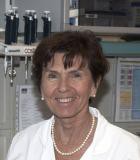
Area STEM: Scienze biomediche e biotecnologie
Competenze: biologia oncologica, farmacologia, ricerca traslazionale
Parole chiave: adenocarcinoma pancreatico, angiogenesi, cancro, coronavirus, Covid-19, farmaci antitumorali, metabolismo, metastasi tumorali, microambiente, tumore ovarico
Regione: Lombardia
Funzione/Ruolo
Dirigente del Laboratorio di Biologia e Terapia delle Metastasi Tumorali dell'IRCCS Mario Negri
Percorso professionale
Dopo la laurea in Scienze Biologiche all'Università degli studi di Milano nel 1979, Raffaella Giavazzi ottiene l'abilitazione all'esercizio della professione di biologa. Prosegue gli studi con un dottorato di ricerca in Biologia e Farmacologia, presso la Post-graduate School of Professional Education all'Istituto Mario Negri, e la specialità in Farmacologia all'Università degli studi di Milano. Dopo diverse esperienze all'estero, sia come ricercatrice al Cancer Metastasis and Treatment Laboratory del National Cancer Institute, in Maryland, sia come assistente alla docenza universitaria al Department of Cell Biology dell'M.D. Anderson Hospital and Tumor Institute, Università del Texas, ritorna in Italia. Dal 1986 è a capo del Laboratorio di Biologia e Terapia delle Metastasi Tumorali dell'Istituto di Ricerche Farmacologiche Mario Negri. Dal 2005 al 2007 è Presidente della Società Italiana di Cancerologia e dal 2008 al 2012 è componente del Comitato Esecutivo dell'Associazione Europea per la Ricerca sul Cancro. Dallo stesso anno fa parte del Consiglio di Amministrazione dell'Università di Trento.
Risultati scientifici
Raffaella Giavazzi ha sempre coltivato l'interesse scientifico per la biologia e farmacologia dei tumori. Nello specifico, si occupa dello studio del processo di creazione delle metastasi tumorali e dell'angiogenesi (moltiplicazione dei vasi sanguigni). Assieme al suo team del laboratorio di biologia e terapia delle metastasi, si occupa di valutazione pre-clinica e sperimentazione clinica di nuovi farmaci antitumorali, con particolare attenzione verso terapie per il carcinoma ovarico e il carcinoma pancreatico.
Attività editoriali e pubblicazioni
È autrice di più di 200 pubblicazioni, tra cui:
(2018) Resovi A, Bani MR, Porcu L, Anastasia A, Minoli L, Allavena P, Cappello P, Novelli F, Scarpa A, Morandi E, Falanga A, Torri V, Taraboletti G, Belotti D, Giavazzi R. Soluble stroma-related biomarkers of pancreatic cancer. Embo Molecular Medicine, 10(8), pii: e8741, doi: 10.15252/emmm.201708741.
(2016) Cesca M, Morosi L, Berndt A, Fuso Nerini I, Frapolli R, Richter P, Decio A, Dirsch O, Micotti E, Giordano S, D’Incalci M, Davoli E, Zucchetti M, Giavazzi R. Bevacizumab-induced inhibition of angiogenesis promotes a more homogeneous intratumoral distribution of paclitaxel, improving the antitumor response. Molecular Cancer Therapeutics,15(1):125-35.
(2014) Ricci R, Bizzaro F, Cesca M, Guffanti F, Ganzinelli M, Decio A, Ghilardi C, Perego P, Fruscio R, Buda A, Milani R, Ostano P, Chiorino G, Bani MR, Damia G, Giavazzi R. A platform of patient-derived tumor xenografts (EOC-xenografts) to recapitulate the clinicopathology and genetic alterations of ovarian cancer. Cancer Research, 74(23):6980-90.
(2013) Rovida A, Castiglioni V, Decio A, Scarlato V, Scanziani E, Giavazzi R, Cesca M. Chemotherapy counteracts metastatic dissemination induced by antiangiogenic treatment in mice. Molecular Cancer Therapeutics, 12(10):2237-47.
(2012) Moschetta M, Pretto F, Berndt A, Galler K, Richter P, Bassi A, Oliva P, Micotti E, Valbusa G, Schwager K, Kaspar M, Trachsel E, Kosmehl H, Bani MR, Neri D, Giavazzi R. Paclitaxel enhances the therapeutic efficacy of the F8-IL2 immunocytokine to EDA-fibronectin positive metastatic human melanoma xenografts. Cancer Research, 72(7):1814-24.
(2007) Giavazzi R, Bani MR, Taraboletti G. Tumor-host interaction in the optimization of paclitaxel based combination therapies with vascular targeting compounds. Cancer Metastasis Reviews, 26:481-88.
(2005) Rybak JN, Ettorre A, Kaissling B, Giavazzi R, Neri D, Elia G. In vivo protein biotinylation for identification of organ-specific antigens accessible from the vasculature. Nature Methods, 2(4):291-98.
(2003) Belotti D, Paganoni P, Manenti L, Garofalo A, Marchini S, Taraboletti G, Giavazzi R. Matrix Metalloproteinases (MMP9 and MMP2) Induce the Release of Vascular Endothelial Growth Factor (VEGF) by Ovarian Carcinoma Cells: Implications for Acites Formation. Cancer Research, 63:5224-29.
(1998) Valoti G, Nicoletti MI, Pellegrino A, Jimeno J, Hendriks H, D'Incalci M, Faircloth G, Giavazzi R. Ecteinascidin-743 (ET-743), a new marine natural product with potent antitumor activity on human ovarian carcinoma xenografts. Clinical Cancer Research, 4:1977-1983.
(1995) Taraboletti G, Garofalo A, Belotti D, Drudis T, Borsotti P, Scanziani E, Brown PD, Giavazzi R. Inhibition of angiogenesis and murine hemangioma growth by Batimastat, a synthetic inhibitor of matrix metalloproteinases. Journal of the National Cancer Instistute, 87:293-298.
(1993) Giavazzi R, Foppolo M, Dossi R, Remuzzi A. Rolling and adhesion of human tumor cells on vascular endothelium under physiological flow conditions. The Journal of Clinical Investigation, 92:3038-3044.
Riconoscimenti e premi
Raffaella Giavazzi ottiene nel 1981 il premio “Fellowship for Advanced Professional Training” dal Ministero italiano del Lavoro e dalla Comunità Economica Europea.
Nel 2003 vince il premio dalla “Lega Italiana per la lotta contro i tumori” per la carriera di ricerca.
Nel 2012 riceve il riconoscimento “Giorgio Prodi” dalla Società Italiana di Cancerologia.
Nel 2016 viene annoverata fra le "Top Italian Women Scientists".
Nel 2018 riceve il premio alla carriera “5th Simon Karpatkin Memorial Lecture”.

Funzione/Ruolo
Direttrice del Laboratorio di Microbiologica clinica, Virologia e Bio-emergenza dell'Ospedale Sacco di Milano e Professoressa Associata di Microbiologia Clinica al Dipartimento di Scienze Biomediche e Cliniche "Sacco" dell'Università degli Studi di Milano.
Percorso professionale
Dopo aver conseguito la laurea in Scienze Biologiche presso l'Università di Catania nel 1976, prosegue la sua formazione specializzandosi in Microbiologia clinica e Virologia. Nel 1984 consegue una seconda laurea in Medicina e Chirurgia presso la medesima università siciliana. Dal 1976 al 1981 fa parte dell'Istituto di Microbiologia dell'Università di Milano. Nel 1982 è interna in Microbiologia clinica presso il London Hospital e in Microbiologia orale presso l'Hospital Medical School For Dentistry di Londra. Nell'86 è interna in Microbiologia all'Università del Tennessee. Dal 1991 ad oggi è professoressa associata in Microbiologia clinica presso l'Università degli Studi di Milano. È a capo di numerosi gruppi di ricerca che si occupano di bioterorrismo, della SARS, di Ebola e di emergenze infettive. È inoltre componente della commissione nazionale sull'Aids dal 2007. Dal 2014 ad oggi è responsabile del laboratorio di Microbiologica clinica, Virologia e Bioemergenza dell'Ospedale Sacco di Milano.
Risultati scientifici
Nell'ambito dell'UOC (Unità operativa complessa) Microbiologia Clinica e Virologia , Maria Rita Gismondo ha implementato il settore "bioemergenza" composto da un laboratorio BSL3 (Bio safety level 3) ed un laboratorio BSL4 (uno dei due esistenti in Italia) dedicati alle gravi crisi sanitarie. Gismondo ha riunito intorno a sé un gruppo di ricerca e operativo con l'obiettivo di fornire una risposta rapida alle emergenze infettive, sia di origine naturale (pandemie), che volontarie (bioterrorismo). Il laboratorio da lei diretto è oggi il punto di riferimento per la diagnostica di malattie tropicali, per i rischi da antrace e per quelli legati ad altri elementi potenzialmente infettivi.
Attività editoriali e pubblicazioni
Maria Rita Gismondo è editrice associata di numerose riviste scientifiche, oltre che autrice di numerosi articoli, tra cui:
(2016) Rimoldi SG, De Vecchi E, Pagani C, Antona C, Gismondo MR. Use of Dithiothreitol to Dislodge Bacteria From the Biofilm on an Aortic Valve in the Operating Theatre: A Case of Infective Endocarditis Caused by Staphylococcus aureus and Proteus mirabilis. The Annals of thoracic surgery, 102(4):e357-9.
(2016) Rossotti R, Borghi V, Callegaro AP, Rusconi S, Gismondo MR. Impact of Circulating Resistance-Associated Mutations on HIV Pre-Exposure Prophylaxis (PrEP) efficacy: Modeling from Antiretroviral Resistance Cohort Analysis (ARCA) National Database.Journal of clinical virology: the official publication of the Pan American Society for Clinical Virology.
(2016) Cagnoni G, Rimoldi SG, Pagani C, Gismondo MR. Can Drainage Using a Negative-Pressure Wound Therapy Device Replace Traditional Sample Collection Methods?. Surgical Infections, 17(5):577-82.
(2016) Caruso I, Santandrea S, Gismondo MR, Sarzi Puttini P. Vaccination with endosomal unknown epitopes produces therapeutic response in rheumatoid arthritis patients and modulates adjuvant arthritis of rats. Journal of Translational Medicine, 14:162.
(2015) Ridolfo AL, Sara Giordana Rimoldi SG, Pagani C, Gismondo MR. Diffusion and transmission of carbapenem-resistant Klebsiella pneumoniae in the medical and surgical wards of a university hospital in Milan, Italy. Journal of Infection and Public Health, 9(1):24-33.
(2015) D'Alessandro S, Corbett Y, Ilboudo DP, Parapini S, Gismondo MR. Salinomycin and Other Ionophores as a New Class of Antimalarial Drugs with Transmission-Blocking Activity. Antimicrobial Agents and Chemotherapy, 59(9):5135-44.
(2015) Vocale C, Rimoldi SG, Pagani C, Sambri V, Gismondo MR. Comparative evaluation of the new xTAG GPP multiplex assay in the laboratory diagnosis of acute gastroenteritis. Clinical assessment and potential application from a multicentre Italian study. International Journal of Infectious Diseases, 34:33-7.
(2014) Perrone V, Cattaneo D, Radice S, Clementi E, Gismondo MR. Impact of therapeutic drug monitoring of antiretroviral drugs in routine clinical management of patients infected with human immunodeficiency virus and related health care costs: A real-life study in a large cohort of patients. ClinicoEconomics and Outcomes Research, 6:341-8.
(2013) Tau P, Mancon A, Mileto D, Rusconi S, Gismondo MR. Favorable Therapeutic Response with an Antiretroviral Salvage Regimen in an HIV-1-Positive Subject Infected with a CRF11-cpx Virus.AIDS research and human retroviruses, 30(5):480-3.
(2013) de Luca A, Dunn D, Zazzi M, Sloot, PM, Gismondo MR. Declining Prevalence of HIV-1 Drug Resistance in Antiretroviral Treatment-exposed Individuals in Western Europe.The Journal of Infectious Diseases, 207(8):1216-20.
Riconoscimenti e premi
Nel 2005 riceve l'Ambrogino d'Oro in qualità di direttrice del Laboratorio di Microbiologia Clinica del Polo Universitario Azienda Ospedaliera "L. Sacco" di Milano.
Nel 2007 è stata insignita del Woman of Achievement 2007.
Nel 2009, le è stato conferito il Premio "Rosa Camuna" da parte della Regione Lombardia.
E' stata inoltre nominata rappresentante del Ministero dell'Università nel Consiglio di amministrazione della Fondazione Smith Kline.
In memoria del collega microbiologo norvegese Tom Bergan, ha fondato il Centro Studi Tom Bergan, impegnato nella promozione di iniziative culturali scientifiche, tra cui "Donna in Salute" e lo "Sportello Unico per gli anziani".

Funzione/Ruolo
Professoressa associata di Patologia generale, Group Leader del Laboratorio di Oncologia Molecolare, membro fondatore del Centro per la Complessità e Biosistemi, presso l'Università degli Studi di Milano
Percorso professionale
Dopo aver conseguito la laurea nel 1989 all'Università degli Studi di Milano, prosegue la sua formazione attraverso un dottorato di ricerca in Fisiologia nel 1995 presso la stessa università. Tra il 1990 e il 1991 lavora un anno all'Istituto di Ricerche Farmacologiche Mario Negri di Milano, e da qui parte per frequentare nove mesi il Karolinska Institutet, università medica svedese. Dal 1993 al 1994 continua la sua formazione e le sue ricerche nel German Cancer Research Center (DKFZ) di Heidelberg. Nel 1995 passa cinque mesi alla Rockefeller University (NY, USA). Dal 1994 al 1997 fa parte dell'AIRC (Associazione Italiana per la Ricerca sul Cancro). Rientra poi all'Università degli Studi di Milano dove svolge le sue ricerche tra il 1997 e il 2001. Dal 2002 è Tenured Research professor e nel 2016 è professoressa associata di Patologia Generale, sempre nell'Università degli Studi di Milano.
Risultati scientifici
Nel 2015 fonda il Center for Complexity & Biosystems nell'Università degli Studi di Milano; all'interno del centro di ricerca e del laboratorio OncoLab, Caterina La Porta e colleghi studiano i meccanismi fondamentali che portano una cellula sana a diventare una cellula tumorale. Nello specifico caso del melanoma, tumore molto aggressivo e difficilmente curabile, la ricerca ha condotto all'identificazione di una sottopopolazione cellulare chiamata cellule staminali tumorali (CSC). Secondo i risultati della ricerca dell'équipe di La Porta, tutte le cellule tumorali di melanoma si possono trasformare in cellule staminali tumorali (CSC) quando il numero di CSC scende al di sotto di una soglia critica, effetto dell'attivazione di una rete complessa di piccole molecole di RNA non codificante. Ne risulta che la frazione di cellule staminali tumorali all'interno del tumore si mantiene costante. Grazie a questa identificazione potrebbe cambiare l'approccio terapeutico nei confronti del tumore eliminando in modo selettivo le cellule staminali tumorali che alimentano il tumore. Obiettivo della ricerca di Caterina La Porta è ora quello di indagare se il modello CSC è il modello corretto per la progressione del melanoma con un approccio multidisciplinare (biologia del cancro, fisica teorica e studi clinici) e di indagare se questo può diventare un modello universale, da utilizzare per fini diagnostici in vari tumori. L'obiettivo a lungo termine resta comprendere il problema dei sistemi biologici altamente complessi e integrati del corpo umano. Un'altra linea di ricerca riguarda lo studio delle patologie neurodegenerative, in particolare la comprensione dell'aggregazione di proteine quali beta amiloide e neuroserpina e lo sviluppo di innovative tecniche diagnostiche.
Attività editoriali e pubblicazioni
È autrice di numerose pubblicazioni scientifiche nazionali ed internazionali fra cui:
(2018) Font-Clos F., Zapperi S., La Porta C.A.M. Topography of epithelial-mesenchymal plasticity, PNAS, 115: 5902-5907.
(2018) Chepizhko O., Lionetti M.C., Malinverno C., Scita G., Zapperi S., La Porta C. A. M. From jamming to collective cell migration through a boundary induced transition. Soft Matter, 14 (19): 3774-3782
(2018) Font-Clos F., Zapperi S., La Porta C.A.M. Gene expression signature of obesity in monozygotic twins. Physiol Meas. 39, 044008.
(2017) Font-Clos F., Zapperi S., La Porta C.A.M. Integrative analysis of pathway deregulation in obesity. Nature Publishing group: Systems Biology and Applications, 3:18.
(2017) Bertalan Z., Zapperi S., La Porta C. A. M. Modeling mechanical control of spindle orientationof intestinal crypt stem cells, Journal of Theoretical Biology, 430: 103–108.
(2017) Font F., Zapperi S., La Porta C.A.M. Integrative analysis of pathway deregulation in obesity. Nature Publishing Journal Systems Biology and Applications 3:18.
(2017) Giampietro C., Lionetti M.C., Costantini G., Mutti F., Zapperi S., La Porta C.A.M. Cholesterol impairment contributes to neuroserpin aggregation. Scientific Reports 7, 43669.
(2016) Chepizhko O, Giampietro C, Mastrapasqua E, [...] La Porta CAM. Bursts of activity collective cell migration. Proceedings of the National Academy of Sciences, 113(41):11408-11413.
(2016) Costantini G, Budrikis Z, Taloni A, [...] La Porta CAM. Fluctuation in protein aggregation: design of preclinical screening for early diagnosis of neurodegenerative disease. Physical Review Applied, 6, 034012.
(2015) Bertalan Z, Budrikis Z, La Porta CAM, Zapperi S. Role of the Number of Microtubules in Chromosome Segregation during Cell Division. PLoS One, 10(10):e0141305.
Riconoscimenti e premi
Caterina La Porta fa parte inoltre di numerose società scientifiche nazionali e internazionali, come la (International) Metastasis Research Society, la International Angiogenesis Association, l'American Association for Cancer Research (AACR), l'International Society for stem cell research (ISSCR) e l'American Physical Society e Complex System Society.
Nel 2008 è nominata per il premio "Genomic Pioneers".
Nel 2009, viene selezionata da Faculty of 1000 Biology per un articolo pubblicato su PLoS One.

Funzione/Ruolo
Preside della Facoltà di Medicina e Chirurgia e Presidente del Presidio di qualità all'Università Vita-Salute San Raffaele, dove è anche Professoressa Ordinaria in Biologia Applicata. Responsabile dell’Unità Proteomica del Metabolismo del Ferro, Divisione di Neuroscienze, all'Ospedale San Raffaele.
Percorso professionale
Dopo la laurea in Scienze Biologiche presso l'Università degli Studi di Milano nel 1982, prosegue il suo percorso di formazione all'interno del Dipartimento di Scienze e Tecnologie Biomediche dell'Ospedale San Raffaele. Nel 1984 ottiene una borsa di studio dell'European Molecular Biology Organization presso l'European Molecular Biology Laboratory di Heidelberg. Due anni dopo riceve una borsa triennale di avviamento all'attività scientifica erogata dall'Istituto Scientifico San Raffaele che le consente di entrare a far parte del laboratorio del "Metabolismo del Ferro". Nel 2005 diventa professoressa associata e successivamente ordinaria di Biologia Applicata nella Facoltà di Medicina e Chirurgia dell'Università Vita-Salute San Raffaele, di cui diventa Preside nel 2025. Attualmente è anche Responsabile dell'unità di ricerca "Proteomica del Metabolismo del Ferro" dell'Istituto San Raffaele di Milano e Presidente del Presidio di qualità dell'Università San Raffaele.
Risultati scientifici
Sonia Levi si interessa da anni allo studio del metabolismo del ferro e delle malattie ad esso associate. Mel 1984 si reca all'EMBL (European Molecular Biology Laboratory) per apprendere le nascenti tecniche del DNA ricombinante applicate all'espressione delle proteine. Al suo ritorno in Italia porta queste nuove metodologie nel laboratorio del "Metabolismo del Ferro" dell'Ospedale San Raffaele di Milano, dove riesce a ottenere le ferritine umane ricombinanti ed i loro mutanti, utili nello studio dell'assemblaggio di strutture proteiche complesse. Dal 1992 al 2002 prosegue la sua ricerca all'interno del laboratorio "Ingegneria delle Proteine" presso il Dipartimento di Ricerca Biotecnologica (DIBIT) dell'Istituto Scientifico San Raffaele e nel 2001 identifica ed isola una nuova ferritina umana che si localizza nel mitocondrio (piccoli organelli cellulari). La caratterizzazione biologica e funzionale di questa nuova proteina è uno dei suoi principali argomenti d'interesse, così come lo studio delle alterazioni del metabolismo del ferro nel cervello. Recentemente si è dedicata alla comprensione dei meccanismo molecolari che legano l'accumulo di ferro cerebrale sarebbe coinvolto ad alcuni processi neuro-degenerativi.
Attività editoriali e pubblicazioni
Autrice di più di cento pubblicazioni italiane ed internazionali fra cui:
(2016) Orellana DI, Santambrogio P, Rubio A, Yekhlef L, Cancellieri C, Dusi S, Giannelli SG, Venco P, Mazzara PG, Cozzi A, Ferrari M, Garavaglia B, Taverna S, Tiranti V, Broccoli V, Levi S. Coenzyme A corrects pathological defects in human neurons of PANK2-associated neurodegeneration. EMBO Molecular Medicine, 8 (10):1197-1211.
(2015) Maccarinelli F, Pagani A, Cozzi A, Codazzi F, Di Giacomo G, Capoccia S, Rapino S, Finazzi D, Politi LS, Cirulli F, Giorgio M, Cremona O, Grohovaz F, Levi S. A novel neuroferritinopathy mouse model (ftl 498instc) shows progressive brain iron dysregulation, morphological signs of early neurodegeneration and motor coordination deficits. Neurobiology of Disease, 81:119-33.
(2013) Cozzi A, Santambrogio P, Privitera D, Broccoli V, Rotundo LI, Garavaglia B, Benz R, Altamura S, Goede JS, Muckenthaler MU, Levi S. Human L-ferritin deficiency is characterized by idiopathic generalized seizures and atypical restless leg syndrome. Journal of Experimental Medicine, 210(9):1779-91.
(2009) Campanella A, Rovelli E, Santambrogio P, Cozzi A, Taroni F, Levi S. Mitochondrial ferritin limits oxidative damage regulating mitochondrial iron availability: hypothesis for a protective role in Friedreich ataxia. Human Molecular Genetics, 18(1):1-11.
(2004) Campanella A, Isaya G, O'Neill HA, Santambrogio P, Cozzi A, Arosio P, Levi S. The expression of human mitochondrial ferritin rescues respiratory function infrataxin-deficient yeast. Human Molecular Genetics, 13(19):2279-88.
(2002) Arosio P, Levi S. Ferritin, iron homeostasis, and oxidative damage. Free Rqical Biology and Medicine, 33(4):457-463.
(2001) Levi S, Corsi B, Bosisio M, Invernizzi R, Volz A, Sanford D, Arosio P, Drysdale J. A Human mitochondrial ferritin encoded by an introless gene. Journal of Biological Chemistry, 276(27):24437-40.
(1994) Levi S, Santambrogio P, Cozzi A, Rovida E, Corsi B, Tamborini E, Spada S, Albertini A, Arosio P. The role of the L-chain in ferritin iron incorporation. Studies of homo and heteropolymers. Journal of Molecular Biology, 238(5):649-54.
(1991) Lawson DM, Artymiuk PJ, Yewdall SJ, Smith JM, Livingstone JC, Treffry A, Luzzago A, Levi S, Arosio P, Cesareni G, et al. Solving the structure of human H ferritin by genetically engineering intermolecular crystal contacts. Nature, 349(6309):541-544
(1988) Levi, S., Luzzago A, Cesareni G, Cozzi A, Franceschinelli F, Albertini A & Arosio P. Mechanism of ferritin iron uptake: activity of the H-chain and deletion mapping of the ferro-oxidase site. Journal of Biological Chemistry, 263: 18086-18092.
Riconoscimenti e premi
Dal 2016 al 2018 è stata inserita fra le “Top Italian Women Scientist”.

Funzione/Ruolo
Professoressa ordinaria di Fisiologia Vegetale Università di Padova
Percorso professionale
Nel Luglio 1974 si laurea in Biologia all'Università di Napoli, Federico II. Nell’Ottobre 1974 vince un posto di perfezionamento presso la Normale di Pisa. Dal 1975 al 1976 lavora nel laboratorio di Genetica dello sviluppo e Biologia Molecolare del prof. Garcia-Bellido all'Università di Madrid. Dal 1976 al 1982 è ricercatrice CNR presso l'Istituto di Mutagenesi e Differenziamento di Pisa. Dal 1983 al 1984 è Research Fellow nel Dept. of Genetics and Plant Pathology dell' Università di Berkeley, California. Nel 1987 diventa Professoressa Associata di Fisiologia Vegetale e insegna, fino al 1990, alla all'Università della Basilicata, e poi all'Università di Padova dove nell’ottobre 2000 diventa Ordinaria alla Facoltà di Scienze MM.FF.NN, ora Dipartimento di Biologia.
Risultati scientifici
L’attività scientifica è iniziata con una tesi di genetica molecolare batterica, svolta presso l'Istituto Internazionale di Genetica e Biofisica del CNR di Napoli. L’attività è continuata con studi di genetica dello sviluppo sul sistema modello Drosofila a Madrid e successivamente con studi di genetica somatica vegetale a Pisa. Nell' 82 ha iniziato un progetto che mirava all’isolamento e caratterizzazione di mutanti cellulari temperatura-sensibili alterati nel processo di embriogenesi somatica di carota (sistema modello per studi differenziativi vegetali). Lo studio delle alterazioni del differenziamento cellulare vegetale è stato oggetto di due programmi triennali consecutivi della comunità europea che hanno dato luogo a numerose pubblicazioni che costituiscono il nocciolo della produzione scientifica fino alla fine degli anni novanta. Successivamente Fiorella Lo Schiavo ha studiato meccanismi di percezione e trasduzione del segnale ormonale, inizialmente dell’auxina e più recentemente delle citochinine, in diversi sistemi cellulari vegetali. Ha poi condotto studi su alcune proteine canale, in particolare canali di potassio, indagandone anche la funzione in alcuni processi differenziatividelle piante.Ha indagato successivamente alcuni meccanismi di base dei processi di senescenza di organo utilizzando le colture cellulari come sistema modello, in particolare studiando le fasi finali della morte programmata cellulare della senescenza. Recentemente ha analizzato, mediante tecniche di imaging, il ruolo di importanti molecole segnali cellulari, quali calcio e le specie reattive dell’Ossigeno (ROS) indotte da stress abiotici in piante modello e in riso.
Attività editoriali e pubblicazioni
Autrice di oltre 100 pubblicazioni, fra cui:
[2018] Formentin E, Sudiro C, Perin G, Riccadonna S, Barizza E, Baldoni E, Lavezzo E, Stevanato P, Sacchi GA, Morosinotto T, Zottini M, Lo Schiavo F. Transcriptome and cell physiological analyses in different rice cultivars provide novel insights into adaptive and salinity stress responses.Frontiers in Plant Science, 9: 204.
[2017] Teardo E, Carraretto L, Wagner S, Formentin E, Behera S, De Bortoli S, Larosa V, Fuchhs P, Lo Schiavo F, Raffaello A, Rizzuto R, Costa A, Schwarzländer M and Ildiko Szabò Physiological characterization of a plant mitochondrial calcium uniporter in vitro and in in vivo. Plant Physiology, 173: 1-16.
[2015] D’Alessandro S, Golin S, Hardtke, Lo Schiavo F, Zottini M. The co-chaperone p23 controls root development through the modulation of auxin distribution in the Arabidopsisroot meristem. J. of Experimental Botany, 66(16): 5113-5122.
[2015] Teardo E, Carraretto L, De Bortolis S, Costa A, Behera S, Wagner R, Lo Schiavo F, Formentin E, Szabo I. Alternative splicing-mediated targeting of the Arabidopsis Glutamate Receptor 3.5 to mitochondria organelle morphology. Plant Physiology, 167 (1): 216-227.
[2014] Ruberti C, Costa A, Pedrazzini E, Lo Schiavo F, Zottini M. FISSION1A, an Arabidopsis tail-anchored protein, is localized to three subcellular compartments. Molecular Plant,7: 1393–1396, doi: 10.1 093/mp/ssu027.
[2013] Vescovi M, Zaffagnini M, Trost P, Lo Schiavo F, Costa A. Nuclear Accumulation of Cytosolic Glyceraldehyde-3-Phoshate Dhydrogenase in cadmium-Stressed Arabidopsis Roots.Plant Physiology, 162: 333-346, ISSN: 0032-0889.
[2012] Vescovi M, Riefler M, Gessuti M, Novak O, Schmulling T, Lo Schiavo F. Programmed cell death induced by high levels of cytokinin in Arabidopsis cultured cells is mediated by the cytokinin receptor CRE1/AHK4. Journal of Experimental Botany, 63: 2825-2832.
[2012]Loro G, Drago I, Pozzan T, Lo Schiavo F, Zottini M, Costa A. Targeting of Cameleon to different subcellular compartments reveals a strict cytoplasmic/mitochondrial Ca2+ handling relationship in plant cells.Plant Journal, 71(1): 1-13.
[2011] Horie T, Brodsky DE, Costa A, Kaneko T, Lo Schiavo F, Katsuhara M, Schroeder JI. K+ transport by the OsHKT2;4 transporter from rice (Oryza sativa) with atypical Na+ transport properties and competition in permeation of K+ over Mg2+ and Ca 2+ ions. Plant Physiology, 156(3):1493-507.
[2010] Costa A, Drago I, Behera S, Zottini M., Pizzo P, Schroeder Ji, Pozzan T, Lo Schiavo F. H2O2 in plant peroxisomes: an in vivo analysis uncovers a Ca(2+)-dependent scavenging system. Plant Journal, 62: 760-772.
[2009] De Michele R, Vurro E, Rigo C.Costa A, Elviri L, Di Valentin M, Careri M, Zottini M, Sanita' Di Toppi L, Lo Schiavo F. Nitric Oxide is involved in cadmium-induced programmed cell death in Arabidopsis suspension cultures. Plant Physiology, 150: 217-228.
[2009] De Michele R, Formentin E, Todesco M, Toppo S, Carimi F, Zottini M., Barizza E, Ferrarini A, Delledonne M, Fontana P, Lo Schiavo F. Transcriptome analysis of Medicago truncatula leaf senescence: similarities and differences in metabolic and transcriptional regulations as compared with Arabidopsis, nodule senescence and nitric oxide signalling.New Phytologist, 181: 563-575.
Riconoscimenti e premi
Nel 1975, ha vinto il Premio Scoffone-Cremona per la migliore tesi di laurea in Biologia Molecolare.
Dagli anni ’80 in poi, è stata responsabile di progetti nazionali (PF. Ingegneria genetica, IPRA, RAISA, MIPA, Biotecnologie e PRIN) e Internazionali (UE), consulente scientifica della National Science Foundation e dell' Unione Europea e di vari giornali scientifici internazionali.
Nel quadriennio '90-'94 è stata segretaria generale dell'International Association Plant Tissue Culture.
Nel Maggio 1997, ha diretto il corso NATO "Cellular Integration of Signalling Pathway in Plant Development" (Maratea).
Dal 1995 al 2002 è stata nel direttivo della Società di Fisiologia Vegetale e dal 2009 al 2014 nel direttivo della Società di Biologia Vegetale.
Nel settembre del 2012 è stata eletta per la prima volta delegata italiana nel consiglio della FESPB, ora PBE (Plant Biology Europe); carica rinnovata nel febbraio 2018.
E' stata coordinatrice del collegio docente, indirizzo Biotecnologie, della scuola di dottorato di Bioscienze e Biotecnologie dell'Università di Padova dalla sua costituzione fino al 2013.
Da inizio 2014 è membro del nuovo corso di Dottorato in Bioscienze dell’Università di Padovae referente del curriculum "Biochimica & Biotecnologie".
Dal 2016 è Presidente della commissione ASN per il settore della Fisiologia Vegetale.

Area STEM: Scienze biomediche e biotecnologie
Competenze: biotecnologie farmacologiche, farmacologia cellulare e molecolare
Parole chiave: coronavirus, Covid-19, farmaci, farmacologia di genere, invecchiamento, malattie metaboliche, menopausa, metabolismo epatico, neuroinfiammazione, recettori degli estrogeni, vaccini, vaccini a RNA o DNA, vaccini innovativi
Regione: Lombardia
Funzione/Ruolo
Professoressa ordinaria di Farmacologia e Biotecnologie e Coordinatrice del Centro di Eccellenza per le malattie Neurodegenerative presso l'Università degli studi di Milano
Percorso professionale
Dopo la laurea in Scienze Biologiche presso l’Università degli studi di Milano nel 1973, prosegue i suoi interessi scientifici con una borsa di studio presso l’Istituto di Farmacologia e Farmacognosia diretto dal professor Rodolfo Paoletti. Vincitrice del Salk Institute - University of Texas Award continua la sua formazione inizialmente presso il Dipartimento di Farmacologia e Neurobiologia dell’Università del Texas, a Houston, negli Stati Uniti e poi presso il Dipartimento di Biologia Cellulare del Baylor College of Medicina sotto la guida del professor Bert O’Malley. Ritornata in Italia nel 1982 come ricercatrice, fonda e dirige un centro modello di collaborazione Università-Industria frutto di una iniziativa dell’Università di Milano e dell’Azienda Farmaceutica Hoffman-LaRoche: il Milano Molecular Pharmacology Lab (MPL). Alla fine degli anni ’80, in qualità di professoressa associata, continua le sue ricerche presso il Dipartimento di Scienze Farmacologiche dell’Università di Milano. Dal 2002 dirige il Centro di Eccellenza sulle malattie neurodegenerative dell’Università di Milano, un centro sperimentale finanziato da un fondo bandito dal Ministero dell’Università e della Ricerca nel quale è direttamente responsabile di un gruppo di ricerca costituito da 20 ricercatori e giovani laureati. Dal 2006 al 2014 fonda e presiede la TOP srl, spin-off dell’Università di Milano. Quale esperta di Biotecnologie Farmacologiche ricopre diverse cariche ministeriali: è membro del Comitato di Consulenza del Primo Ministro Italiano nel settore delle Biotecnologie, Biosicurezza e Scienze della Vita, del Comitato Scientifico “Innovative Medicine Initiative” dell’Unione Europea, dello European ESFRI Working Group for Health and Food, del Council of the European Society for Molecular Imaging (ESMI) ed è delegata del MIUR per l’European Pilot Initiative on Joint Programming on Neurodegenerative Diseases di cui è Vice-Presidente dal 2010. Attualmente è stata nominata dalla Società Americana di Endocrinologia membro della Endocrine Society EU Task force for Endocrine Disrupters e collabora con l’Innovative Medicine Initiative2 in qualità di membro SSG Panel on Neurodegeneration.
Risultati scientifici
La ricerca svolta da Adriana Maggi è da sempre incentrata sullo studio delle attività fisiologica svolta dagli estrogeni, con particolare riferimento a organi non-riproduttivi. Gli studi iniziali sono associati alla scoperta che il recettore degli estrogeni è presente in tutte le cellule cerebrali (oligodendrociti, astrociti, microglia e neuroni), anche in aree cerebrali non associate a funzioni riproduttive, bensì legate al controllo di attività emozionali (corteccia frontale, ippocampo). Più recentemente lo studio della attività anti-infiammatoria degli estrogeni attivi nella microglia ha condotto a nuove ipotesi circa la maggiore incidenza di malattie neurodegenerative nei soggetti di sesso femminile e al ruolo del sesso nella risposta a stimoli diversi e insulti di tipo ischemico. Al fine di meglio comprendere l’azione degli estrogeni, Adriana Maggi ha ideato e creato un modello unico per lo studio dell’azione di questi ormoni in organismi viventi e per l’identificazione di nuovi farmaci attivi tramite questi recettori: il topo reporter ERE-Luc. Tale sistema di reporter è stato in seguito utilizzato per la generazione di altri sistemi modello per lo studio di altri recettori (per esempio il recettore dei PPAR) e processi complessi quali stress ossidativo, infiammazione, trasporto di calcio, apoptosi e altri. La disponibilità del modello ERE-Luc per lo studio della attività dei recettori per gli estrogeni ha permesso di dimostrare per la prima volta che nei mammiferi gli estrogeni sono molto attivi a livello epatico. Studi recenti dimostrano che negli organismi di sesso femminile gli estrogeni controllano il metabolismo epatico e la sintesi di lipidi in stretta relazione con l’attività riproduttiva. Tale azione è fondamentale nel differenziare il metabolismo energetico nei mammiferi dei due sessi e la scoperta fatta ha una rilevanza significativa non solo per una migliore comprensione del metabolismo epatico sesso-dipendente, ma anche per la comprensione dei meccanismi eziopatogenetici di una serie di malattie associate con l’invecchiamento e, nella donna, strettamente legate alla post-menopausa.
I risultati delle ricerche fatte hanno aperto una nuova via per la comprensione delle differenze metaboliche tra maschi e femmine permettendo la comprensione delle differenze di sesso/genere nella prevalenza di una serie molto ampia di malattie che includono gran parte delle malattie associate all’invecchiamento (dal diabete alle malattie neurodegenerative) e nel metabolismo epatico dei farmaci e xenobiotici in genere. Inoltre, la scoperta della rilevanza della attività degli estrogeni a livello epatico suggerisce una nuova via per la generazione di formule di sostituzione ormonale nella post-menopausa più efficaci e dotate di minori effetti collaterali.
L’attività di ricerca di Adriana Maggi è stata riconosciuta e supportata da numerosissimi enti finanziatori in campo nazionale e internazionale. Su finanziamento della Commissione Europea la professoressa ha coordinato 4 Consorzi di ricerca europei per lo studio della fisiologia e dell’invecchiamento della donna e degli interferenti endocrini, inoltre più recentemente la sua ricerca è stata finanziata dai Nationals Institutes of Health con un grant RO1 per lo studio dell’invecchiamento della donna e ERC per lo studio della fisiologia di genere.
Attività editoriali e pubblicazioni
È autrice di più di 200 pubblicazioni scientifiche, 6 brevetti e tre monografie. Tra le più recenti pubblicazioni:
(2017) Della Torre S, Maggi A. Sex Differences: A Resultant of an Evolutionary Pressure? Cell Metabolism, 25:499-505.
(2017) Rizzi N, Rebecchi M, Levandis G, Ciana P and Maggi A. Identification of novel loci for the generation of reporter mice. Nucleic Acids Reserach, 45:e37.
(2016) Della Torre S, Mitro N, Fontana R, Gomaraschi M, Favari E, Recordati C, Lolli F, Quagliarini F, Meda C, Ohlsson C, Crestani M, Uhlenhaut NH, Calabresi L, Maggi A. An Essential Role for Liver ERα in Coupling Hepatic Metabolism to the Reproductive Cycle. Cell Reports, 15:360-71.
(2016) Villa A, Vegeto E, Poletti A, Maggi A. Estrogens, Neuroinflammation, and Neurodegeneration. Endocrine Reviews. 37:372-402.
Benedusi V, Martini E, Kallikourdis M, Villa A, Meda C and Maggi A. Ovariectomy shortens the life span of female mice. Oncotarget (2015) 6:10801-11.
(2014) Della Torre S, Benedusi V, Fontana R, Maggi A, Energy Metabolism and reproduction, an ancestral balance to be preserved for women health. Nature Review Endocrinology, 10:13-23.
(2012) Villa A, Della Torre S, Stell A, Cook J, Brown M, Maggi A. Tetradian oscillation of estrogen receptor α is necessary to prevent liver lipid deposition. Proceedings of the National Academy of Sciences USA. 109:11806-11.
(2011) Della Torre S, Rando G, Meda C, Stell A, Chambon P, Krust A, Ibarra C, Magni P, Ciana P. and Maggi A. Amino Acid-dependent activation of liver Estrogen Receptor alpha integrates metabolic and reproductive functions via IGF-1. Cell Metabolism, 13: 205-214.
(2010) Rando G, Horner D, Biserni A, Ramachandran B, Caruso D, Ciana P, Komm B. and Maggi A. An innovative method to classify SERMs based on the dynamics of estrogen receptor transcriptional activity in living animals. Molecular Endocrinology, 24: 735-744.
(2009) Brufani M, Ceccacci F, Filocamo L, Garofalo B, Joudioux R, La Bella A, Leonelli F, Migneco LM, Bettolo RM, Farina PM, Ashcroft GS, Routley C, Hardman M, Meda C, Rando G, Maggi A. Novel locally active estrogens accelerate cutaneous wound healing. A preliminary study. Molecular Pharmaceutics, 6: 543-56.
(2003) Ciana P, Raviscioni M, Mussi P, Vegeto E, Que I, Parker MG, Lowik C and Maggi A. In vivo imaging of transcriptionally active estrogen receptors. Nature Medicine, 9: 82-6.
Riconoscimenti e premi
Adriana Maggi ha ottenuto molti premi e riconoscimenti nel corso della sua carriera professionale, fra cui il Salk-Institute-University of Texas Award; il NATO Award for exchange studies, il Lecture Award of the British Endocrine Society, il Premio per la Ricerca Farmindustria-Telethon, il PFIZER Investigator-Initiated Research Award, l’ERC Advanced Grant Award.

Area STEM: Scienze biomediche e biotecnologie
Competenze: medicina molecolare, medicina traslazionale, oncologia, ricerca oncologica
Parole chiave: biomarcatori molecolari circolanti, biopsie liquide, biosensori, cellule endoteliali circolanti, cellule staminali tumorali, cellule tumorali circolanti, coronavirus, Covid-19, Covid-19 nei pazienti oncologici, Covid-19: patogenesi, nanomedicia, rigenerazione tessutale
Regione: Calabria
Funzione/Ruolo
Ricercatrice senior Bionem (Bio- and Nano-Engineering for Medicine) presso i laboratori di nanotecnologie del Dipartimento di Medicina Sperimentale e Clinica, Università Magna Grecia di Catanzaro.
Percorso professionale
Laureatesi presso l’Università di Messina in Medicina e Chirurgia prosegue i suoi studi presso Università Cattolica del Sacro Cuore di Roma dove consegue la specializzazione in Oncologia Medica. Dopo il conseguimento del dottorato in Ricerca in Biologia Cellulare e Umana presso l’università di Messina, come vincitrice della borsa biennale AIRC, svolge la sua attività di ricerca e di professoressa a contratto presso l’Università Magna Grecia di Catanzaro. Ha collaborato con l’Istituto Italiano di Tecnologie (IIT) di Genova nella posizione di post-doc, per lo sviluppo di dispositivi per la caratterizzazione di biomarcatori prognostici nei pazienti tumorali. NM nel 2005 è stata consulente presso Consolato dell'Ambasciata italiana Nosy-Be Madagascar in tema di valutazione dei rischi oncologici legati a problemi territoriali con particolare interesse per l'età pediatrica. Nel contesto del progetto "Monitoraggio e diagnosi precoce di patologie tumorali legate all'esposizione a sostanze tossiche ambientali nella popolazione calabrese" ha svolto, nel 2009, consulenza presso ARPACAL - Agenzia Regionale per la Protezione Ambientale della Calabria. Nel 2011 è stata consulente scientifica per il progetto "Centro del Farmaco" IRCS San Raffaele Pisana di Roma. Dal 2013 è responsabile scientifica del progetto di ricerca CHARACTEX (Caratterizzazione delle cellule tumorali circolanti da sangue periferico, midollare e cordonale, e di cellule tumorali da tessuto mediante valutazione citofluorimetrica ed espansione in vitro). Partecipa al progetto nazionale come responsabile scientifica e coordinatrice della sezione di Germaneto, Università Magna Grecia, per lo svolgimento del progetto SCENIC (Caratterizzazione immunofenotipica delle cellule endoteliali circolanti da sangue periferico, midollare e cordonale mediante valutazione citofluorimetrica in condizioni standardizzate di strumento, reagenti e protocolli) commissionato dalla Becton Dickinson (BD). Nel 2015 è responsabile scientifica del progetto di ricerca ENDOFIRE (Caratterizzazione immunofenotipica delle cellule endoteliali circolanti e degli exosomi da sangue periferico mediante valutazione citofluorimetrica in pazienti affetti da fibrillazione atriale) e dello studio osservazionale ENXOCORE (Caratterizzazione immunofenotipica delle cellule endoteliali circolanti staminali (EPC) e differenziate (CEC) e degli exosomi da sangue periferico, mediante valutazione citofluorimetrica, in pazienti affetti da infarto miocardico acuto senza sopraslivellamento del segmento S-T (NSTEMI). Dal 1999 è membro della Associazione Italiana dei Medici Oncologi (AIOM) e dal 2017 della Member Royal Society of Medicine. Nel 2017 si abilita a professoressa di seconda fascia nei settori scientifico disciplinari MED06 (Oncologia Medica) e MED46 (Medicina Traslazionale). Per l’anno accademico 2017-18 è direttrice e docente del corso di aggiornamento in Screening, diagnosi e prognosi e valutazione della efficacia di farmaci in vitro con l'ausilio della biopsia liquida" presso la Facoltà di Medicina e Chirurgia Università Magna Graecia. Per l’anno accademico 2018-19 è direttrice e coordinatrice didattica del Master di I livello in “Liquid Biopsy in Tumors and other Complex Diseases”. Presso i laboratori BionemL@b del Dipartimento di Medicina Sperimentale e Clinica, Università Magna Grecia, si dedica alla ideazione e realizzazione di dispositivi o lab-on-chip finalizzati all’ isolamento e caratterizzazione delle cellule tumorali circolanti.
Risultati scientifici
Natalia Malara ha contribuito a sviluppare un protocollo neoadiuvante per l'immunomodulazione di membrana in pazienti con cancro del polmone per aumentare la reazione immunitaria anti-tumorale (tesi di laurea premiata con il “Fondazione Bonino-Pulejo Award”) e per caratterizzare l'impatto dei meccanismi parafisiologici legati all’invecchiamento sulla biologia del cancro al seno (con particolare interesse sulle alterazioni delle proteine di controllo del ciclo cellulare) (2004). Inoltre, ha sviluppato protocolli innovativi per isolare e caratterizzare il subset di cellule non ematologiche reperibili nel sangue con l’obiettivo di definirne l’identità di marcatore biologico e stabilirne il grado di conformità biologica alla patologia. In particolare, ha messo a punto un protocollo standardizzato per l’isolamento e la messa in coltura delle cellule tumorali circolanti per la loro caratterizzazione citofluorimetrica, morfo-immunocitochimica e genetico-mutazionale (2018). Ha contribuito a standardizzare il normale intervallo di valori di differenti biomarcatori come le cellule endoteliali circolanti, e valutare il loro impatto prognostico in patologia tumorale e cardiovascolare (2018). Autrice di libri nel settore oncologico (2009, 2019) e di brevetti nazionale e internazionali (2018), Malara ha sviluppato, nell’ambito della medicina personalizzata, un test che indaga sulla sensibilità in vitro delle cellule staminali tumorali, isolate dalle biopsie tissutali (prelievo di tessuto tumorale) e dalle biopsie liquide (prelievo di sangue periferico), agli agenti chemioterapici (2007, 2014, 2016). Ha sviluppato un protocollo per isolare ed espandere in vitro le cellule staminali umane da differenti sorgenti (tessuti adulti e annessi embrionali) per il loro impiego nel campo della rigenerazione tissutale (2015). Partecipa e collabora alla realizzazione di dispositivi con architetture su scala nanometrica (2014) per la separazione e il rilevamento di specie biologiche con finalità applicative in campo clinico, con particolare interesse al loro utilizzo nell’ambito della medicina preventiva personalizzata (2018).
Attività editoriali e pubblicazioni
Natalia Malara ha firmato oltre 80 pubblicazioni, fra cui:
[2021] Ferraro E, Germanò M, Mollac R, Mollace V, Malara N, HIF-1, the Warburg Effect, and Macrophage/Microglia Polarization Potential Role in COVID-19, Pathogenesis, Oxidative Medicine and Cellular Longevity, 8841911.
[2021] Di Vito A, Donato A, Presta I, Mancuso T, Brunetti FS, Mastroroberto P, Amorosi A, Malara N, Donato G. Extracellular Matrix in Calcific Aortic Valve Disease: Architecture, Dynamic and Perspectives, International Journal of Molecular Sciences 22(2): 913.
[2020] Aquila I, Sacco MA, Abenavoli L, Malara N, Arena V, Grassi S, Ausania F, Boccuto L, Ricci C, Gratteri S, Oliva A, Ricci P. Severe Acute Respiratory Syndrome Coronavirus 2 Pandemic: Review of the Literature and Proposal for Safe Autopsy Practice, Archives of pathology & laboratory medicine 144 (9): 1048-1056.
[2019] Gandolfo G, Temperilli F, Amoroso A. “La Medicina di Laboratorio nell’emergenza”, seconda edizione, Malara N. capitolo “Emergenze in Oncologia” e capitolo “Recenti applicazioni cliniche della citofluorimetria a flusso, in rapido sviluppo: le cellule tumorali circolanti, le cellule endoteliali circolanti, le cellule staminali circolanti” Delfino editore, Roma.
[2018] Malara N, Gentile F, Coppedè N, Coluccio ML, Candeloro P, Perozziello G, Ferrara L, Giannetto M, Careri M… et al. Superhydrophobic Lab-on-chip exploring protonation state in secretome assess personalized onset-risk of sporadic tumour. Nature Precision Oncology 2:26/2018.
[2018] Lanuti P, Simeone P, Rotta G, Almici C, Avvisati G, Azzaro R, Bologna G, Budillon A, Di Cerbo M, …Malara N …et al. Standardized flow cytometry network study for the assessment of circulating endothelial cell physiological ranges. Sci Rep. Apr 11;8(1):5823.
[2016] Malara N, Trunzo V, Foresta U, Amodio N, De Vitis S, Roveda L, Fava M, Coluccio ML, Macrì R…et al. Ex-vivo characterization of circulating colon cancer cells distinguished in stem and differentiated subset provides useful biomarker for personalized metastatic risk assessment. Journal of Translational Medicine 14(1) 12/2016.
[2016] Malara N, Guzzi G, Mignogna, C, Trunzo V, Camastra C, Della Torre A, Di Vito A, Lavecchia A M… et al. Non-invasive real-time biopsy of intracranial lesions using short time expanded circulating tumor cells on glass slide: Report of two cases.BMC Neurology 16(1) 12/2016
[2015] Malara N, Musolino G, Trunzo V, Minniti AM, Cristodoro L, Polistina M, Renzulli A, Mollace V. Novel application of mesenchymal stem cells from mammary artery. International Journal of Cardiology 182C:466-468 01/2015.
[2014] Malara N. “Il Tessuto Tumorale”, editore Eurolink, distributore Feltrinelli
[2014] Malara N, Givigliano F, Trunzo V, Macrina L, Raso C, Amodio N, Aprigliano S, Minniti A M, Russo… et al. In vitro expansion of tumour cells derived from blood and tumour tissue is useful toredefine personalized treatment in non-small cell lung cancer patients.Journal of biological regulators and homeostatic agents 28(4):717-31.
[2014] Malara N,Coluccio ML, Limongi T, Asande M, Trunzo V, Cojoc G, Raso C, Candeloro P, Perozziello G….et al. Folic Acid Functionalized Surface Highlights 5-Methylcytosine-Genomic Content within Circulating Tumor Cells.Small 07/2014; 10(21).
Riconoscimenti e premi
Nel 1994 ha rcevuto il premio della Fondazione Umberto Bonino & Maria Sofia Pulejo Messina.
Nel 1997 ha ricevuto il premio AIRC (Associazione Italiana Ricerca sul Cancro).
Nel 2010 ha ricevuto dalla Rhegium Julii Association il premio "Artemisia" per la ricerca sul cancro.
Nel 2014 ha ricevuto il premio "Giovanni Scarcea” per la ricerca sul cancro.
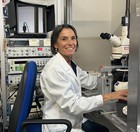
Funzione/Ruolo
Professoressa Ordinaria di Farmacologia dell’Università degli studi di Cagliari
Percorso professionale
Dopo la laurea in Farmacia all’Università di Palermo nel 1993, si è trasferita a Cagliari alla fine del 1994 per imparare le tecniche di elettrofisiologia in vivo presso il Dipartimento di Neuroscienze dell’Università degli studi di Cagliari. Nel 2000 si è trasferita a San Francisco, dove ha svolto attività di ricerca presso il centro “Ernest Gallo Clinic and Research Center” della University of California San Francisco (UCSF). Nel 2011 ha conseguito il dottorato in Neuroscienze a Cagliari e successivamente visitato il Department of Neuroscience presso il Biomedical Center (Lund University, Svezia). Nel 2023 è diventata professoressa ordinaria di Farmacologia al Dipartimento di Scienze Biomediche dell’Università di Cagliari, dove era già professoressa associata dal 2016, e in cui dirige un laboratorio di Neuropsicofarmacologia preclinica.
Risultati scientifici
I principali interessi scientifici di Miriam Melis riguardano lo studio della vulnerabilità ai disturbi mentali attraverso lo sviluppo di modelli murini di alterata funzionalità dei sistemi dopaminergico ed endocannabinoidergico, per comprendere come la loro interazione evolva in condizioni di salute o di malattia nella finestra temporale di sensibilità del neurosviluppo che include l’infanzia e la preadolescenza. Il suo approccio di biologia multiscala attraverso analisi del comportamento, di immunoistochimica, trascrittomica e di chemo- e opto- genetica consente di rispondere, con un’alta risoluzione spazio-temporale e a livello cellulare, alle domande riguardanti i circuiti cerebrali coinvolti negli eetti fisiopatologici osservati a livello comportamentale. La sua ricerca è finanziata da Enti Nazionali (es. MUR, MSAL, RAS, FdB) e Internazionali (es. NIH, ENI CBC MED, UFI/UIF) fra cui la Commissione Europea per la Ricerca che ha finanziato il suo progetto REDIRECT presentato nell’ambito degli ERC Consolidator Grant (call 2022). Nel 2019 è stata eletta coordinatrice della Gordon Research Conference for Cannabinoid Functions in the CNS che ha organizzato in Spagna nel 2023.
Attività editoriali e pubblicazioni
Miriam Melis è autrice di più di 100 pubblicazioni scientifiche, ha curato due libri per le case editrici Elsevier e SpringerLink. La lista completa si può trovare al seguente link istituzionale https://web.unica.it/unica/it/ateneo_s07_ss01_sss05_ssss01.page?contentId=SHD30514.
Riconoscimenti e premi
Per le sue scoperte ha ricevuto diversi premi:
2004: National Institute of Drug of Abuse (NIDA), “Frontiers in Addiction Research: Young Investigators Poster Session” San Diego, CA (USA), 22 ottobre 2004.
2005: Premio 2005 Farmindustria-SIF per le ricerche farmacologiche precliniche. 32° Congresso della Società Italiana di Farmacologia (SIF). Napoli (Italia), 1-4 giugno 2005.
2010: Premio “Talento delle Idee” per migliore idea imprenditoriale innovativa sponsorizzato da Banca Unicredit e Confindustria (Prima classificata nella selezione Macroregioni): Palermo, 31 maggio 2010.
2011: Premio “Work and Learn 36” finanziato dalla Regione Sardegna e l’Università degli studi di Cagliari, Cagliari 16 aprile 2011.
2022: Premio “Gill Award for Transformative Research in Neuroscience” da Gill Center for Biomolecular Science at Indiana University. Bloomington, USA.
2024: Premio “Donna di Scienza” dall’Associazione ScienzaSocietàScienza per il “contribuito a dare prestigio e avanzamenti alla Sardegna in campo scientifico” Sesta Edizione (12 novembre 2024).

Funzione/Ruolo
Professoressa Ordinaria di Genetica Medica all'Università degli Studi di Milano La Statale, Dipartimento di Scienze della Salute.
Direttrice della Struttura Complessa di Genetica Medica, ASSt Santi Paolo e Carlo, Milano.
Percorso professionale
Nel 1987 si laurea in Scienze Biologiche, Facoltà di Scienze Matematiche, Fisiche e Naturali Università degli Studi di Milano. Nel 1993 si specializza in Genetica Medica, Facoltà di Medicina e Chirurgia, Università degli Studi di Milano. Nel 1999 consegue il Dottorato di Ricerca in Biologia Cellulare e Molecolare, Facoltà di Scienze Matematiche, Fisiche e Naturali, Università degli Studi di Milano. Dal 1987 al 1995 è ricercatrice AIRC, presso il Dipartimento di Oncologia Sperimentale, IRCCS Istituto Nazionale Tumori, Milano.
Nel 1999 diventa ricercatrice universitaria a tempo indeterminato, presso l'Università degli Studi di Milano, dove avvia la sua carriera accademica, prima come professoressa associata e poi ordinaria
Dal 2011 al 2021 presta servizio in regime di Convenzione presso la Fondazione IRCCS Ca’ Granda Ospedale Maggiore Policlinico, Milano.
Dal 2011 al 2017 è direttrice della Scuola di Specializzazione in Genetica Medica.
Dal 2012 è responsabile della Unità “Coordinamento Laboratori di Ricerca, Piattaforma di Genomica e di Bionformatica, Direzione Scientifica, Fondazione IRCCS Ca’ Granda Ospedale Maggiore Policlinico, Milano.” Area di ricerca: sequenziamento di nuova generazione per lo studio di condizioni genetiche senza diagnosi clinica e rare; realizzazione della biobanca di materiale biologico da più di 2000 gravidanze; studi epigenetici sull’effetto dell’alimentazione materna in gravidanza e sulla crescita fetale.
Dal 2016 è membro del Comitato Etico come esperta di genetica all'Istituto nazionale Tumori, Milano.
Nel 2019 ottobre-novembre è Visiting Professor presso la Columbia University, New York, NY, Mailman School of Public Health nell’ambito del progetto Rise Cross Neurod, Motor neuron center.
Dal 2020 è membro del coordinamento scientifico della fondazione onlus FAST Italia (associazione di pazienti sindrome di Angelman) per la creazione della prima biobanca europea di materiale biologico di pazienti con sindrome di Angelman e dei loro genitori, in collaborazione con l’Istituto “C. Besta” di Milano e New York University, Center for Neural Science (prof.ssa C. Alberini).
Risultati scientifici
La prof.ssa Miozzo si occupa di predisposizione genetica al cancro, di alterazioni genomiche nei tumori, di difetti genomici della placenta associati a difetti di crescita intrauterina.
Attività editoriali e pubblicazioni
E’ autrice di oltre 140 pubblicazioni scientifiche peer-reviewed presenti in PubMed e Scopus
Academic Editor di PloS One dal 2012 e componente dell’Editorial Board della rivista International Journal of Pediatrics and Child Health dal 2020.
Pubblicazioni a maggior impatto
[1992] Sozzi, G, Miozzo, M., Donghi, R. Delia Porta, G.Pierotti, M.A Deletions of 17p and p53 Mutations in Preneoplastic Lesions of the Lung. Cancer Research, 52(21),6079-82.
[1992] Pierotti, M.A., Santoro, M., Jenkins, R.B. et al. Characterization of an inversion on the long arm of chromosome 10 juxtaposing D10S170 and RET and creating the oncogenic sequence RET/PTC. Proceedings of the National Academy of Sciences of the United States of America, 89(5):1616-20.
[1995] Sozzi, G, Miozzo, M., Pastorino, U., Porta, G.D., Pierotti, M.A. Genetic Evidence for an Independent Origin of Multiple Preneoplastic and Neoplastic Lung Lesions. Cancer Res, 55:135-40
[2002] Miozzo M, Simoni G. The role of imprinted genes in fetal growth. Biol Neonate. 81(4):217-28.
[2004] Invernizzi, P., Miozzo, M., Battezzati, P.M., Gershwin, M.E., Podda, M. Frequency of monosomy X in women with primary biliary cirrhosis. Lancet, 363(9408): 533-35.
[2004] Sirchia SM, Tabano S, Monti L, Recalcati MP, Gariboldi M, Grati FR, Porta G, Finelli P, Radice P, Miozzo M. Misbehaviour of XIST RNA in breast cancer cells. PLoS One. 24(5):e5559.
[2007] Miozzo, M., Selmi, C., Gentilin, B., Podda, M., Invernizzi, P.Preferential X chromosome loss but random inactivation characterize primary biliary cirrhosis. Hepatology.46(2):456–62.
[2019] Paganini L, Hadi LA, Chetta M, Rovina D, Fontana L, Colapietro P, Bonaparte E, Pezzani L, Marchisio P, Tabano SM, Costanza J, Sirchia SM, Riboni L, Milani D, Miozzo M. A HS6ST2 gene variant associated with X-linked intellectual disability and severe myopia in two male twins. Clin Genet. 95(3):368-74.
[2020] Ellinghaus, D., Degenhardt, F. et al Genomewide association study of severe covid-19 with respiratory failure. New England Journal of Medicine, 383:1522-34
[2020] Marfia G, Navone S, Guarnaccia L, Campanella R, Mondoni M, Locatelli M, Barassi A, Fontana L, Palumbo F, Garzia E, Ciniglio Appiani G, Chiumello D, Miozzo M, Centanni S, Riboni L. Decreased serum level of sphingosine-1-phosphate: a novel predictor of clinical severity in COVID-19. EMBO Mol Med. 14:e13424.
[2020] Fontana L, Bedeschi MF, Cagnoli GA, Costanza J, Persico N, Gangi S, Porro M, Ajmone PF, Colapietro P, Santaniello C, Crippa M, Sirchia SM, Miozzo M, Tabano S. (Epi)genetic profiling of extraembryonic and postnatal tissues from female monozygotic twins discordant for Beckwith-Wiedemann syndrome. Mol Genet Genomic Med. 8(9):e1386.
[2021] Rondinone O, Murgia A, Costanza J, Tabano S, Camanni M, Corsaro L, Fontana L, Colapietro P, Calzari L, Motta S, Santaniello C, Radaelli T, Ferrazzi E, Bosari S, Gentilini D, Sirchia SM, Miozzo M. Extensive Placental Methylation Profiling in Normal Pregnancies. International Journal of Molecular Sciences. 22(4):2136-55
Riconoscimenti e premi
Nel 2009 ha ricevuto il Premio Isimbardi “Giornata della Riconoscenza" Provincia di Milano conferito per la carriera scientifica e di insegnamento.

Area STEM: Scienze biomediche e biotecnologie
Competenze: metodi della ricerca clinica, qualità della vita, trasferimento delle informazioni scientifiche
Parole chiave: alfabetizzazione sanitaria, empowerment and engagement della popolazione, salute pubblica, trasferimento informazioni scientifiche
Regione: Lombardia
Funzione/Ruolo
Responsabile del Laboratorio di ricerca per il coinvolgimento dei cittadini in sanità del Dipartimento di Salute Pubblica dell’IRCCS Istituto di Ricerche Farmacologiche Mario Negri di Milano
Percorso professionale
Dopo la laurea in Scienze Biologiche conseguita presso l’Università degli Studi di Milano nel 1982, si specializza in Ricerca Farmacologica presso il Mario Negri. Ricercatrice dapprima nei settori della Farmacologia Clinica e della Epidemiologia Clinica, dal 1987 è coinvolta in progetti sulla partecipazione attiva dei cittadini e pazienti nel dibattito sulla salute, sull’informazione e formazione medico-scientifica e in progetti di ricerca e partnership con associazioni di volontariato.
Dal 2006 al 2009 è componente del Comitato Etico dell’IRCCS Multimedica, dal 2007 al 2013 presidente del Comitato Etico dell’Azienda USL di Bologna e nel 2013 del Comitato Etico Provinciale di Reggio Emilia.
Paola Mosconi è socia fondatrice, vice-presidente e delegata europea di EUROPA DONNA Italia, un movimento di opinione per la lotta contro il tumore al seno, presente in 46 paesi europei. È presidente della Fondazione Nerina e Mario Mattioli Onlus per la ricerca nel settore della ginecologia oncologica. È stata vice-presidente dell’Associazione Alessandro Liberati - Network Cochrane Italiano, associazione fondata per contribuire alla diffusione e crescita della cultura dell’efficacia e appropriatezza in campo sanitario. È componente del Consiglio di Fondazione AIOM, EUPATI Italia, Fondazione Pofferi e del Comitato Tecnico Scientifico di Acto-Alleanza contro il tumore ovarico.
Risultati scientifici
A capo del “Laboratorio di ricerca sul coinvolgimento dei cittadini in sanità” dell’Istituto Mario Negri di Milano, Paola Mosconi si occupa della pianificazione, del coordinamento e dell’analisi di risultati di differenti attività di ricerca mirate al coinvolgimento e alla partecipazione della popolazione in generale, o di gruppi di pazienti specifici e loro rappresentanze, nelle scelte e nelle decisioni in tema di salute pubblica. È stata, ed è, responsabile di unità operative in programmi di ricerca medico-scientifica, finalizzati, per esempio, alla diagnosi precoce del tumore al seno, tramite promozione della corretta informazione sullo screening mammografico, alla promozione di un modello informativo per persone affette da sclerosi multipla sull’uso di farmaci ed esami a scopo diagnostico e prognostico, al coinvolgimento delle persone affette da AIDS/HIV per la messa a punto di un’agenda di priorità in materia di interventi sanitari, assistenza, prevenzione, informazione e ricerca.
In particolare, Paola Mosconi è esperta di metodologia della ricerca (conferenze di consenso, giurie dei cittadini, linee guida, indagini ad hoc con associazioni, indagini su conoscenze/ attitudini/comportamenti di cittadini/pazienti, registri di patologia, revisioni), informazione (valutazione del tipo di informazione fornita e da fornire su screening, malattie e trattamenti, modalità di comunicazione di informazioni di salute anche attraverso lo sviluppo di siti internet, sviluppo di strumenti decisionali, sviluppo di opuscoli divulgativi per la popolazione generale), formazione (corsi di metodologia della ricerca clinica per attivisti di associazioni di volontariato), ideazione di progetti di valutazione della qualità della vita e della salute dei cittadini e del grado di soddisfazione del Servizio Sanitario Nazionale.
Attività editoriali e pubblicazioni
Paola Mosconi svolge funzioni di referee per diverse riviste scientifiche e ha pubblicato numerosi articoli su riviste inazionali e internazionali. Di seguito una selezione:
(2017) Roberto A, Colombo Cinzia, Candiani G, Giordano L, Mantellini P, Paci E, Satolli R, Valenza M, Mosconi P. Personalised informed choice on evidence and controversy on mammography screening: protocol for a randomized controlled trial. BMC Cancer, 17:429.
(2016) Mosconi P, Colombo C, Satolli R, Carzaniga S. Involving a citizens’ jury in decisions on individual screening for prostate cancer. PLOS One; 11: e0143176.
(2016) Mosconi P, Antes G, Barbareschi G, Burls A, Demotes-Mainard J, Chalmers I, Colombo C, Garattini S, et al. A European multi-language initiative to make the general population aware of independent clinical research: The European Communication on Research Awareness Need project. Trials, 17:19.
(2015) Mosconi P, Castellani C, Villani W, Satolli R. Cystic fibrosis: to screen or not to screen? Involving a Citizens’ jury in decisions on screening carrier. Health Expectations, 8: 1956.
(2013) Mosconi P, Roberto A. Non-publication of large randomized clinical trials: cross sectional analysis. BMJ, 347: f7590.
(2013) Donati S, Satolli R, Colombo C, Senatore S, Cotichini R, Da Cas R, Spila Alegiani S, Mosconi P. Informing women on menopause and hormone therapy: Know the menopause a multidisciplinary project involving local healthcare system. PLOS One, 8 (12).
(2012) Mosconi P, Roberto A. Open-access clinical trial registries: An Italian scenario. Trials; 13: 194.
(2012) Mosconi P, Lionello L, Di Spazio L, Alberghini L. Are the voice of women and men equally represented in ethics committees? An Italian survey. J Clinical Research Bioethics, 3: 129.
(2012) Colombo C, Moja L, Gonzalez-Lorenzo M, Liberati A, Mosconi P. Patient empowerment as a component of health system reforms: rights, benefits and vested interests. Internal and Emergency Medicine; 7: 183.
(2007) Mosconi P, Colombo C, Satolli R, Liberati A. PartecipaSalute, an Italian project to involve lay people, patients’ associations and scientific-medical representatives on the health debate. Health Expectations, 10: 194.
(2004) Mosconi P, Buchanan M, Kyriakides S, Fernandez-Marcos A, Horvatin J, O'Connell D, Zernik N, EUROPA DONNA. EUROPA DONNA: has strenght in its heterogeneity. European Journal of Cancer; 40: 1145.
(1998) Apolone G, Mosconi P. The Italian SF-36 Health Survey: Translation, validation and norming. Journal of Clinical Epidemiology, 51: 1025.

Funzione/Ruolo
Professoressa associata di Oftamologia all'Università di Roma La Sapienza e Dirigente di primo livello al Pronto Soccorso Oculistico del D.A.I. Testa Collo, Policlinico Umberto I di Roma
Percorso professionale
Dopo la laurea in Medicina e Chirurgia all’Università degli Studi di Bari nel 1988, prosegue gli studi attraverso la specializzazione in Oftalmologia all’Università La Sapienza di Roma. Nel 1993 vince una borsa di studio triennale dell’Istituto Superiore di Sanità per la ricerca sulla lotta all'AIDS all’estero (Barcellona, Spagna).
Nel 1996 si diploma all’European Board of Ophthalmology. Contemporaneamente prosegue la sua formazione e le sue ricerche prima come professoressa a contratto, poi nel 1998 come ricercatrice.
Dal 2011 è professoressa associata di Oftalmologia all’Università di Roma “Sapienza”, dove svolge anche attività di ricerca ed è responsabile del percorso didattico formativo degli studenti della Facoltà di Medicina e Farmacia e degli specializzandi in oftalmologia. Sempre nel 2011 diventa dirigente di primo livello al Policlinico Umberto I, dove attualmente è responsabile dell’UOD di Pronto Soccorso Oculistico.
È referee di progetti di ricerca Cineca per le seguenti riviste: Clinical Ophthalmology, Clinical Interventions in Aging, International Medical Case Reports Journal, Clinical Optometry, Patient Preference and Adherence, Therapeutics and Clinical Risk Management.
Risultati scientifici
Gli interessi scientifici sono stati inizialmente orientati sulle terapie farmacologiche delle complicanze oculari da HIV e sull’impiego delle tecnologie laser per la correzione delle ametropie. Attualmente i suoi studi sono particolarmente incentrati sui ruoli fisiopatologici delle terapie intravitreali dell’edema maculare diabetico e da occlusione vascolare retinico che regolano i fattori vascolari di crescita nell’ambito di un Clinical Trials.gov NCT02257333 Registro nazionale trombosi venosa retinica Retinal Thrombosis and Atherosclerosis (HEART VISION).
Elena Pacella insieme al suo gruppo di ricerca come evidenziato nelle sue pubblicazioni, è stata fra le prime ricercatrici in Italia a dimostrare che la somministrazione intravitreale di molecole cortisoniche a lento rilascio (device) svolgono un importante effetto antinfiammatorio, bloccano la produzione della cascata dei mediatori dell'infiammazione (prostaglandine e trombossani derivati dalla sintesi dell'acido arachidonico) e quindi la neovascolarizzazione retinica nei diabetici con edema maculare non responde agli anti-VEGF, migliorando la funzione visiva ed inoltre bloccano le complicanze, per il periodo della terapia, se si considera che attualmente il 13% dei diabetici in piena attività lavorativa soffre di handicap visivo.
Attività editoriali e pubblicazioni
Elena Pacella è fondatrice ed editorial board della rivista scientifica Senses&Sciences Dal 2016 è membro del comitato editoriale della rivista scientifica La Clinica Terapeutica.
È revisora di progetti Cineca per le seguenti riviste: Clinical Ophthalmology, Clinical Interventions in Aging, International Medical Case Reports Journal, Clinical Optometry, Patient Preference and Adherence, Therapeutics and Clinical Risk Management.
È autrice e coautrice di numerosi articoli scientifici, tra cui:
(2017) Pacella F, La Torre G, Basili S, Autolitano M, Pascarella A, Lenzi T, Pacella E. Comparison between "early" or "late" intravitreal injection of dexamethasone implant in branch (BRVO) or central (CRVO) retinal vein occlusion: six-months follow-up. Cutaneus and Ocular Toxicology, 36(3):224-230. doi: 10.1080/15569527.2016.1254648. Epub 2017 Jan 11.
(2016) Pacella F, Romano MR, Turchetti P, Tarquini G, Carnovale A, Mollicone A, Mastromatteo A, Pacella E. An eighteen-month follow-up study on the effects of Intravitreal Dexamethasone Implant in diabetic macular edema refractory to anti-VEGF therapy. International Journal of Ophthalmology, 9(10):1427-1432. eCollection 2016.
(2016) Pacella F, Agostinelli E, Carlesimo SC, Nebbioso M, Secondi R, Forastiere M, Pacella E. Management of anterior chamber dislocation of a dexamethasone intravitreal implant: a case report. Journal of Medical Case Reports,10(1):282.
(2016) Pacella E, Mipatrini D, Pacella F, Amorelli G, Bottone A, Smaldone G, Turchetti P, La Torre G. Suspensory Materials for Surgery of Blepharoptosis: A Systematic Review of Observational Studies. PLoSOne, 11(9):e0160827. doi: 0.1371/journal.pone.0160827. eCollection 2016. Review.
(2016) Grancara S, Dalla Via L, García-Argáez AN, Ohkubo S, Pacella E, Manente S, Bragadin M, Toninello A, Agostinelli E. Spermine cycling in mitochondria is mediated by adenine nucleotide translocase activity: mechanism and pathophysiological implications. Amino Acids, 48(10):2327-37. doi: 10.1007/s00726-016-2264-6. Epub 2016 Jun 2.
(2016) Pacella F, Ferraresi AF, Turchetti P, Lenzi T, Giustolisi R, Bottone A, Fameli V, Romano MR, Pacella E. Intravitreal Injection of Ozurdex(®) Implant in Patients with Persistent Diabetic Macular Edema, with Six-Month Follow-Up. Ophthalmology and Eye Diseases, 8:11-6. doi: 10.4137/OED.S38028. eCollection 2016.
(2015) Pacella E, Pacella F, De Paolis G, Parisella FR, Turchetti P, Anello G, Cavallotti C. Glycosaminoglycans in the human cornea: age-related changes. Ophthalmology and Eye Diseases, 7:1-5. doi: 10.4137/OED.S17204. eCollection 2015.
(2015) Taurone S, Ripandelli G, Pacella E, Bianchi E, Plateroti AM, De Vito S, Plateroti P, Grippaudo FR, Cavallotti C, Artico M. Potential regulatory molecules in the human trabecular meshwork of patients with glaucoma: immunohistochemical profile of a number of inflammatory cytokines. Molecular Medicine Reports, 11(2):1384-90. doi: 10.3892/mmr.2014.2772. Epub 2014 Oct 27.
(2014) Fehér J, Kovács I, Pacella E, Radák Z. Correlation of the microbiota and intestinal mucosa in the pathophysiology and treatment of irritable bowel, irritable eye, and irritable mind syndrome. Orvosi Hetilap, 155(37):1454-60. doi: 10.1556/OH.2014.29987. Review. Hungarian.
(2014) Pacella E, Arrico L, Santamaria V, Turchetti P, Carbotti MR, La Torre G, Pacella F. Dorzolamidechlorhydrate versus acetazolamide in the management of chronic macular edema in patients with retinitis pigmentosa: description of three case reports. Ophthalmology Eye Disease, 6:21-6. doi: 10.4137/OED.S13617. eCollection 2014.
(2014) Pacella E, Nisi G, Campana M, Pacella F, Mazzeo F, Brandi C, De Santi MM, Malagnino V, Tanganelli P, D'Aniello C. Histological and ultra-structural effects of rapid muscle expansion through intramuscular administration of carbon dioxide: an intra-operative study in an animal model. European Review for Medical Pharmacology Sciences, 18(3):416-20.
Riconoscimenti e premi
Nel 2010 ha ricevuto il premio "Kallistos award" per la ricerca medica e scientifica.
Nel 2019 ha ricevuto il premio "Professionalism and Competence" della Fondazione SAPIENTIA MUNDI.

Funzione/Ruolo
Professoressa di Chimica e Biologia molecolare al King's College di Londra
Percorso professionale
Laureata in Chimica all’Università Federico II di Napoli, nel 1982 si trasferisce negli Stati Uniti dove lavora per un paio di anni al Dipartimento di Biochimica dell’Università del Wisconsin. Nel 1984 grazie a un progetto di sambio fra ITlia e Svizzera entra nel team di ricerca del Premio Nobel Richard Robert Ernst, all’Università di Zurigo. Nel 1987 consegue un postdottorato all’Università di Oxford e nel 1988 inzia a lavorare all’EMBL (European Molecular Biology Laboratory) di Heidelberg in Germania, dove nel 1991 viene nominate a capo del Programma Srutture. Nello stesso anno diviene team leader del National Institute for Medical Research di Londra. Nel 2013 diventa professoressa ordinaria al King’s College di Londra, dove continua a insegnare con un incarico part-time, fino al 2018, anche quando ottiene una cattedra all’Università di Pavia. Nel 2018 viene nominata professoressa all’Università Normale di Pisa, prima e unica donna docente ordinaria nella classe di Scienze della Normale in 208 anni di vita della scuola. All'inizio del 2019 si dimette in seguito a ostacoli burocratico-amministrativi che non le consentono di mantenere il suo incarico al King’s College di Londra dove è ora ritornata a tempo pieno.
Risultati scientifici
Annalisa Pastore si è occpata per piu' di 30 anni della relazione tra struttura e funzione di peptide e proteine. Dopo un esordio lavorando su proteine strutturali muscolari, si occupa da molti anni di proteine coinvolte nella neurodegenerazione. Due i principali filoni di ricerca: il primo riguarda malattie mitocondriali con particolare attentione alla atassia di Friedreich's su cui lavoro da quando il gene responsabile e' stato scoperto nel 1996. Di questa proteina abbiamo studiato con attenzione la struttura, le proprieta' di legame e scoperto che fa' parte di un complesso proteico responsabile per la formazione dei cluster a ferro Zolfo, gruppi importantissimi che provvedono al trasferimento elettronico nelle proteine. Il secondo filone si interessa invece di proteine che prendeno parte a processi aggregative quali quelli che hanno luogo nell'Alzheimer e nel Parkinson.
Attività editoriali e pubblicazioni
Annalisa Pastore è autrice di circa 300 pubblicazioni scientifiche, fra cui:
(2018) Yan, R., Yalinca, H., Paoletti, F., Gobbo, F., Marchetti, L, Kuzmanic, A., Lamba, D., Gervasio, F.L., Konarev, P.V., Cattaneo, A., Pastore, A. The structure of the Pro-domain of mouse proNGF in contact with the NGF domain. Structure, 27(1):78-89.
(2017) Alfano C, Sanfelice D, Martin SR, Pastore A, Temussi PA. An optimized strategy to measure protein stability highlights differences between cold and hot unfolded states. Nature Commun. 8:15428.
(2016) Corvino, A., Severino, B., Fiorino, F., Frecentese, F., Magli, E., Perissutti, E., Santagada, V., Bucci, M., Cirino, G., Kelly, G., Servillo, L., Popowicz, G., Pastore, A., Caliendo, G. Fragment-based de novo design of a cystathionine y-lyase selective inhibitor blocking hydrogen sulfide production. Scientific Reports, 6, 64398.
(2015) Ruggeri, F.S., Longo, G., Faggiano, S., Lipiec, E., Pastore, A*., Dietler, G.* Infrared nanospectroscopy characterization of oligomeric and fibrillar aggregates during amyloid formation. Nature Comm., 6, 7831.
(2013) Yan, R., Konarev, P.V. Iannuzzi, C., Adinolfi, A., Roche, B.., Kelly, G., Simon, L., Martin, S.R. Py, B., Barras, F., Svergun, D.I., Pastore, A. Ferredoxin competes with bacterial frataxin in binding to the desulfurase IscS. JBC 288: 24777-87.
(2010) Prischi, F., Konarev, P.V., Iannuzzi, C., Pastore, C., Adinolfi, S., Martin, S.R., Svergun, D.I., Pastore, A. Structural bases for the interaction of frataxin with the central components of iron-sulfur cluster assembly. Nature Communications 1, 95.
(2005) Nicastro, G., Menon, R., Masino, L., McDonalds, N.O., Pastore, A. The solution structure of the Josephin domain of ataxin-3: Structural determinants for molecular recognition. PNAS 102: 10493-10498.
(2001) Atkinson, R. A., Joseph, C., Kelly, G., Muskett, F.W.,Frenkiel, T.A., Nietlispach, D., Pastore, A. Ca2+-independent binding of an EF-hand domain to a novel motif: an alpha-actinin/titin complex. Nature Struct. Biol. 8: 853-857.
(1996) Musco, G., Stier, G., Joseph, C., Castiglione Morelli, M.A., Nilges, M., Gibson, T.J., Pastore, A. Three-dimensional structure and stability of the KH domain: Molecular insights into the Fragile X syndrome. Cell 85: 237-245.
(1994) Pfuhl M., Winder S. and Pastore, A. Nebulin, a helical actin binding protein. EMBO J. 1782-1789.
Riconoscimenti e premi
Nel 2000 viene nominata EMBO Membership e nel 2013 membro della Academia Europeae.

Funzione/Ruolo
Professoressa ordinaria di Biologia molecolare all'Università degli Studi di Torino
Percorso professionale
Valeria Poli consegue la laurea in Biologia, nel 1984, e poi il dottorato in Biologia umana, nel 1992, presso l'Università degli Studi di Torino. Dal 1988 al 1990 svolge un post-dottorato all'European Molecular Biology Laboratory di Heidelberg in Germania, e dal 1990 al 1992 alla Columbia University di New York. Dal 1992 al 1997 è Principal Investigator all'Istituto di Ricerche di Biologia Molecolare P. Angeletti di Roma. Dal 1997 al 2001 lavora all'Università di Dundee, in Inghilterra, come Principal Investigator, Wellcome Trust Senior Research Fellow, Honorary Senior Lecturer and Head dell'Unità Transgenica istituita presso il Dipartimento di Biochimica.
Nel 2001 diventa professoressa associata di Biologia molecolare all'Università di Torino, e poi, dal 2005, professoressa ordinaria.
Risultati scientifici
Valeria Poli ha contribuito a progressi fondamentali nella comprensione dei meccanismi che mediano l'attività e la funzione a livello trascrizionale delle citochine (molecole prodotte da vari tipi di cellule e secrete nel mezzo circostante, di solito in risposta a uno stimolo in grado di modificare il comportamento di altre cellule inducendo nuove attività come crescita, differenziazione e morte), in condizioni sia fisiologiche che patologiche. In particolare ha contribuito alla scoperta del fattore di trascrizione IL-6DBP-C/EBPbeta, che media molte delle funzioni dell'Interleuchina 6 (IL-6), una proteina che agisce come citochina multifunzionale, sia pro-infiammatoria, sia anti-infiammatoria; alla generazione e caratterizzazione di ceppi di topo mutati per i geni C/EBPbeta e IL-6, topi poi ampiamente usati dalla comunità scientifica per comprendere le funzioni fisiologiche e patologiche dei due fattori; alla generazione di ceppi murini manipolati geneticamente per il fattore di trascrizione pro-oncogenico STAT3; e infine alla caratterizzazione del ruolo pro-metastatico dei microRNA 143 e 145 nel tumore mammario.
Attualmente le attività del suo laboratorio riguardano principalmente lo studio delle funzioni biologiche del fattore di trascrizione STAT3, il principale mediatore della segnalazione delle citochine appartenenti alla famiglia dell'IL-6, utilizzando modelli cellulari e murini in vivo. In particolare si sta concentrando sulla comprensione dei meccanismi fondamentali delle attività della proteina STAT3 come oncogene, al crocevia tra infiammazione, risposta immunitaria, nicchia delle cellule staminali e tumorali e trasformazione tumorale, analizzando le sue interazioni con altri geni oncogeni / soppressori tumorali e cercando di identificare specifici geni bersaglio pro-oncogenici. Attualmente è impegnata nella ricerca sul rapporto tra cellule tumorali del seno e fibroblasti associati al cancro nella nicchia tumorale, sul ruolo dei microRNAs 143 e 145 nella EMT (Transizione Epitelio Mesenchima) e nella formazione di metastasi, e sul ruolo di STAT3 nella regolazione del metabolismo energetico e dell'omeostasi del calcio nel tumore così come nelle cellule normali.
Attività editoriali e pubblicazioni
Valeria Poli è ed è stata nel comitato editoriale di prestigiose riviste scientifiche come Cell Communication and Signaling, American Journal of Cancer Research, JAK-STAT e Frontiers in Molecular and Cellular Oncology. Svolge regolare attività di revisione scientifica per riviste internazionali come il Journal of Clinical Investigation, l'EMBO Journal, l'European Journal of Immunology, il Journal of Cell Science, il Biochemical Journal, Circulation Research, Cell Death and Differentiation e PLOS ONE.
È co-autrice di più di 130 pubblicazioni, fra cui:
[2018] Avalle L, Camporeale A, Morciano G, Caroccia N, Ghetti E, Orecchia V, Viavattene D, Giorgi C, Pinton P, Poli V. STAT3 localizes to the ER, acting as a gatekeeper for ER-mitochondrion Ca2+ fluxes and apoptotic responses. Cell Death & Differentation, 26: 932-942.
[2017] Avalle L, Incarnato D, Savino A, Gai M, Marino F, Pensa S, Barbieri I, Stadler MB, Provero P, Oliviero S, Poli V. MicroRNAs-143 and -145 induce epithelial to mesenchymal transition and modulate the expression of junction proteins. Cell Death & Differentation, 24: 1750-1760.
[2014] Demaria M, Camporeale A, Poli V STAT3 and metabolism: How many ways to use a single molecule? Int J Cancer, 135 (9): 1997-2003.
[2013] Camporeale A, Marino F, Papageorgiou A, Carai P, Fornero S, Fletcher S, Page BDG, Gunning P, Forni M, Chiarle R, Morello M, Jensen O, Levi R, Heymans S, Poli V. STAT3 activity is necessary and sufficient for the development of immune-mediated myocarditis in mice and promotes progression to dilated cardiomyopathy. EMBO Molecular Medicine, 5: 572–590.
[2012] Demaria M, Misale S, Giorgi C, Miano V, Camporeale A, Campisi J, Pinton P and Poli V. STAT3 can serve as a hit in the process of malignant transformation of primary cells, Cell Death and Differentiation, 19:1390-1397.
[2010] Barbieri I, Pensa S, Pannellini T, Quaglino E, Maritano D, Demaria M, Voster A, Turkson J, Cavallo F, Watson CJ, Provero P, Musiani P and Poli V. Constitutively active Stat3 enhances Neu-mediated migration and metastasis in mammary tumors via upregulation of Cten, Cancer Research, 70:2558-67.
[2009] Vallania F, Schiavone D, Dewilde S, Pupo E, Garbay S, Calogero R, Pontoglio M, Provero P and Poli V. Genome-Wide Discovery of Functional Transcription Factor Binding Sites by Comparative Genomics: the Case of Stat3, Proceedings of National Academy of Sciences of the United States of America, 106:5117-22.
[2004] Maritano D, Sugrue ML, Tininini S, Dewilde S, Strobl B, Fu XP, Murray-Tait V, Chiarle R and Poli V. The STAT3 isoforms, a and b, play unique and specific roles, Nature Immunology, 5:401-409.
[2001] Alonzi T, Maritano D, Gorgoni B, Rizzuto G, Libert C, Poli V. Essential role of STAT3 in the control of the acute phase response as revealed by inducible gene inactivation in the liver. Molecular and Cellular Biology, 21:1621-1632.
[1996] Screpanti I, Musiani P, Bellavia D, Cappelletti M, Aiello FB, Maroder M, Frati L, Modesti A, Gulino A and Poli V. Inactivation of the Interleukin-6 gene prevents development of Castleman's disease in C/EBPß-deficient mice, The Journal of Experimental Medicine, 184:1561-1566.
Riconoscimenti e premi
Valeria Poli è Presidente della Società Italiana di Biofisica e Biologia Molecolare e membro di prestigiose comunità scientifiche quali l'European Molecular Biology Organisation, l'Association of Cellular and Developmental Biology, l'Academia Europaea.
È revisora dei grant per l'European Research Council e fra gli esperti valutatori dei progetti Horizon 2020. Revisora regolare per la valutazione tecnico-scientifica di progetti di ricerca per il MIUR e per diversi enti e istituti internazionali quali il Biotechnology and Biological Sciences Research Council, l'American Institute for Cancer Research, il Pancreatic Cancer Research Fund, l'Austrian Science Fund, la Foundation for Scientific Research Belgium.

Funzione/Ruolo
Direttrice scientifica presso l'IRCSS Fondazione Salvatore Maugeri di Pavia e Professoressa ordinaria di Cardiologia all'Università di Pavia
Percorso professionale
Silvia Giuliana Priori si laurea in Medicina e Chirurgia nel 1986 all'Università degli Studi di Milano, per poi specializzarsi in Cardiologia presso la stessa università, conseguendo nel 1995 il dottorato di ricerca in Fisiopatologia Cardiaca. Dopo un periodo di training formativo all'estero, nei laboratori di Elettrofisiologia Cellulare del Dipartimento di Cardiologia della Washington University, torna in Italia per svolgere uno stage di ricerca in biologia molecolare presso il Telethon Institute for Genetics and Medicine (TIGEM) a Milano. Dal 2008 al gennaio 2016 è Professor of Medicine e Direttrice del Programma di Genetica alla Leon H. Charney Division of Cardiology dell'Università di New York. Attualmente è professoressa ordinaria di Cardiologia all'Università degli Studi di Pavia. Oltre all'attività accademica, Silvia Giuliana Priori coordina diversi laboratori e reparti: è Direttrice Scientifica Centrale della Fondazione Salvatore Maugeri Clinica del Lavoro e della Riabilitazione IRCCS e Direttrice del Reparto di Cardiologia Riabilitativa e del Servizio di Cardiologia Molecolare presso la stessa Fondazione. Dirige e coordina anche programmi internazionali, come il Programma di Genetica Cardiovascolare Genetica Cardiovascolare presso il Centro National de Investigaciones Cardiovasculares Carlos III (CNIC) di Madrid.
Risultati scientifici
Dal 1997 ha iniziato lo sviluppo di una linea di ricerca autonoma nei laboratori da lei diretti. Fondendo l'attività clinica sulle malattie aritmogene (malattie cardiache che provocano aritmie) alle competenze di biologia molecolare ed elettrofisiologia cellulare, ha creato il primo centro in Italia, e uno dei primi al mondo, di Cardiologia Molecolare dove studia i meccanismi delle aritmie cardiache che provocano morti improvvise in bambini e adolescenti. Ha ottenuto importanti successi nella ricerca sulla sindrome del QT lungo (LQTS, dall'inglese "Long Q-T Syndrome"), una rara anomalia cardiaca caratterizzata da una ritardata ripolarizzazione delle cellule miocardiche ed associata a sincope, e sulla sindrome di Brugada, anch'essa una patologia cardiaca con disturbi dell'attività elettrica del cuore che porta all'arresto cardiaco. L'équipe che dirige è impegnata in un progetto di ampio respiro basato sulla creazione di innovativi modelli animali di malattie genetiche e sullo sviluppo di strategie molecolari avanzate per correggere i difetti genici attraverso l'utilizzo di virus adenoassociati (capaci di integrarsi nel genoma della cellula ospite anche in assenza di proliferazione cellulare) per silenziare i geni malati e per riesprimere quelli sani.
Attività editoriali e pubblicazioni
Autrice di numerose pubblicazioni nazionali ed internazionali tra cui:
(2016) Mosca B, Eckhardt J, Bergamelli L, Priori SG, et al. Role of the JP45-calsequestrin complex on calcium entry in slow twitch skeletal muscles. Journal of Biological Chemistry, 291(28):14555-65.
(2016) Mazzanti A, Priori SG. Brugada Syndrome. Journal of the American College of Cardiology, 68(6):624-625.
(2016) Faragli A, Underwood K, Priori SG, Mazzanti A. Is There a Role for Genetics in the Prevention of Sudden Cardiac Death?.Journal of Cardiovascular Electrophysiology.
(2016) Mosca B, Eckhardt J, Bergamelli L, Priori SG, et al. Role of the JP45-Calsequestrin Complex on Calcium Entry in Slow Twitch Skeletal Muscles.Journal of Biological Chemistry, 291(28).
(2016) Chyou JY Fredman D, Cerrone M, Priori SG, et al. Electrocardiographic features of sudden unexpected death in epilepsy, Epilepsia.
(2016) Curcio A, Mazzanti A, Bloise R, Priori SG, et al. Clinical Presentation and Outcome of Brugada Syndrome Diagnosed With the New 2013 Criteria.Journal of Cardiovascular Electrophysiology, 27(8):937-43.
(2016) Mazzanti A, Maragna R, Faragli A, Priori SG, et al. Gene-Specific Therapy With Mexiletine Reduces Arrhythmic Events in Patients With Long QT Syndrome Type 3.Journal of the American College of Cardiology, 67(9):1053-1058.
(2016) Imberti JF, Underwood K, Mazzanti A, Priori SG. Clinical Challenges in Catecholaminergic Polymorphic Ventricular Tachycardia.Heart, Lung and Circulation, 25(8).
(2015) Priori SG, Blomstorm-Lundqvist C, Mazzanti A, et al. 2015 ESC Guidelines for the Management of Patients With Ventricular Arrhythmias and the Prevention of Sudden Cardiac Death. Revista Española de Cardiología, 69(2):176.
(2015) Ferrantini C, Coppini R, Scellini B, Priori SG, et al. R4496C RyR2 mutation impairs atrial and ventricular contractility.The Journal of General Physiology, 147(1).
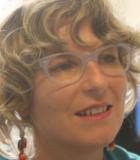
Funzione/Ruolo
Professoressa associata di Biologia molecolare presso l'Università La Sapienza di Roma
Percorso professionale
Dopo la laurea in Scienze Biologiche all'Università La Sapienza di Roma nel 1998, consegue un dottorato di ricerca in Biologia Molecolare presso la stessa università. Si trasferisce poi in Olanda per un post doc all'Università di Utrecht, nel dipartimento di Genetica e Biologia cellulare dal 1998 al 2003. Lì si occupa dei meccanismi molecolari degli ormoni vegetali come l'auxina. Questi studi rivelano il ruolo cruciale di questo ormone nel regolare processi fondamentali come la divisione, la polarità e il fato di una cellula. Dal 2003 al 2006 rientra in Italia come professoressa a contratto presso la Facoltà di Scienze Matematiche, Fisiche e Naturali della Sapienza di Roma grazie agli "Incentivi a favore della mobilità dei docenti italiani e stranieri impegnati all'estero" e all'assegnazione del prestigioso Career Development Award da parte della Giovanni Armenise - Harvard Foundation della Harvard University (USA). È la prima volta che questo premio viene assegnato a un progetto di Biologia Vegetale. Nel 2008 diventa ricercatrice presso il Dipartimento Generale di Biologia Molecolare presso la Sapienza e dal 2010 lavora in qualità di professoressa associata presso il Dipartimento di Biologia e Biotecnologie "Charles Darwin". Nel 2010 risulta vincitrice di un prestigiosissimo ERC starting grant assegnato dall' European Reasercher Council per un valore di 1.500.000 €.
Risultati scientifici
Sabrina Sabatini si è affermata come leader a livello internazionale nella biologia dello sviluppo delle piante. Studiando la radice della arabidopsis thaliana, Sabatini e i suoi collaboratori sono riusciti a comprendere il meccanismo di azione dei fitormoni, scoperta che apre una nuova strada per accelerare i processi evolutivi delle specie coltivate. Da questa scoperta deriva tra l'altro la possibilità di velocizzare e aumentare la crescita delle radici per farle sprofondare nel terreno fino al raggiungimento della falda acquifera o, viceversa, impedire che le radici scendano troppo in profondità evitando che raggiungano zone con concentrazioni saline eccessivamente elevate. Future applicazioni di questa scoperta segnerebbero dunque un punto di svolta nella produzione dei tanto odiati/amati Ogm, che potrebbero risultare surclassati.
Attività editoriali e pubblicazioni
Sabrina Sabatini è autrice di numerosi articoli tra cui:
(2015) Pacifici E, Polverari L, Sabatini S. Plant hormone cross-talk: the pivot of root growth.Journal of Experimental Botany, 66(4):1113-21.
(2014) Heidstra R, Sabatini S. Plant and animal stem cells: similar yet different.Nature Reviews Molecolar Cell Biology, 15(5):301-12.
(2013)Perilli S, Perez-Perez JM, Di Mambro R, Peris CL, Díaz-Triviño S, Del Bianco M, Pierdonati E, Moubayidin L, Cruz-Ramírez A, Costantino P, Scheres B, Sabatini S. RETINOBLASTOMA-RELATED protein stimulates cell differentiation in the Arabidopsis root meristem by interacting with cytokinin signaling.Plant Cell, 25(11):4469-78.
(2013) Mattei B, Sabatini S, Schininà ME. Proteomics in deciphering the auxin commitment in the Arabidopsis thaliana root growth.Journal of Proteome Research, 12(11):4685-701.
(2013)Moubayidin L, Di Mambro R, Sozzani R, Pacifici E, Salvi E, Terpstra I, Bao D, van Dijken A, Dello Ioio R, Perilli S, Ljung K, Benfey PN, Heidstra R, Costantino P, Sabatini S. Spatialcoordination between stem cell activity and cell differentiation in the root meristem.Developmental Cell, 26(4):405-15.
(2011) Perilli S., Di Mambro R., Sabatini S. Growth and development of the root apical meristem.Current Opinion in Plant Biology,Current Opinion in Plant Biology, 15(1):17-23.
(2011) Kim K, Ryu H, Cho YH, Scacchi E, Sabatini S, Hwang I. Cytokinin-facilitated Proteolysis of ARABIDOPSIS RESPONSE REGULATOR2 Attenuates Signaling Output in Two-component Circuitry.Plant Journal, 69(6):934-45.
(2011) Aichinger E, Villar CB, Di Mambro R, Sabatini S, Köhler C. The CHD3 chromatin remodeler PICKLE and polycomb group proteins antagonistically regulate meristem activity in the Arabidopsis root. Plant Cell, 23:1047-60.
(2010)Moubayidin L., Perilli S, Dello Ioio R., Di Mambro R, Costantino P and Sabatini S.Root meristem growth is controlled by an increase in the rate of cell differentiation relative tocell division.Journal of Biotechnology,150, Supplement 1, S110.
(2010)Moubayidin L, Perilli S, Dello Ioio R, Di Mambro R, Costantino P and Sabatini S.The rate of cell differentiation controls the Arabidopsis root meristem growth phase.Current Biology, 20:1138-1143.
Riconoscimenti e premi
Nel 2003 vince il Career Development Award da parte della Giovanni Armenise-Harvard Foundation della Harvard University (USA), per la prima volta assegnato a un progetto di Biologia Vegetale. Nel 2010 risulta vincitrice di un prestigiosissimo ERC starting grant assegnato dall'European Reasercher Council.

Funzione/Ruolo
Professoressa ordinaria di Farmacologia presso l’Università degli Studi di Milano
Percorso professionale
Dopo la Laurea in Scienze biologiche presso l’Università degli Studi di Milano nel 1983 e un periodo di ricerca presso il Dipartimento di Farmacologia, Chemioterapia e Tossicologia medica della stessa Università, si reca negli Stati Uniti al National Institute of Health (NIH, Bethesda) dove rimane per tre anni e consegue un PhD in Neuropharmacology. Rientrata in Italia, prosegue la sua formazione e le sue ricerche prima come ricercatrice, poi come professoressa associata di Farmacologia al Dipartimento di Farmacologia, Chemioterapia e Tossicologia Medica dell’Università degli Studi di Milano. Dal 2017 è professoressa ordinaria di Farmacologia nella stessa università: docente di farmacologia per Corsi di laurea triennali e magistrali in Scienze Biologiche e in Scienze del Farmaco; docente in Master di II livello e in Scuole di Specializzazione della Facoltà di Medicina e Chirurgia e responsabile del laboratorio di “Terapia del dolore, farmaci d’abuso e neuroimmunologia” costituito da giovani scienziati italiani e stranieri.
Risultati scientifici
I suoi interessi scientifici si concentrano sullo studio dei meccanismi alla base dell’insorgenza, del mantenimento e della risoluzione del dolore infiammatorio cronico e del dolore neuropatico, con lo scopo di identificare nuovi approcci terapeutici più efficaci e sicuri. Il suo gruppo di ricerca ha dimostrato che alla base della cronicizzazione del dolore esiste una interazione patologica tra neuroni, cellule immunitarie, glia e microglia nel sistema nervoso centrale e periferico. La ricerca verte proprio sull’identificazioni dei meccanismi cellulari e molecolari e sui determinanti principali che sottendono ai processi di neuro-infiammazione nel sistema nervoso, con focus sull’equilibrio delle citochine pro e antinfiammatorie. Recentemente ha dimostrato come la somministrazione di cellule staminali, per le loro proprietà intrinseche, rappresenti un importante strumento per modulare l’attività di cellule residenti e quindi anche la neurotrasmissione del dolore. Queste cellule si comportano infatti come diretti trasportatori di fattori trofici, immunomodulatori e omeostatici in grado di modificare la trasmissione degli stimoli nocicettivi. Nella ricerca di nuovi target farmacologici per il trattamento del dolore è stata identificata anche una nuova famiglia di chemiochine: le Prokineticine.
Paola Sacerdote si è inoltre sempre occupata di approfondire la farmacologia di base e clinica degli analgesici più utilizzati in medicina del dolore, cioè gli oppioidi. Il suo gruppo di ricerca è stato il primo a caratterizzarne gli effetti sul sistema immunitario, rivelando il rischio di immunosoppressione associata alla terapia. Da molti anni lavora con centri di Terapia del Dolore in Italia e nel mondo, per migliorare l’utilizzo clinico degli oppioidi, per capirne il potenziale d’abuso e individualizzare la terapia personalizzata al paziente.
Attività editoriali e pubblicazioni
È autrice di circa 190 pubblicazioni scientifiche, e ha partecipato a Consensus Conferences nel campo del dolore e degli oppioidi che hanno portato a importanti pubblicazioni molto utilizzate dai Terapisti del dolore. Ha scritto capitoli per numerosi libri a diffusione nazionale e internazionale.
Di seguito un elenco delle principali pubblicazioni scientifiche:
(2017) Brini A, Amodeo G, Ferreira LM, Milani A, Niada S, Moschetti G, Franchi S, Borsani E, Rodella LF, Panerai AE, Sacerdote P. Therapeutic effect of human adipose-derived stem cells and their secretome in experimental diabetic pain. Scientific Reports, 7(1):9904.
(2017) Franchi S, Amodeo G, Gandolla M, Moschetti G, Panerai AE, Sacerdote P. Effect of Tapentadol on splenic cytokine production in mice. Anesthesia and Analgesia, 124:986-995.
(2016) Castelli M, Amodeo G, Negri L, Lattanzi R, Maftei D, Gotti C, Pistillo F, Onnis V, Congu C, Panerai AE, Sacerdote P, Franchi S. Antagonism of the prokineticin system prevents and reverses allodynia and inflammation in a mouse model of diabetes. Plos One, 11(1):e0146259.
(2014) Maftei D, Marconi V, Florenzano F, Giancotti LA, Castelli M,vMoretti S, Borsani E, Rodella LF, Balboni G, Luongo L, Maione S, Sacerdote P, Negri L and Lattanzi R. Controlling the activation of the Bv8/Prokineticin system reduces neuroinflammation and abolishes thermal and tactile hyperalgesia in neuropathic animals. British Journal of Pharmacology, 171:4850-65.
(2014) Moretti S, Castelli M, Franchi S, Raggi MA, Mercolini L, Protti M, Somaini L, Panerai AE, Sacerdote P. D-9-Tetrahydrocannabinol-induced anti-inflammatory responses in adolescent mice switch to proinflammatory in adulthood. Journal of Leukocyte Biology, 96:523-34.
(2013) Sacerdote P, Franchi S, Moretti S, Castelli M, Procacci P, Magnaghi V, Panerai AE. Cytokine Modulation is Necessary for Efficacious Treatment of Experimental Neuropathic Pain. Journal of Neuroimmune Pharmacology, 8:202-11.
(2013) Sacerdote P, Niada S, Franchi S, Arrigoni E, Rossi A, Yenagi V, De Girolamo L, Panerai AA, Brini AT. Systemic administration of human Adipose-derived Stem Cells (hASCs) reverts nociceptive hypersensitivity in an experimental model of neuropathy. Stem Cells And Development, 22:1252-63.
(2012) Franchi S, Valsecchi AE, Borsani E, Procacci P, Ferrari D, Zaffa C, Sartori P, Rodella LF, Vescovi A, Maione S, Rossi F, Colleoni M, Sacerdote P, Panerai AE. Intravenous Neural Stem Cells abolish nociceptive hypersensitivity and trigger nerve regeneration in experimental neuropathy. Pain, 153:850-861.
(2012) Sacerdote P, Franchi S, Panerai AE. Non-Analgesic Effects of Opioids: Mechanisms and Potential Clinical Relevance of Opioid-Induced Immunodepression. Current Pharmaceutical Design,18(37):6034-42.
(2009) Giannini E, Lattanzi R, Nicotra A, Campese Af, Grazioli P, Screpanti I, Balboni G, Salvadori S, Sacerdote P, Negri L. The chemokine Bv8/prokineticin 2 is up-regulated in inflammatory granulocytes and modulates inflammatory pain. Proceedings of the National Acadademy of Sciences USA, 106:14646-51.
(2008) Gironi M, Martinelli-Boneschi F, Sacerdote P, Solaro C, Zaffaroni M, Cavarretta R, Moiola L, Bucello S, Radaelli M, Pilato V, Rodegher M, Cursi M, Franchi S, Martinelli V, Nemni R, Comi G, Martino G. A pilot trial of low-dose naltrexone in primary progressive multiple sclerosis. Multiple Sclerosis, 14: 1076-83.
(2008) Pergolizzi J, Böger RH, Budd K, Dahan A, Erdine S, Hans G, Kress HG, Langford R, Likar R, Raffa RB, Sacerdote P. Opioids and the management of chronic severe pain in the elderly: consensus statement of an international expert panel with focus on the six clinically most often used WHO step III opioids (buprenorphine, fentanyl, hydromorphone, methadone, morphine, oxycodone). Pain Practice. 8:287-313.

Funzione/Ruolo
Direttrice di Ricerca presso la sede di Monserrato, Sardegna, del Consiglio Nazionale delle Ricerche
Percorso professionale
Serena Sanna si laurea in Matematica nel 2003 presso l'Università di Cagliari. Dopo 3 mesi diventa collaboratrice scientifica dell'Istituto di Ricerca Genetica e Biomedica (IRGB) del CNR a Cagliari, nel 2005 si trasferisce per due anni presso il dipartimento di Biostatistica alla School of Public Health, dell'Università del Michigan, partner scientifico dell'IRGB. Nel 2007, torna in Italia all'IRGB come Research Investigator, continuando la sua collaborazione con l'Università del Michigan, dove torna per un periodo di sei mesi nel 2010. Nel 2011 diventa tutor dei dottorandi di ricerca dell'Università di Sassari e nello stesso anno ottiene il ruolo permanente all'Istituto di Ricerca Genetica e Biomedica (IRGB) del CNR a Cagliari. Nel 2016 ottiene il dottorato di ricerca in Scienze Mediche dall'Università di Groningen, in Olanda, dove attualmente svolge il ruolo di Assistant Professor presso l'University Medical Center Groningen.
Nel 2019 diventa prima ricercatrice del CNR e del 2020 Direttrice di Ricerca presso la sede del CNR di Moserrato, Sardegna.
Risultati scientifici
Nell'ambito del progetto ProgeNIA, genetica delle malattie legate all'invecchiamento che raccoglie più di sei mila individui, residenti dalla regione dell'Ogliastra in Sardegna, e attraverso l'utilizzo di tecnologie all'avanguardia per la caratterizzazione del genoma, è stato possibile per la ricercatrice individuare alcuni dei fattori genetici che contribuiscono all'insorgenza delle malattie comuni (quali le patologie cardiovascolari) o che modificano fattori di rischio (per esempio il colesterolo e la pressione sanguigna). La ricercatrice utilizza metodi di statistica inferenziale per massimizzare l'informazione genomica ottenuta, riducendo in questo modo i costi sperimentali di circa cinque volte, rispetto ai metodi tradizionali. E' attualmente ancora impegnata come co-investigatrice per il progetto ProgeNIA, e in particolare per il sequenziamento genetico della popolazione Sarda tramite i sequenziatori di nuova generazione (NGS), dei macchinari molto costosi che permettono di sequenziare il genoma di un individuo in tempistiche notevolmente inferiori rispetto ai sequenziatori tradizionali (alcuni giorni invece che diversi anni). L'obiettivo di questo progetto è quello di individuare l'intero spettro di varianti genetiche presenti nella popolazione Sarda e studiarne poi il loro ruolo nell'insorgenza delle malattie complesse e nella modificazione della sintomatologia associata.
Attività editoriali e pubblicazioni
Serena Sanna è autrice di numerose pubblicazioni, fra cui:
(2015) Sidore C, Busonero F, Maschio A, Porcu E, Naitza S, Zoledziewska M, Mulas A, Pistis G, Steri M, Danjou F, Kwong A, Ortega del Vecchyo VD, Chiang CWK, Bragg-Gresham J, Pitzalis M, Nagaraja R, Tarrier B, Brennan C, Uzzau S, Fuchsberger C, Atzeni R, Reinier F, Berutti R, Huang J, Timpson NJ, Toniolo D, Gasparini P, Malerba G, Dedoussis G, Zeggini E, Soranzo N, Jones C, Lyons R, Angius A, Kang HM, Novembre J, Sanna S, Schlessinger D, Cucca F, Abecasis GR. Genome sequencing elucidates Sardinian genetic architecture and augments GWAS findings: the examples of lipids and blood inflammatory markers. Nature Genetics, 47:1272-1281.
(2013) Orrù V, Steri M, Sole G, Sidore C, [....], Schlessinger D, Abecasis GR, Fiorillo E, Sanna S, Cucca F. Genetic Variants Regulating Immune Cell Levels in Health and Disease. Cell, 155(1):242-256.
(2011) Sanna S, Li B, Mulas A,Sidore C, Kang HM, Jackson AU, Piras MG, Usala G, Maninchedda G, Sassu A, Serra F, Palmas MA, Wood WH 3rd, Njølstad I, Laakso M, Hveem K, Tuomilehto J, Lakka TA, Rauramaa R, Boehnke M, Cucca F, Uda M, Schlessinger D, Nagaraja R, Abecasis GR. Fine mapping of five loci associated with low-density lipoprotein cholesterol detects variants that double the explained heritability. PLoS Genetics, 7(7):e1002198.
(2008) Uda M, Galanello R, Sanna S, Lettre G, Sankaran VG, Chen W, Usala G, Busonero F, Maschio A, Albai G, Piras MG, Sestu N, Lai S, Dei M, Mulas A, Crisponi L, Naitza S, Asunis I, Deiana M, Nagaraja R, Perseu L, Satta S, Cipollina MD, Sollaino C, Moi P, Hirschhorn JN, Orkin SH, Abecasis GR, Schlessinger D, Cao A. Genome-wide association study shows BCL11A associated with persistent HbF and amelioration of the phenotype of β-thalassemia. Proceeding of the National Academy Society of the United States of America, 105(5):1620-5.
(2008) Willer CJ, Sanna S, Jackson AU, Scuteri A, et al . Newly identified loci that influence lipid concentrations and risk of coronary artery disease. Nature Genetics, 40(2):161-9.
La lista completa delle pubblicazioni è disponibile online: https://scholar.google.nl/citations?hl=en&user=6hjWp7sAAAAJ&view_op=list_works&sortby=pubdate
Riconoscimenti e premi
Nel 2008 riceve il premio Best Young Scientist award dalla European Society of Human Genetics (ESHG)
Nel 2009 e 2010, due delle sue pubblicazioni (Peufer et al 2009; and Sanna et al 2010) sono state selezionate fra le migliori pubblicazione di scienziati del CNR per quegli anni.
Nel 2013 è stata riconosciuta come Migliore giovane ricercatrice del CRN in biomedicina.
Nel 2014, 2015, 2016, 2017 e 2018, è nella lista degli Highly Cited Scientists della Thomson Reuters, NY, che include l'1% degli scienziati del suo settore.
Nel 2018 riceve il premio “Guido Dorso” dalla associazione Guido Dorsoe dal Senato italiano come migliore ricercatrice del sud Italia.

Funzione/Ruolo
Capo gruppo del laboratorio di ricerca Synthetic and Systems Biology for Biomedicine dell'Istituto Italiano di Tecnologia, con sede a Napoli, presso l'Università Federico II.
Percorso professionale
Dopo aver conseguito la Laurea in Biotecnologie per la Salute e la Laurea magistrale in Biotecnologie Mediche (Cum laude e menzione alla carriera) presso l’Università di Napoli Federico II, Velia Siciliano ha svolto un Dottorato di Ricerca in Genetica Umana presso il Telethon Institute of Genetics and Medicine, Napoli, Italia. Nel 2012 si è trasferita a Boston dove ha svolto attività di Postdoctoral fellow nel dipartimento di Bioingegneria e al centro di Biologia Sintetica del MIT. Nel 2015 in seguito alla vincita di una borsa di studio per giovani ricercatori indipendenti conferita dall’università Imperial College London, si sposta a Londra dove inizia una linea di ricerca indipendente nel dipartimento di medicina.
A settembre 2017 viene reclutata dall’Istituto Italiano di Tecnologia-IIT con il programma Tenure Track dopo un’iniziale valutazione da parte di una commissione scientifica internazionale. In IIT Velia Siciliano sviluppa una nuova linea di ricerca, Synthetic and Systems Biology for Biomedicine. Contemporaneamente mantiene una posizione di ricercatrice onoraria all’Imperial College London che le consente di continuare le attività di ricerca iniziate a Londra.
Risultati scientifici
Velia Siciliano ha recentemente vinto il più prestigioso fondo di ricerca, l’ERC Starting Grant, un finanziamento di 1.5 milioni di euro dalla comunità europea. E’ inoltre partner di altri finanziamenti: un ERC Advanced (coordinato dal Prof. Di Leonardo, Università la Sapienza, Roma) e il Cosy-BIo (FET-grant, europeo. Coordinato dal Prof. Di Bernardo).
E’ co-inventrice di 1 brevetto (MIT), è stata relatrice in più di 13 conferenze, è membro del comitato scientifico per la scuola estiva di Synthetic and Systems Biology (https://ssbss2018.icas.xyz/), per il Mammalian Syntehtic bIology workshop, ed è chair della conferenza di Cell Therapies + Bioengineering (https://www.aiche.org/sbe/conferences/cell-therapies-and-bioengineering-conference/2018).
Velia Siciliano fa della Global Young Academy of Science dal 2018, ed è stata riconosciuta come una tra i 10 ricercatori under 40 più promettenti in Italia da Fortune (https://www.fortuneita.com/2019/07/14/40-under-40-i-10-giovani-ricercatori-da-tenere-docchio/), e una della 1000 donne con più impatto in Italia per scienza e innovazione (https://startupitalia.eu/unstoppablewomen). Infine è tra le 20 finaliste di Donna D (La Repubblica) per donna del 2019.
Attività editoriali e pubblicazioni
Velia Siciliano è Review Editor per Nanobiotechnology, Frontiers in Molecular Biosciences, Bioengineering e Biotechnology and Materials ed è stata invitata a far parte del comitato editoriale di BioDesign Research, una rivista internazionale, peer-reviewed, open-access, parte della famiglia Science Partner Journal (SPJ); è ad-hocreviewer per più riviste.
[2020] Tedeschi F, Siciliano V.,Mammalian synbio sensors,in Hanbook of Cell Biosensor, Springer.
[2019] Dipalo M, Caprettini V, Bruno G, Caliendo F, Garma L, Melle G, Dukinova M, Siciliano V, Santoro F, De Angelis F. Membrane Poration Mechanisms at the Cell–Nanostructure Interface, Advanced Biosystems, 3(12): 1900148.
[2019] Pennacchio FA, Caliendo F, Iaccarino G, Langella A, Siciliano V, Santoro F. 3D-patterned scaffolds modulate the biointerface at the nanoscale, Nano Letters, 19 (8), 5118-5123.
[2019] Cella F. Siciliano V., Protein-based parts and devices that respond to intracellular and extracellular signals in mammalian cells, Current Opinion in Chemical Biology, 52, 47-53.
[2019] Caliendo F., Dukhinova M., Siciliano V., Engineered cell-based therapeutics: synthetic biology meets immunology, Frontiers in Bioengineering and Biotechnology.
[2018] Cella F., Wroblewska L., Weiss R, Siciliano V. Engineering of protease sensitive RNA-Binding protein in mammalian cells, Nature Communications, 7, 43.
[2018] Siciliano V., Di Andreth B., Monel B., Beal J., Huh J.,Clayton K.,Wroblewska L.,McKeon Am., Walker BD.,Weiss R. Engineering modular intracellular protein sensor-actuator devices. Nature Communications, 9(1):1881.
[2015] Wroblewska L, Endo K, Kitada T, Siciliano V, Saito H, Weiss R. Engineering mammalian cells with RNA-encoded synthetic translational circuits. Nature Biotechnology, 33(8):839-41.
[2014] Stanton B, Siciliano V, Ghodasara A, Wroblewska L, Clancy K, Trefzer A, Chesnut J, Weiss R, Voigt C. Systematic transfer of prokaryotic sensors and circuits to mammalian cells. ACS Synthetic BiologyDec 19;3(12):880-91.
[2013] Siciliano V, Garzilli I, Fracassi C, Ventre S, Criscuolo S, di Bernardo D. miRNAs confer phenotypic robustness to gene networks by suppressing biological noise: a synthetic biology approach. Nature Communications, 4:2364.
[2012] Menolascina F, Siciliano V, di Bernardo D. Engineering and Control of Biological Systems: A New Way to Tackle Complex Diseases and Biotechnological Innovation. FEBS Letter, 586(15):2122-8.
Riconoscimenti e premi
2014 Premio per innovazione scientifica in synthetic biology. Synberc fall retreat
2016 Proof-of concept grant, Synbicite (UK)
2018 Premio Giovani Innovatori MIT Italia
2018 Premio Galilei, 2032 Rotary International
2019 Premio Mortari Award, Merck
Nel settembre 2021 viene nominata fra le 50 donne italiane di maggiore ispirazione per il mondo della tecnologia con il riconoscimento InspiringFifty for Italy.

Area STEM: Scienze biomediche e biotecnologie
Competenze: biostatistica, metodi di ricerca
Parole chiave: analisi dei dati, autotrapianto, biostatistica, cancro, coronavirus, Covid-19, Covid-19 in persone con sclerosi multipla, risonanza magnetica, sclerosi multipla, vaccini nelle persone con sclerosi multipla
Regione: Liguria
Funzione/Ruolo
Professoressa ordinaria di Statistica media all'Università degli studi di Genova
Percorso professionale
Dopo aver conseguito la laurea in Fisica con indirizzo Biofisico presso l'Università degli studi di Genova nel 1992, prosegue la sua formazione attraverso una specialità in Fisica Medica, Analisi statistica dei dati medici e Imaging Biomedico presso l'Università di Pisa. Nel 1998 consegue la specializzazione in Statistica Medica all'Università degli Studi di Milano. Dal 1998 entra a far parte come borsista del gruppo di Epidemiologia Clinica dell'Istituto Nazionale per la Ricerca sul Cancro (IST) di Genova, dove si occupa di Sperimentazioni Cliniche in ambito oncologico. Per 10 anni collabora come consulente statistico con la Neuroimaging Reserach Unit dell'ospedale San Raffaele di Milano e si dedica alla ricerca sulla Sclerosi Multipla. Dal 2005 è Professoressa, prima associata, poi ordinaria di Statistica medica all'Università degli Studi di Genova.
Risultati scientifici
Il lavoro di ricerca di Maria Pia Sormani si focalizza sullo studio delle problematiche metodologiche legate all'uso della risonanza magnetica nella sclerosi multipla, che ha approfondito durante i dieci anni passati collaborando con la Neuroimaging Research Unit presso l'Ospedale San Raffaele di Milano e sulla definizione del disegno di studio per testare nuovi farmaci in questa patologia. Recentemente si è occupata di studi sull'efficacia dell'autotrapianto autologo di cellule ematopoietiche nei casi di sclerosi multipla aggressiva. Su questo argomento ha presentato una meta analisi al Congresso Europeo di Sclerosi Multipla (ECTRIMS) che dovrebbe costituire la base per pianificare e condurre uno studio randomizzato su questa terapia. Partecipa anche allo studio MESEMS, il primo studio mondiale che valuta il trapianto di cellule staminali nella sclerosi multipla, diretto dal prof Uccelli della Clinica Neurologica dell'Università di Genova. Altre aree di ricerca riguardano il trapianto di midollo osseo nelle leucemie, la definizione di endpoint nella Distrofia Muscolare di Duchenne e lo studio di endpoint surrogati in studi di cancro alla mammella, in collaborazione con il San Martino-IST di Genova.
Attività editoriali e pubblicazioni
Fa parte del comitato editoriale di Multiple Sclerosis Journal e Multiple Sclerosis and Related Disorders. Ha pubblicato più di 350 articoli su riviste peer reviewed.
Riconoscimenti e premi
Nel 2016 viene premiata tra le 38 top scientist italiane dall'osservatorio ONDA (Osservatorio Nazionale sulla Salute della Donna).

Funzione/Ruolo
Responsabile dell'Unità Operativa Cardiologia Invasiva e del "Monzino Women" presso il Centro Cardiologico Monzino, IRCCS, Milano
Percorso professionale
Dopo aver conseguito la laurea in medicina e Chirurgia presso l’Università di Milano nel 1992, si specializza in Cardiologia presso l’Università degli Studi di Milano nel 1997. Nel periodo 1997-1998 svolge una fellowship in Imaging intracoronarico presso il Washington Hospital Center di Washington, DC. Dal 1998 frequenta il Centro Cardiologico Monzino in qualità di medico assistente presso l’Unità di Cardiologia Interventistica dove diventa aiuto senior nel 2008 e referente nel 2014. Nel gennaio 2017 istituisce il Women Heart Center per la prevenzione cardiovascolare nella donna presso il Centro Cardiologico Monzino e dal settembre 2018 dirige l’Unità Operativa 3 di Cardiologia Invasiva presso il medesimo Istituto.
E’ Tutor per gli studenti del corso di Medicina e Chirurgia- Università di Milano
Docente presso la Scuola di Specializzazione in Patologie dell’Apparato Cardiovascolare Università di Milano.
E’ nominata membro della commissione per la valutazione di dispositivi cardiovascolari presso l’Istituto Superiore di Sanità (2011) e membro della Commissione dell’Istituto Superiore di Sanità (2018) per la stesura del documento ministeriale per l’applicazione e la diffusione della Medicina di Genere (in attuazione dell’articolo 3, comma 1, Legge 3/2018).
Risultati scientifici
L’attività di ricerca di Daniela Trabattoni si concentra soprattutto nell’ambito della Cardiologia Interventistica, indagando i fattori che possono influenzare l’outcome della rivascolarizzazione coronarica in funzione dell’impiego di differenti tipologie di stent coronarici, focalizzandosi anche sull’analisi gender-based. Ha approfondito gli effetti delle terapie di cardioprotezione impiegate nel corso di infarto miocardico acuto quali adiuvanti dell’angioplastica primaria nel recupero funzionale del ventricolo sinistro. Ha esplorato le potenziali correlazioni tra forame ovale pervio e emicrania e condotto analisi comparative tra dispositivi occlusori differenti per la correzione percutanea di PFO. Ha lavorato alla stesura del documento di consenso della società di Cardiologia Invasiva per la gestione della terapia antiaggregante piastrinica in pazienti sottoposti a rivascolarizzazione coronarica e indirizzati a chirurgia in urgenza o elettiva. Ha condotto studi per la valutazione della sicurezza ed efficacia di trattamento antipiastrinico di breve durata dopo impianto di stent coronarici medicati o drug-coated in pazienti ad alto rischio emorragico.
Attività editoriali e pubblicazioni
Daniela Trabattoni è revisora di diverse riviste cardiologiche internazionali e nazionali: Giornale italiano di Cardiologia, Journal of Cardiovascular Medicine, International Jorunal of Cardiology, Catheterization & Cardiovascular Interventions, Cephalalgia, Circulation Cardiovasc Interventions.
Ha fatto parte del comitato editoriale del Journal of Endovascular Therapy (2010-2013) e attualmente fa parte del comitato editoriale della rivista Journal of Hypertension and Immunotherapy.
Ha al suo attivo numerose pubblicazioni scientifiche.
Riconoscimenti e premi
Dal 1995 fa parte della Società Italiana di Cardiologia.
Dal 2001 fa parte della Società Europea di Cardiologia e fa parte del Gruppo Italiano di Cardiologia Invasiva.
Dal 2005 fa parte dell'American College of Cardiology.
Dal 2007 è membro della European Association of Percutaneous Cardiovascular Interventions (EAPCI).
Nel 2007 ha ricevuto il premio "Rosa Camuna" dalla Regione Lombardia.

Funzione/Ruolo
Professoressa ordinaria di Farmacologia presso l'Università di Ferrara
Percorso professionale
Dopo la laurea in Scienze Biologiche presso l'Università di Ferrara nel 1988, prosegue i suoi studi nella stessa università conseguendo il dottorato di ricerca in Farmacologia Cellulare e Molecolare nel 1996. Diventa assistente ricercatrice di Farmacologia e dal 2009 a oggi è professoressa associata nella stessa disciplina sempre all'Università di Ferrara.
Risultati scientifici
I temi di ricerca di Katia Varani e del suo gruppo sono ben rappresentati dallo studio farmacologico, biochimico e molecolare dei recettori dell'adenosina che hanno un importante ruolo nel sistema nervoso centrale, nel sistema cardiovascolare e nella risposta immunitaria. L'interazione dei recettori dell'adenosina viene studiata nelle malattie neurodegenerative (corea di Huntington, morbo di Parkinson e sclerosi multipla), nel dolore cronico e neuropatico, nei disturbi cardiovascolari come ipertensione e insufficienza cardiaca, nelle malattie infiammatorie e nel cancro. Alcuni studi dimostrano che i recettori A3 dell'adenosina rappresentano un possibile bersaglio terapeutico per prevenire lo sviluppo dei tumori mesoteliali della pleura (tumori della membrana che riveste il polmone) dopo l'esposizione all'amianto. Altri studi hanno evidenziato che i recettori A2A se stimolati hanno un ruolo anti infiammatorio nelle patologie croniche infiammatorie, quali ad esempio l'artrite reumatoide. Recentemente studi preclinici hanno mostrato che modulatori allosterici dei recettori A1 dell'adenosina sono dotati di proprietà analgesica e ansiolitica. Lo sviluppo di nuovi potenziali farmaci agenti sui recettori dell'adenosina potrebbe costituire un valido e innovativo aiuto farmacologico nella pratica clinica.
Attività editoriali e pubblicazioni
Katia Varani è autrice di oltre 200 articoli scientifici pubblicati su riviste internazionali, tra cui:
(2018) Borea PA, Gessi S, Merighi S, Vincenzi F, Varani K. Pharmacology of Adenosine Receptors: The State of the Art. Physiology Review, 98(3):1591-1625.
(2017) Borea PA, Gessi S, Merighi S, Vincenzi F, Varani K. Pathologic overproduction: the bad side of adenosine. British J Pharmacology, 174:1945-1960.
(2016) Tabrizi M, Baraldi PG, Borea PA, Varani K (2016). Medicinal chemistry, pharmacology, and potential therapeutic benefits of cannabinoid CB2 receptor agonists. Chemical Reviews, 116:519-560.
(2016) Borea PA, Gessi S, Merighi S, Varani K. Adenosine as a multi-signalling guardian angel in human diseases: when, where and how does it exert its protective effects?. Trends in Pharmacological Sciences, S0165-6147(16)00041-9.
(2015) Preti D, Baraldi PG, Moorman AR, Borea PA, Varani K. History and perspectives of A2Aadenosine receptor antagonists as potential therapeutic agents. Medicinal Research Reviews, 35(4):790-848.

Funzione/Ruolo
Professoressa ordinaria di Patologia Generale presso l'Università di Padova e Direttrice della Fondazione Istituto di Ricerca Pediatrica (IRP)
Percorso professionale
Dopo la laurea in Scienze Biologiche all'Università di Padova nel 1991, prosegue la sua formazione con un dottorato di ricerca in Biologia Evoluzionistica che consegue nel 1995 presso la stessa università. Entra poi a far parte della comunità scientifica dell'Istituto di Immunologia di Basilea dove è la ricercatrice più giovane. Nel 2001 torna in Italia come ricercatrice dell'Università di Padova, per dirigere prima il laboratorio di immunologia al Venetian Institute of Molecular Medicine (VIMM), e poi il laboratorio di Immunità Adattativa dell'Humanitas di Milano. Nel 2014 diventa professoressa associata e l'anno successivo è ordinaria di Patologia Generale presso l'Università di Padova. E' stata per anni membro del comitato scientifico dell'Associazione Italiana per la Ricerca sul Cancro (AIRC) ed è da anni revisore per la comunità europea (FP7 e ERC). Ha coordinato progetti nazionali (AIRC, Telethon, MIUR, Ministero della Salute) europei (E-rare) e internazionali (Prostate Cancer Research Programme ) ed è stata partner di due ambiziosi progetti della comunità europea, SYBILLA e MERLIN.
Risultati scientifici
Dopo lo studio dei linfociti T (capaci di uccidere le cellule infettate dai virus o di aiutare i linfociti B nella produzione di anticorpi) iniziato all'Istituto di Immunologia di Basilea, Viola si specializza anche nello studio dell'immunologia tumorale e, successivamente, delle cellule staminali mesenchimali (cellule staminali adulte, non provenienti dagli embrioni). Più recentemente, comincia lo studio dei macrofagi (cellule deputate a fagocitare i patogeni e coinvolte in tutti i processi infiammatori) grazie al progetto STePS, grazie al quale Antonella Viola vince l'ERC Advanced Grant. I risultati della sua ricerca rivestono grande importanza nella ricerca di base ma anche in altri ambiti, dall'immunoterapia dei tumori (capacità di sfruttare il nostro stesso sistema immunitario per curare in maniera diretta e focalizzata alcune patologie), alle malattie autoimmuni (malattie causate dall'attivazione impropria del nostro sistema immunitario).
Attività editoriali e pubblicazioni
Autrice di numerose pubblicazioni scientifiche, tra cui:
(2011) Molon B, Ugel S, Del Pozzo F, Soldani C, Zilio S, Avella D, De Palma A, Mauri PL, Monegal A, Rescigno M, Savino B, Colombo P, Jonjic N, Pecanic S, Lazzarato L, Fruttero R, Gasco A, Bronte V, Viola A. Chemokine nitration prevents intratumoral infiltration of antigen-specific T cells. The Journal of Experimental Medicine,208(10):1949-62.
(2010) Contento RL, Campello S, Trovato AE, Magrini E, Anselmi F and Viola A. Adhesion shapes T cells for prompt and sustained T cell receptor signaling. EMBO Journal, 29:4035-47.
(2008) Viola A & Luster AD. Chemokines and Their Receptors: Drug Targets in Immunity and Inflammation. Annual Review of Pharmacology and Toxicology, 48:171-197.
(2007) Viola A & Gupta N. Tether and Trap: Regulation of membrane rafts by actin-binding proteins. Nature Reviews Immunology, 7:889-96.
(2006) Campello S, Lacalle RA, Bettella M, Manes S, Scorrano L & Viola A. Orchestration of leukocyte chemotaxis by mitochondrial dynamycs. The Journal of Experimental Medicine, 203:2879-2886.
(2006) Tavano R, Contento RL, Baranda SJ, Soligo M, Tuosto L, Manes S & Viola A. CD28 interaction with filamin-A controls lipid raft accumulation at the T cell immunological synapse. Nature Cell Biology, 8:1270-1276.
(2005) Molon, Gri G, Bettella M, Goumez-Mouton C, Lanzavechia A, Martinez-A C, Manes S & Viola A. T cell costimulation by chemokine receptors. Nature Immunology, 6:465-71.
(2005) Bronte V, Kasic T, Gri G, Gallana K, Borsellino G, Marigo I, Battistini L, Iafrate M, Prayer-Galetti T, Pagano F & Viola A. Boosting anti-tumor responses of T lymphocytes infiltrating human prostate cancers. The Journal of Experimental Medicine, 201:1257-68.
(1999) Viola A, Schroeder S, Sakakibara Y & Lanzavecchia A. T lymphocyte costimulation mediated by reorganization of membrane microdomains. Science, 283:680-2.
(1996) Viola A & Lanzavecchia A. T cell activation determined by T cell receptor number and tunable thresholds. Science, 273:104-6.
Riconoscimenti e premi
Nel 2010 vince il Cancer Reseach Institute Investigator Award (CRI, New York) e nel 2008 il premio "Donne Eccellenti" e il prestigioso premio "Chiara D'Onofrio". Nel 2013 Antonella Viola riceve l'ERC Advanced Grant e un finanziamento di 2,5 milioni di euro per portare avanti il suo progetto STEPS. Nel 2016 viene eletta membro dell'European Molecular Biology Organization (EMBO), prestigioso riconoscimento che era stato preceduto nel 2006 dalla nomina ad EMBO Young Investigator.
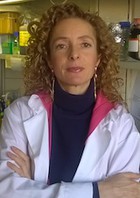
Funzione/Ruolo
Prima ricercatrice e team leader presso il Dipartimento di Oncologia e Medicina Molecolare dell’ Istituto Superiore di Sanità, Roma.
Percorso professionale
Dopo la laurea in Scienze Biologiche, all’Università La Sapienza di Roma nel 1994, prosegue la sua formazione accademica, presso lo stesso Ateneo con un dottorato in Scienze Immunologiche che consegue nel 1998. Nel frattempo inizia la sua attività di ricerca presso il laboratorio di Immunologia dell’Istituto di Patologia Generale dell’Università Tor Vergata di Roma e il laboratorio di Immunologia del CNR di Roma. Nel 1997 ottiene un incarico di ricerca presso il Dipartimento di Ematologia, Oncologia e Medicina Molecolare dell’Istituto Superiore di Sanità, dove nel 2005 diviene Prima Ricercatrice. Nel 2009 consegue un Master in Comunicazione della Scienza alla Scuola Internazionale Superiore di Studi Avanzati (SISSA) di Trieste. Dal 2008 al 2017 è Direttrice del Reparto di Biotecnologie Ematologiche e Oncologiche, Dipartimento di Oncologia e Medicina Molecolare. Coordina da molti anni progetti finanziati dall'AIRC (Associazione Italiana per la Ricerca sul Cancro) e dal Ministero della Salute tra cui il progetto COLOMED (COLOrectal cancer in MEDiterranean countries, www.colomed.it) per la creazione di un coordinamento inter-mediterraneo contro il tumore del colon.
Risultati scientifici
Ann Zeuner è una ricercatrice in campo biomedico, specializzata nella biologia delle cellule staminali tumorali e nello sviluppo di nuove terapie contro il cancro. Ha brevettato nuove e importanti tecnologie applicate alla terapia dei pazienti oncologici, tra cui un metodo per alleviare la tossicità da chemioterapia e un nuovo farmaco anticancro economico, efficace e dotato di minimi effetti collaterali. È costantemente impegnata nella divulgazione scientifica per le scuole, ed è autrice di un testo per le scuole superiori (Le cellule staminali, ed. Istituto Superiore di Sanità); tiene lezioni e seminari in scuole di tutti i livelli e corsi di formazione per insegnanti. Ha collaborato con l’Accademia dei Lincei nell'ambito del programma "I Lincei per una nuova didattica nella scuola: una rete nazionale" e conduce all'interno dell’ISS una unità operativa per la formazione degli studenti nell'ambito del programma "Alternanza Scuola Lavoro" del MIUR. Promuove infine importanti iniziative a favore della cooperazione internazionale tra scienziati oltre ad attività di formazione e di scambio di risorse nell’area mediterranea.
Attività editoriali e pubblicazioni
Ann Zeuner siede nel comitato editoriale diFrontiers in Molecular Targets and Therapeutics e del Notiziario dell’Istituto Superiore di Sanità. Ha pubblicato numerosi articoli su riviste scientifiche internazionali, comprese quelle più autorevoli in campo scientifico quali Science, Nature, Cell Stem Cell, Blood, Cancer Research.
Di seguito le sue più rilevanti:
(2017) Colace L, Boccia S, De Maria R, Zeuner A. Colorectal cancer: towards new challenges and concepts of preventive healthcare. Ecancer medical science. 2017 Nov 28;11:ed74. doi: 10.3332/ecancer.2017.ed74. eCollection 2017.
[2017] Manic G, Signore M, Sistigu A, Russo G, Corradi F, Siteni S, Musella M, Vitale S, De Angelis ML, Pallocca M, Amoreo CA, Sperati F, Di Franco S, Barresi S, Policicchio E, De Luca G, De Nicola F, Mottolese M, Zeuner A, Fanciulli M, Stassi G, Maugeri-Saccà M, Baiocchi M, Tartaglia M, Vitale I, De Maria R. CHK1-targeted therapy to deplete DNA replication-stressed, p53-deficient, hyperdiploid colorectal cancer stem cells. Gut. 2017 Apr 7 (Epub ahead of print).
[2015] Francescangeli F, Contavalli P, Gambara G, De Angelis ML, Baiocchi M, Pagliuca A, Fiorenzano A, Prezioso C, Boe A, Todaro M, Stassi G, Castro NP, Watanabe K, Salomon DS, De Maria R, Minchiotti G, Zeuner A. Dynamic regulation of the cancer stem cell compartment by Cripto-1 in colorectal cancer. Cell Death & Differentiation, 22(10):1700-13.
[2014] Zeuner A, Todaro M, Stassi G, De Maria R. Colorectal Cancer Stem Cells: From the Crypt to the Clinic. Cell Stem Cell. 2014 Dec 4;15(6):692-705.
[2014] Zeuner A, Francescangeli F, Contavalli P, Zapparelli G, Apuzzo T, Eramo A, Baiocchi M, De Angelis ML, Biffoni M, Sette G, Todaro M, Stassi G, De Maria R. Elimination of quiescent/slow-proliferating cancer stem cells by Bcl-XL inhibition in non-small cell lung cancer. Cell Death & Differentiation, 105.
[2013] Todaro M, Turdo A, Bartucci M, Iovino F, Dattilo R, Biffoni M, Stassi G, Federici G, De Maria R, Zeuner A. Erythropoietin activates cell survival pathways in breast cancer stem-like cells to protect them from chemotherapy. Cancer Research, 73(21):6393-400.
[2012] Francescangeli F, Patrizii M, Signore M, Federici G, Di Franco S, Pagliuca A, Baiocchi M, Biffoni M, Vitiani LR, Todaro M, De Maria R, Zeuner A. Proliferation State and Polo-like Kinase1 Dependence of Tumorigenic Colon Cancer Cells. Stem Cells, 30(9):1819-30.
[2011] Bartucci M, Dattilo R, Martinetti D, Todaro M, Zapparelli G, Di Virgilio A, Biffoni M, De Maria R, Zeuner A. Prevention of chemotherapy-induced anemia and thrombocytopenia by constant administration of stem cell factor. Clinical Cancer Research, 17(19):6185-91.
[2009] Zeuner A, Pedini F, Francescangeli F, Signore M, Girelli G, Tafuri A, De Maria R. Activity of the BH3 mimetic ABT-737 on polycythemia vera erythroid precursorcells Blood, 113:1522-5.
[2007] Zeuner A, Signore M, Martinetti D, Bartucci M., Peschle C., De Maria R. Chemotherapy-induced thrombocytopenia derives from the selective death of megakaryocyte progenitors and can be rescued by Stem Cell Factor. Cancer Research, 67:4767-4773.
[1999] De Maria R, Zeuner A, Eramo A, Domenichelli C, Bonci D, Grignani F, Srinivasula SM, Alnemri ES, Testa U, Peschle C. Negative regulation of erythropoiesis by caspase-mediated cleavage of GATA-1. Nature, 401:489-493.

Area STEM: Scienze biomediche e biotecnologie
Competenze: biologia molecolare, biologia strutturale, donne e scienza, rappresentazione grafica della biologia cellulare, molecolare e strutturale, ricerca interdisciplinare
Parole chiave: animazione molecolare, biologia strutturale, genere e scienza, grafica 3D
Regione: Lombardia
Funzione/Ruolo
Ricercatrice presso l’Istituto di Biofisica del CNR, Milano
Percorso professionale
Dopo la laurea in Biologia, nel 1987 a Milano, si sposta per una serie di esperienze post-doc tra diversi laboratori in Italia (CNR, ICGEB di Trieste) e all’estero (Inghilterra, Dipartimento di Biochimica all’Università di Birmingham, e USA, Salk Institute, nel laboratorio di Inder Verma). Dopo 15 anni di esperienza in vari laboratori, ottiene una posizione di ricercatrice all’Istituto di Fisiologia Clinica (IFC) del CNR di Pisa. Qui dopo un breve periodo, in seguito ad un gravissimo incidente, di cui non è responsabile, è costretta a lasciare il laboratorio.
Intraprende quindi una nuova fase della carriera scientifica, dedicandosi alla Rappresentazione Biologica, con l’idea di ricreare virtualmente il mondo cellulare utilizzando le tecniche sviluppate nel campo della Computer Graphics (film, video e video giochi). Oggi la disciplina è riconosciuta come ‘Grafica Molecolare’. Nel 2006 fonda l’Unità di Visualizzazione Scientifica presso l’IFC, ottenendo i primi finanziamenti per lavorare su progetti di grafica molecolare di cui seguono dettagli, più sotto, nei Risultati scientifici. Nel 2019 si traferisce all’istituto di Biofisica del CNR di Milano.
In questo periodo, avvia rapporti di collaborazione con gruppi di informatici, bioinformatici e biologi cubani, con cui ha progetti attivi e finanziati, sempre legati alla visualizzazione, in questo caso del virus Dengue.
Oggi Monica Zoppé è considerata una pioniera dell’Art and Science of Scientific Visualization, e riconosciuta come una tra le maggiori teoriche del campo, spesso invitata a congressi ed incontri perlopiù internazionali.
In parallelo, partecipa attivamente all’associazione Donne e Scienza, in cui da alcuni anni fa parte del direttivo. E’ nell’ambito di questa attività che contribuisce in modo sostanziale all’organizzazione del congresso europeo #WeTooInScience, svoltosi a Pisa nel 2018.
Durante e dopo il periodo del Covid (2020-22) si dedica anche ai problemi connessi alle ricerche pericolose, tipicamente svolte nei laboratori di alta sicurezza (i cosiddetti BSL-3 e BSL-4) e scrive un articolo in cui esplora le opportunità e i problemi associati agli esperimenti 'Gain of Function' e alla mancanza di trasparenza su molti progetti di ricerca.
Risultati scientifici
I risultati ottenuti nell’ambito della biologia sperimentale sono documentati nelle pubblicazioni accessibili online sul sito dell’ORCID.
Per quanto riguarda i lavori nell’ambito della Grafica molecolare, il principale risultato ottenuto riguarda la trasposizione in un sistema grafico, quindi visibile, del mondo molecolare, caratterizzato non solo da grande ricchezza e varietà, ma anche dall’azione di forze specifiche e diverse: per esempio, a livello molecolare, la gravità è irrilevante, mentre conta la vibrazione termica, e le forze in campo sono calcolabili come potenziali (elettrici, lipofilici, osmotici e di flussi termodinamici), di cui non si ha percezione visiva.
In dettaglio, i principali risultati ottenuti in questo ambito possono essere sintetizzati come di seguito:
· Elaborazione delle basi teoriche e pratiche della nuova disciplina della Visualizzazione Scientifica dedicata alla narrazione della biologia cellulare e molecolare.
· Costituzione del gruppo di lavoro interdisciplinare Scientific Visualization: www.scivis.it.
· Sviluppo e rilascio di più versioni di BioBlender, uno strumento che permette di introdurre dati scientifici rigorosi in Blender, uno dei pacchetti più avanzati di Computer Graphics, e l’unico completamente open source, sviluppato per il cinema e i videogiochi.
· Produzione di una serie di brevi animazioni cellulari, tutte liberamente disponibili sul sito www.scivis.it e sui maggiori canali online, e che hanno ottenuto anche riconoscimenti importanti sia in campo scientifico che cinematografico e tecnico.
· Introduzione del concetto di un codice visivo con cui rappresentare elementi invisibili, se non sconosciuti.
· Metodo per la preparazione di modelli tangibili di proteine, creati con gomma morbida, usati sia nella ricerca sia nell'educazione.
Attività editoriali e pubblicazioni
[2022] Zoppè, M.Colors in the representation of biological structures.Journal of Integrative Bioinformatics (JIB) 19(2):20220021.
[2022] Zoppè, M. (2022)High Level Biocontainment Laboratories: Risks and Necessity for Society. F1000-ResearchPreprint F100.DOI:10.12688/f1000research.111073.1
[2021] Alderighi, T., Giorgi, D., Malomo, L., Cignoni, P. and Zoppè, M. Computational design, fabrication and evaluation of rubber protein models. Computers & Graphics 98:177.
[2019] Zoppè, Monica G. Improving Gender Diversity in Science. In #WeTooInScience - Sexual Harassment in Higher Education Institutions and Research Organizations, CNR-IRPPS e-Publishing 235–41. Rome, Italy.
[2019] Zoppè, M., Loni,T., Carlone,I., Cianchetta,S.. Making of The Dark Anim: Technical and Scientific Notes. In 2019 International Conference on Cyberworlds (CW), 45–52. Kyoto, Japan: IEEE, 2019.
[2018] Caudai, C., Salerno, E., Zoppè, M. and Tonazzini, A. ChromStruct 4: A Python Code to Estimate the Chromatin Structure from Hi-C Data. IEEE/ACM Transactions on Computational Biology and Bioinformatics.
[2017] Zoppè, M Towards a perceptive understanding of cellular biology. Nat Meth 14(7): 662-665.
[2015] Zoppè, M La sindrome dell’impostore: Non sono davvero brava come sembra. In: Scienza, genere e società. Prospettive di genere in una società che si evolve. S. Avveduto, M. L. Paciello, T. Arrigoni, C. Mangia, L. Martinelli (eds.). Roma: CNR-IRPPS e-Publishing.
[2015] Zoppè, M. and Loni, T. The Representation of Electrostatics for Biological Molecules. In: W. Rocchia and M. Spagnuolo (eds.), Computational Electrostatics for Biological Applications, Springer International, Switzerland. 215-225.
[2014] Zoppè, M. Comunicare l’invisibile. La rappresentazione visiva di concetti biofisici / Communicating the Invisible. The Visual Representation of Biophysical Concepts. In: Scrittura e immagini nel dominio della scienza / Text and Image in the sicentific realm. A cura di/Edited by: R. Falcinelli, A. Filippini, G. Liberti, L. Perondi e L. Romei. Progetto Grafico, 25:50.
[2012] Andrei, R., Callieri, M., Zini, M.F., Loni, T., Maraziti, G. and Zoppè, M. Intuitive representation of surface properties of proteins using BioBlender. BMC Bioinformatics, 13(Suppl 4):S16.
[2011] Zoppè, M. Vedere l'invisibile. Le Scienze – Italian version of Scientific American. Roma, 515: p. 64-9.
Selezione di VIDEO
[2015] The Dark Anim, (5', 23''). A description of the serotoninergic synapse, and its activity in the healthy and depressed states. With subtitles in English, French and Italian.
[2012] TSH receptor on Red Blood cells, 2011 (3', 48''). Thyrotropin is a hormone that elicits a response from the thyroid gland. However, its receptor is also found on the surface of red blood cells. After binding, the dimeric receptor splits into two subunits, each of which leaves the lipid raft to associate with other proteins of the cellular surface.
[2010] PROTEIN EXPRESSIONS - Study N.3 (5', 01''). The video, also produced in 3D, is the final one in a series of tests in the development of BioBlender. It shows several moments of cellular life, from the surface to the cytoplasm and back to cell periphery and out. Watched >70.000 times (Vimeo statistics).
Riconoscimenti e premi
Il video PROTEIN EXPRESSIONS- Study n.3 ha ottenuto diversi premi in ambiti e tempi diversi:
[2009] Il Suzanne Award della Blender Foundation, Amsterdam 2009.
[2010] Premio della giuria, presso il Melzo Film Festival, 2010.
[2011] Selezionato come finalista al DogVille-Viladecan Film Festival, 2011.
[2012] ‘Art&Science contest’ alla Società Biofisica 2012, Primo premio. Per il video NANOPLANET .
[2013] 'AutoPACK visualization contest’, Quarto classificato, il video The Challenge of HIV Research, (2', 45'').
[2018] Partecipazione su invito allo Shonan Meeting su ‘Web Molecular Graphics: Emerging Technologies & Standards’, svoltosi in Giappone in Dicembre 2018.

Area STEM: Scienze biomediche e biotecnologie
Competenze: etologia, neuroscienze comportamentali
Parole chiave: comportamenti collettivi antipredatori, comportamento animale, comportamento umano, gioco d'azzardo, modelli animali di disturbi neurocomportamentali umani, predazione, propensione al rischio, ricerca di base, ricerca preclinica
Regione: Lazio
Funzione/Ruolo
Ricercatrice scientifica presso il Centro di Riferimento per le Scienze Comportamentali e la Salute Mentale dell'Istituto Superiore di Sanità (ISS), Roma
Percorso professionale
Dopo la laurea in Biologia Ecologica all'Università degli Studi di Parma nel 2005, prosegue gli studi conseguendo nel 2008 una laurea specialistica in Ecologia con indirizzo Comportamento Animale, presso la stessa università. Nel 2013 ottiene il dottorato di ricerca in Etologia, Ecologia Animale e Antropologia all'Università degli Studi di Firenze. Nel 2014 ha un contratto di ricerca a progetto della durata di 14 mesi presso l'Ospedale Pediatrico Bambino Gesù (RM), area di ricerca "Malattie multifattoriali e fenotipi complessi", l'anno successivo vince una borsa di studio della Fondazione di Noopolis per lavorare presso il Reparto di Neuroscienze comportamentali del Dipartimento di Biologia cellulare e Neuroscienze dell'Istituto Superiore di Sanità, lo stesso Dipartimento la ospita anche l'anno successivo. Nel 2016 vince il Premio "L'Oréal-UNESCO per le Donne e la Scienza" grazie al quale ha svolto attività di ricerca presso l'Istituto di Scienze e Tecnologie della Cognizione del CNR. Oggi è Ricercatrice presso il Centro di Riferimento per le Scienze Comportamentali e la Salute Mentale dell'Istituto Superiore di Sanità (ISS).
Risultati scientifici
Gli interessi di ricerca di Francesca Zoratto partono dall'Etologia, lo studio del comportamento animale, per arrivare alla comprensione di quello umano. Il suo ultimo progetto di ricerca presso l'Unità di Primatologia Cognitiva dell'Istituto di Scienze e Tecnologie della Cognizione (ISTC) del CNR verifica in due diverse specie animali, scimmie e ratti, la modulazione sociale della propensione al rischio. Lo scopo principale di questo e di altri suoi studi è applicare le scoperte in campo etologico al comportamento umano, nello specifico al mondo del gioco d'azzardo patologico. La propensione al rischio infatti non appartiene soltanto agli esseri umani, e lo studio del comportamento animale nelle medesime condizioni può aiutare a comprendere meglio i meccanismi psico-biologici sui quali si fondano le nostre dipendenze. Aumentando le conoscenze in campo comportamentale umano si intendono fornire maggiori elementi di comprensione alla comunità medica, ma anche elaborare proposte per la classe politica perché studi strategie più efficaci nella prevenzione e nel trattamento del gioco d'azzardo patologico.
Attività editoriali e pubblicazioni
Francesca Zoratto è autrice di numerosi articoli in riviste scientifiche internazionali peer-reviewed scientific journals.
Di seguito, una selezione:
(2018) Zoratto F., Sbriccoli M., Martinelli A., Glennon J.C., Macrì S., Laviola G. Intranasal oxytocin administration promotes emotional contagion and reduces aggression in a mouse model of callousness. Neuropharmacology, 143:250-267
(2018) Zoratto F., Oddi G., Gori E., Micucci A., De Petrillo F., Paglieri F., Adriani W., Laviola G, Addessi E. 2018. Social modulation of risky decision-making in rats (Rattus norvegicus) and tufted capuchin monkeys (Sapajus spp.). Behavioural Brain Research, 347:37-48.
(2018) Zoratto F., Cordeschi G., Grignani G., Bonanni R., Alleva E., Nascetti G., Mather J.A., Carere C. 2018. Variability in the “stereotyped” prey capture sequence of male cuttlefish (Sepia officinalis) could relate to personality differences. Animal Cognition, 21(6):773-785.
(2017) Zoratto F., Romano E., Pascale E., Pucci M., Falconi A., Dell’Osso B., Maccarrone M., Laviola G., D’Addario C., Adriani W. 2017. Down-regulation of serotonin and dopamine transporter genes in individual rats expressing a gambling-prone profile: a possible role for epigenetic mechanisms. Neuroscience, 340:101-116.
(2015) Canese R., Zoratto F., Altabella L., Porcari P., Mercurio L., De Pasquale F., Butti E., Martino G., Lacivita E., Leopoldo M., Laviola G., Adriani W. 2015. Persistent modification of forebrain networks and metabolism in rats following adolescent exposure to a 5-HT7 receptor agonist. Psychopharmacology, 232(1):75-89.
(2013) Zoratto F., Laviola G., Adriani W. 2013. Gambling proneness in rats during the transition from adolescence to young adulthood: a home-cage method. Neuropharmacology, 67:444-454.
(2012) Koot S., Zoratto F., Cassano T., Colangeli R., Laviola G., van den Bos R., Adriani W. 2012. Compromised decision-making and increased gambling proneness following dietary serotonin depletion in rats. Neuropharmacology, 62(4):1640-1650.
(2010) Zoratto F., Carere C., Chiarotti F., Santucci D., Alleva E. 2010. Aerial hunting behaviour and predation success by peregrine falcons Falco peregrinus on starling flocks Sturnus vulgaris. Journal of Avian Biology, 41(4):427-433.
Riconoscimenti e premi
Francesca Zoratto ha ricevuto numerosi premi e riconoscimenti per la sua carriera accademica, come borse di studio e assegni di ricerca. Nel 2016 vince il Premio "L'Oréal-UNESCO per le Donne e la Scienza 2016" nell'ambito del Programma "For Women in Science" della "Fondation L'Oréal" in collaborazione con L'Oréal Italia e la Commissione Nazionale Italiana per l'UNESCO.



